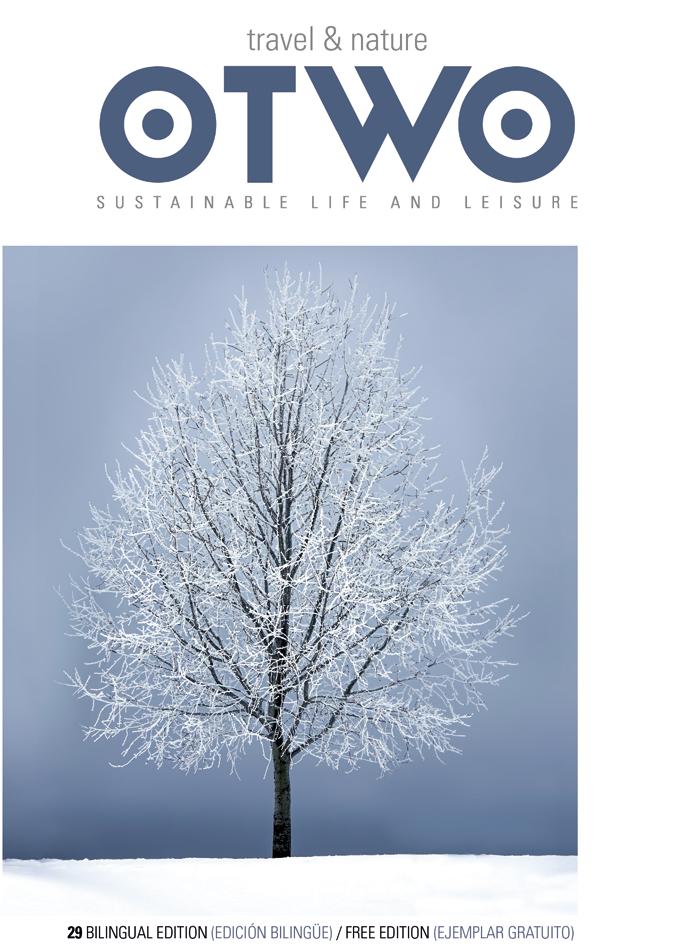
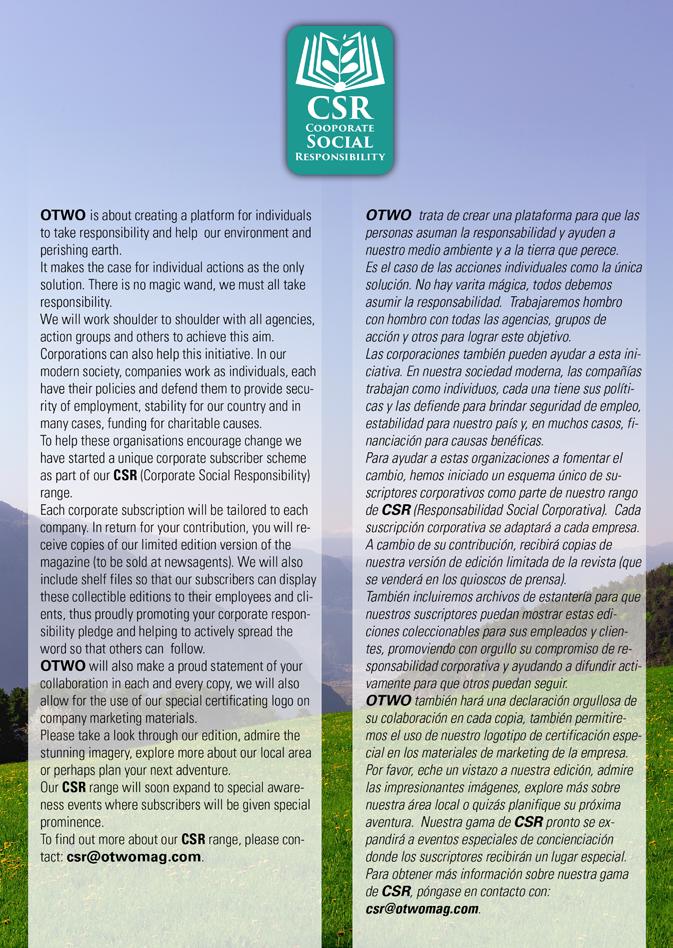

“Nothing burns like the cold¨.
George R.R. Martin.
«Nada arde como el frío».
George R.R. Martin

PHOTOGRAPHY: PEXELS.COM
“What good is the warmth of summer, without the cold of winter to give it sweetness.
John Steinbeck.
«De qué sirve el calor del verano, sin el frío del invierno para darle dulzura».
John Steinbeck.


“Stop worrying about the potholes in the road and celebrate the journey!¨. Barbara Hoffman.
«Deja de quejarte de los baches de la carretera y celebra el viaje». Barbara Hoffman.

This volume was published in December 2021 by Oxygene Ltd.
OTWO Issue 29
Oxygene Ltd.Business Centre. 19 George´s Lane.
GX11 1AA, Gibraltar Tel. +00350 54080331
www.oxygenecommunications.com
© Publishing: Oxygene Ltd.
Vanessa Byrne
Managing & Commercial Director
Juanjo Trujillo

Creative Director & Chief Designer
Sarah Birch Columnist & Translation
Photographer:
Keith Bensusan, Pexels, Juanjo Trujillo, M. Yélamo Mayorga, Anthony Pitaluga, Juan Luis González, In2Adventures, Ebikes Gibraltar, Proema.
Cover photo: Simon Berger.
Back Cover photo: Yaroslav Shuraev.

Printing:
Santa Teresa Industrias Graficas SA
All rights reserved. No part of this publication may be reproduced, stored in a retrieval system or transmitted in any form or by any means, electronic, mechanical, photocopying, recording or otherwise, without the prior permission in writing from the publishers.
All rights reserved. ISSN 2633-7401



Shorts
COP26, Is 1.5 still alive?
COP26: ¿Sigue vivo el 1.5?
Eco Passion: 10 simple steps to a more sustainable lifestyle.
Eco Passion: 10 sencillos pasos para un estilo de vida más sostenible.
Strangling the Florida Everglades. El estrangulamiento de los Everglades de Florida.

COAMBA: The mouth of the Guadalhorce. A natural laboratory. La desembocadura del Guadalhorce.Un laboratorio natural.
Gibraltar-Bordeaux:

Salamanca-Santiago de Compostela.



OTWO 29
2021 001
Experiences Quick Guide Nosha´s Corner Collection “The flower of the month”. Colección “La flor del mes”. Editorial 10 14 16 24 30 42 58 68 82 92 94 96 100 103 Nature´s Way Narrowing the Strait Clubhouse Minds Stop gesturing about environmental problems. And subscribe, it’s free Deja de gesticular por los problemas del medioambiente. Y suscríbete, es gratis www.otwomag.com

A note from the editor
Vanessa Byrne / Managing Director
Boom! It’s Christmas again! Trees up, lights everywhere and the buzz on the streets. Such a happy time of year!
As the season of giving (and excess) is upon us, I cannot be prouder of this edition for our to contribution of ideas to make our Christmas festivities as sustainable and eco-friendly as possible. A big Well Done to The Nautilus Project and Eco Passion for their constant commitment to this providing our readers with loads of different ideas and options.
The concept of “think before you buy” at Christmas time seems to be sometimes thrown out the window by impulsive, last-minute panic buying. However, we cannot forget the waste mountains of packaging and single use products found in our rubbish bins from our homes every morning on Christmas Day for our rubbish bins. Please think before you buy this year, it is for us to set the example for future generations, if there is to be a future generation. Simple changes like just wrapping our pressies in newspaper rather than buying gift wrapping paper for just the one use… simple things go a long way. It’s a very cool look anyways!!
A special highlight this month must be to the COP26 summit. The main issue in this year’s summit was to find out if it was indeed possible to keep to the essential 1.5 degrees or if that is impossible… scary or what? No question as to whether it is happening, but what extremes we will suffer and the dire repercussions of climate change.
There were positive pledges made during the summit however. In the end, there was a sense of despair after all, in this vital decade, each delay in making me-
aningful and radical changes will cost us the opportunity to stop catastrophic warming.
As said by Antonio Guterres in his closing message “Our fragile planet is hanging by a thread. We are still knocking on the door of climate catastrophe. It is time to go into emergency mode — or our chance of reaching net-zero will itself be zero.”
Check out Sarah’s full summary article on this on page 24.
In light of the COP26, there has been some positive changes made in Gibraltar too – single use plastic has finally been banned and the Gibraltar Climate Change Strategy was published. The plan was prepared in response to the 2019 Climate Emergency Motion and to fulfil the requirements of the Climate Change Act. It outlines both existing and planned measures to reduce emissions across various areas, including buildings, energy, transport and waste. This is a positive step, and we hope it brings big changes locally and soon. Check out the full information on our news shorts page – 16.
As 2021 draws to a close we would like to take this time to thank to all our readers, supporters, and collaborator’s. We are so appreciative of your continued support and motivation. We hope 2022 will provide you all with new adventures and opportunities that are yet to be realised.
From all of us at OTWO we wish you a Merry Christmas surrounded by those you love and the most prosperous and sustainable New Year!
Be kind to yourselves and each other.
11 10
ILLUSTRATION: JUANJO TRUJILLO
OTWO 29 / DECEMBER 2021 OTWO 29 / DECEMBER 2021
Una nota de la editora
¡Boom! ¡Ya es Navidad otra vez! Árboles colocados, luces por todas partes y el bullicio en las calles. ¡Una época del año tan feliz!
Ahora que llega la época de los regalos (y los excesos), no puedo estar más orgullosa de esta edición por nuestra aportación de ideas para que nuestras fiestas navideñas sean lo más sostenibles y ecológicas posible. Un gran agradecimiento a The Nautilus Project y a Eco Passion por su constante compromiso con esto, proporcionando a nuestros lectores un montón de ideas y opciones diferentes.
El concepto de «pensar antes de comprar» en Navidad parece que a veces se tira por la ventana por las compras impulsivas y de pánico de última hora. Sin embargo, no podemos olvidar las montañas de residuos de envases y productos de un solo uso que se encuentran en los cubos de basura de nuestras casas cada mañana del día de Navidad para nuestros cubos de basura. Por favor, piensa antes de comprar este año, nosotros debemos dar el ejemplo a las generaciones futuras, si es que hay una generación futura. Cambios sencillos como envolver nuestros regalos en papel de periódico en lugar de comprar papel de regalo para un solo uso... las cosas sencillas hacen mucho. De todas formas, ¡es un aspecto muy chulo!
Un momento especial de este mes debe ser la cumbre COP26. El tema principal de la cumbre de este año era averiguar si era realmente posible mantener el imprescindible 1,5 grados o si es imposible... ¿miedo o qué? No se trata de saber si está ocurriendo, sino de los extremos que sufriremos y de las nefastas repercusiones del cambio climático.
Sin embargo, se hicieron promesas positivas durante la cumbre. Al final, hubo una sensación de desesperación, ya que, en esta década vital, cada
retraso en hacer cambios significativos y radicales nos costará la oportunidad de detener el calentamiento catastrófico.
Como dijo Antonio Guterres en su mensaje de clausura «Nuestro frágil planeta pende de un hilo.
Seguimos llamando a la puerta de la catástrofe climática. Ha llegado el momento de pasar al modo de emergencia, o nuestra posibilidad de llegar a cero será en sí misma cero».
Consulta el artículo completo de Sarah sobre este tema en la página 24.
A la luz de la COP26, también se han producido algunos cambios positivos en Gibraltar: por fin se ha prohibido el plástico de un solo uso y se ha publicado la Estrategia de Cambio Climático de Gibraltar. El plan se elaboró en respuesta a la Moción de Emergencia Climática de 2019 y para cumplir los requisitos de la Ley de Cambio Climático. En él se describen las medidas existentes y previstas para reducir las emisiones en diversos ámbitos, como los edificios, la energía, el transporte y los residuos. Es un paso positivo, y esperamos que traiga grandes cambios a nivel local y pronto. Consulta la información completa en nuestra página de noticias cortas en la 16.
Ahora que el año 2021 llega a su fin, nos gustaría aprovechar este momento para dar las gracias a todos nuestros lectores, seguidores y colaboradores. Estamos muy agradecidos por vuestro continuo apoyo y motivación. Esperamos que el año 2022 os depare a todos nuevas aventuras y oportunidades aún por realizar.
De parte de todos los que formamos parte de OTWO, les deseamos una Feliz Navidad rodeados de vuestros seres queridos y un Año Nuevo de lo más próspero y sostenible.
Sed amables con vosotros mismos y con los demás.

13 12
ILLUSTRATION: JUANJO TRUJILLO
Vanessa Byrne / Directora General
OTWO 29 / DECEMBER 2021 OTWO 29 / DECEMBER 2021
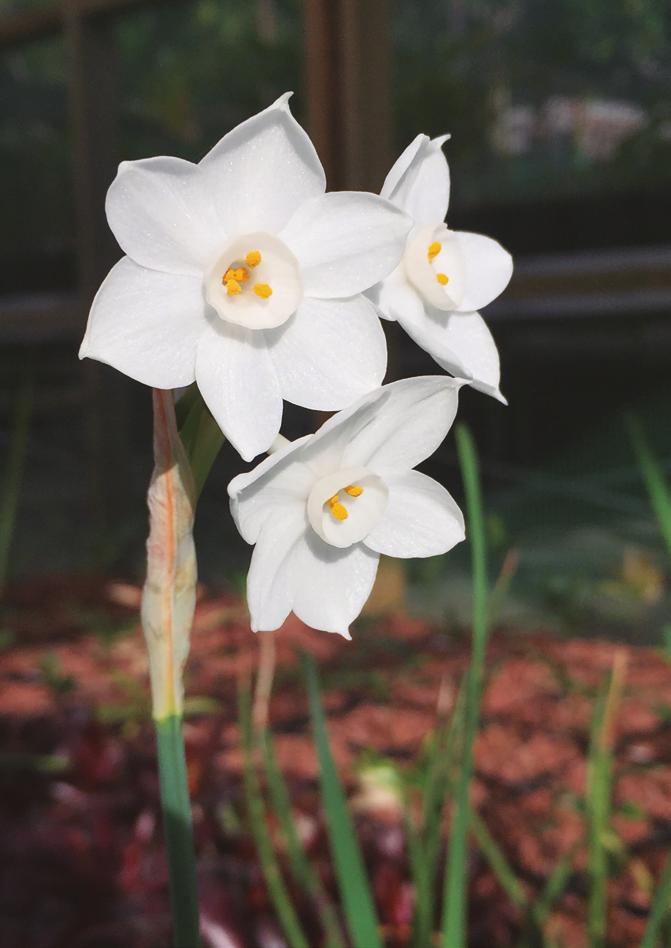

Narcissus papyraceus
Narciso blanco
Dr Keith Bensusan Director
DECEMBER / DICIEMBRE
Collection “The flower of the month”
PaperwhiteNarcissus
Gibraltar Botanic Gardens, The Alameda.
Many of the plants in the genus Narcissus are commonly referred to as Daffodils. The large, yellow Wild Daffodil Narcissus pseudonarcissus, in its many cultivated forms, is the species that we associate with the name daffodil. However, there are many others, all of them bulbs. Gibraltarians are very familiar with another species of Narcissus, perhaps without realising that this too is a form of daffodil. The Paperwhite Narcissus Narcissus papyraceus is a smaller, white species that produces very fragrant flowers. The flowers appear during the autumn and early winter in Gibraltar, and the species is thus associated with Christmas. It is common throughout Gibraltar and particularly in the Gibraltar Nature Reserve. Due to the very porous substrate of Gibraltar’s limestone, the flowers of plants wither much sooner than those of clay soils in nearby Spain, which can last until March. The Narcissus are distributed around the Mediterranean and Central Europe. Southern Iberia is a centre of Narcissus diversity and many species of different sizes, shapes and colours (white or yellow, or both) can be found in the hinterland, particularly in the mountains near Ronda and Grazalema. A second species, the Bunch-flowered Narcissus Narcissus tazetta, is rare in Gibraltar and may have been introduced by humans.
Muchas de las plantas del género Narcissus se denominan comúnmente narcisos. El narciso silvestre, grande y amarillo, Narcissus pseudonarcissus, en sus muchas formas cultivadas, es la especie que asociamos con el nombre de narciso. Sin embargo, hay muchas otras, todas ellas bulbosas. Los gibraltareños están muy familiarizados con otra especie de Narcissus, quizás sin darse cuenta de que también es una forma de narciso. El Narcissus papyraceus es una especie blanca más pequeña que produce flores muy fragantes. Las flores aparecen durante el otoño y principios del invierno en Gibraltar, por lo que la especie se asocia con la Navidad. Es común en todo Gibraltar y especialmente en la Reserva Natural de Gibraltar. Debido al sustrato muy poroso de la piedra caliza de Gibraltar, las flores de las plantas se marchitan mucho antes que las de los suelos arcillosos de la cercana España, que pueden durar hasta marzo. Los narcisos se distribuyen por el Mediterráneo y Europa Central. El sur de la Península Ibérica es un centro de diversidad de Narcissus y se pueden encontrar muchas especies de diferentes tamaños, formas y colores (blanco o amarillo, o ambos) en el interior, especialmente en las montañas cercanas a Ronda y Grazalema. Una segunda especie, el Narcissus tazetta, es rara en Gibraltar y puede haber sido introducida por el hombre.
14
15
OTWO 29 / DECEMBER 2021 OTWO 29 / DECEMBER 2021
Photographs: Keith Bensusan

GIBRALTAR’S CLIMATE CHANGE STRATEGY PUBLISHED
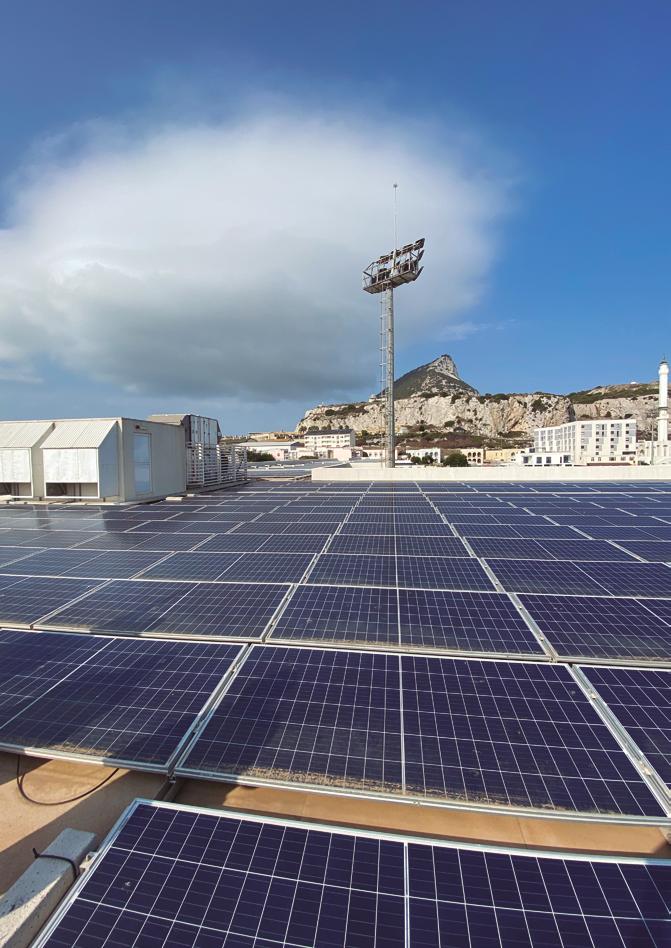
Gibraltar’s National Mitigation & Adaptation Plan (The Climate Change Strategy) was published online on the 12th of November. The plan was prepared in response to the 2019 Climate Emergency Motion and to fulfil the requirements of the Climate Change Act.
Several local NGOs and activists had been calling for its publication, particularly as all eyes have recently been on COP26 and the need for global action on climate change.
The Climate Change Strategy outlines both existing and planned measures to reduce Gibraltar’s emissions across various areas, including buildings, energy, transport and waste, and includes terms to ensure accountability and transparency on the Governments progress.
Under these terms, the government will report any progress made towards meeting emission reduction targets to Parliament to guarantee the promises made in the Climate Change Strategy are being delivered.
The plan includes pledges to make Gibraltar carbon neutral by 2030 and halve emissions by 2035; to increase the share of Gibraltar’s renewable energy to 20% by 2025, 50% by 2030 and 70% by 2045; to turn Gibraltar into a ‘smart city’ and to improve sustainable travel options such as walking, cycling and public transport; and encourage local fuel switch to fully electric vehicles.
A climate emergency budget will also set aside £1 million each year to help to drive the initiatives set out in the plan, administered via the Climate Action Fund.
The plan acknowledges the ‘indisputable effect that humans have had on the climate system and recognises that initiatives to address this need to be stepped up urgently’.
In a statement, Minister for Environment and Climate Change, the Hon Prof John Cortes commented, “I am very pleased that we have now produced our National Mitigation and Adaptation Plan, which sets out our ambitions with dealing with the reality of Climate Change and fulfilling our responsibilities as a nation. It will, of course, need to be updated regularly as we move forward and technologies develop, but it is in my view a good basis for progress.”
Se publica la estrategia de cambio climático de Gibraltar
El Plan Nacional de Mitigación y Adaptación de Gibraltar (La Estrategia de Cambio Climático) se publicó en línea el 12 de noviembre. El plan se elaboró en respuesta a la Moción de Emergencia Climática de 2019 y para cumplir los requisitos de la Ley de Cambio Climático.
Varias ONG y activistas locales habían pedido su publicación, sobre todo porque recientemente todas las miradas se han dirigido a la COP26 y a la necesidad de una acción global sobre el cambio climático.
La Estrategia sobre el Cambio Climático expone las medidas existentes y previstas para reducir las emisiones de Gibraltar en diversos ámbitos, como los edificios, la energía, el transporte y los residuos, e incluye condiciones para garantizar la responsabilidad y la transparencia sobre los avances del Gobierno.
De acuerdo con estas condiciones, el gobierno informará al Parlamento de los progresos realizados en el cumplimiento de los objetivos de reducción de emisiones, para garantizar que se cumplen las promesas hechas en la Estrategia sobre el Cambio Climático.
El plan incluye el compromiso de conseguir que Gibraltar sea neutro en carbono para 2030 y de reducir las emisiones a la mitad para 2035; de aumentar la cuota de energía renovable de Gibraltar hasta el 20% para 2025, el 50% para 2030 y el 70% para 2045; de convertir Gibraltar en una "ciudad inteligente" y de mejorar las opciones de desplazamiento sostenible, como los desplazamientos a pie, en bicicleta y en transporte público; y de fomentar el cambio de combustible local a vehículos totalmente eléctricos.
Un presupuesto de emergencia climática reservará también 1 millón de libras esterlinas cada año para ayudar a impulsar las iniciativas establecidas en el plan, administradas a través del Fondo de Acción Climática.
El plan reconoce el «efecto indiscutible que el ser humano ha tenido en el sistema climático y reconoce que hay que intensificar urgentemente las iniciativas para abordarlo».
En una declaración, el Ministro de Medio Ambiente y Cambio Climático, el Honorable Prof. John Cortes, comentó: «Estoy muy satisfecho de que hayamos elaborado nuestro Plan Nacional de Miti-
OTWO 29 / DECEMBER 2021 17 16
OTWO 29 / DECEMBER 2021
gación y Adaptación, que establece nuestras ambiciones a la hora de afrontar la realidad del Cambio Climático y de cumplir nuestras responsabilidades como nación. Por supuesto, tendrá que actualizarse periódicamente a medida que avancemos y se desarrollen las tecnologías, pero, en mi opinión, es una buena base para avanzar».

SINGLE-USE PLASTIC BAN IN FULL EFFECT
The Department of the Environment and Climate Change has issued a statement reminding the public that various single-use plastic items have been banned in Gibraltar.
New legislation came into effect on the 1st of August 2021, with several plastic items now banned from importation into Gibraltar in any quantity.
The plastic items no longer permitted are cotton bud sticks; cutlery; plates; bowls; toothpicks; straws; beverage stirrers; balloon sticks; food containers made from expanded polystyrene; beverage containers made from expanded polystyrene, inclu-
ding their caps and lids; and cups made of expanded polystyrene, including their caps and lids.
The government also reminded the public and local businesses that bags made wholly or partly from plastic and of a thickness of less than 100 microns are also banned from importation and will be confiscated on discovery.
Under the current legislation, items referred to as “made of plastic” include ‘bio-based plastic’, so-called ‘biodegradable plastic’, ‘oxo-degradable plastic’ and ‘polymer’ based items.
The statement issued by the Department of the Environment said: “It is important to remember that both our terrestrial and marine environments are not exclusively for human use. We share these spaces with a multitude of wildlife. Experts estimate that up to a million birds and 100,000 marine fauna are killed each year as a result of plastic debris including plastic bags.
“Leatherback, green and Loggerhead turtles can be found in the Mediterranean and the Black Sea. Leatherback turtles have seen their population numbers drop by 95% due to plastic inges -

tion. Plastic bags appear to turtles as jellyfish, their staple diet, and being unable to distinguish between plastic bags and jellyfish, they will consume these. The plastic blocks their digestive system and leads to their death from starvation. Currently, all three species of turtles are endangered. If plastic bag pollution continues, these species could become extinct.
La prohibición de los plásticos de un solo uso entra en vigor
El Departamento de Medio Ambiente y Cambio Climático ha emitido un comunicado recordando al público que se han prohibido varios artículos de plástico de un solo uso en Gibraltar.
La nueva legislación entró en vigor el 1 de agosto de 2021, y ahora se prohíbe la importación a Gibraltar de varios artículos de plástico en cualquier cantidad.
Los artículos de plástico que ya no están permitidos son los bastoncillos de algodón, los cubiertos, los platos, los cuencos, los palillos de dientes, las pajitas, los agitadores de bebidas, los palos de globos, los envases de alimentos fabricados con poliestireno expandido, los envases de bebidas fabricados con poliestireno expandido, incluidos sus tapones y tapas, y los vasos fabricados con poliestireno expandido, incluidos sus tapones y tapas.
El gobierno también ha recordado al público y a los comercios locales que las bolsas fabricadas total o parcialmente con plástico y de un grosor inferior a 100 micras también están prohibidas para la importación y serán confiscadas al ser descubiertas.
Según la legislación actual, los artículos denominados "de plástico" incluyen el "plástico de base biológica", el llamado "plástico biodegradable", el "plástico oxodegradable" y los artículos basados en "polímeros".
La declaración emitida por el Departamento de Medio Ambiente decía "Es importante recordar que tanto nuestro entorno terrestre como el marino no son de uso exclusivamente humano. Compartimos estos espacios con una multitud de animales salvajes. Los expertos calculan que hasta un millón de aves y 100.000 animales marinos
mueren cada año como consecuencia de los residuos plásticos, incluidas las bolsas de plástico.
"Las tortugas laúd, verde y boba se encuentran en el Mediterráneo y el Mar Negro. Las tortugas laúd han visto disminuir su población en un 95% debido a la ingestión de plásticos. Para las tortugas, las bolsas de plástico parecen medusas, su dieta básica, y al no poder distinguir entre las bolsas de plástico y las medusas, las consumen. El plástico bloquea su sistema digestivo y las lleva a la muerte por inanición. Actualmente, las tres especies de tortugas están en peligro de extinción. Si la contaminación por bolsas de plástico continúa, estas especies podrían extinguirse.
EXHIBITION CELEBRATING CENTENARY OF THE ESTABLISHMENT OF THE CITY COUNCIL
An exhibition hosted by the Gibraltar National Archives (GNA) marking 100 years since the creation of the City Council opened on the 10th of November at City Hall.
The aims of the ‘Centenary of the City Council: First Step to Self-Government, 1921-2021’ Exhibition is to introduce the municipal institution that was the City Council of Gibraltar to younger generations, highlighting how in 1921, for the first time in local history, Gibraltarians had the opportunity to elect their Council representatives. Secondly, the exhibition aims to honour and remember the protagonists—the councillors selected or appointed, the faithful hardworking staff and many others that supported the Council in its forty-eight years of existence.
Two hundred and forty-three captioned, dated, and numbered images are on display, together with a number of murals and a Council Timeline and divided into eleven sections: Forerunners, Creation & Premises, Elections, Personalities, Responsibilities, Suspension, Housing, Leisure, Freedom of the City, Concepts and Abolition.
The exhibition was put together using material held at the Gibraltar National Archives, together with material donated by the public and took nearly a year to put together.
Following the exhibition’s inauguration, Deputy Chief Minister Dr Joseph Garcia said: “This exhibition brings to life one important component of

19 18
OTWO 29 / DECEMBER 2021 OTWO 29 / DECEMBER 2021
our long and difficult path to self-government”. He thanked the Minister for Culture, the Mayor for facilitating the use of City Hall, and Government Archivist Anthony Pitaluga, the GNA, volunteers and contributors for making the exhibition a reality.
The Oxygene team are proud to have been involved in the design work and printing for the exhibition and would like to thank the GNA for selecting Oxygene Communications Ltd to help bring the exhibition to life.
The exhibition is open to the public until Friday 17th December 2021 and is open Monday to Friday from 10 am - 7 pm.


EXPOSICIÓN PARA CELEBRAR EL CENTENARIO DE LA CREACIÓN DEL AYUNTAMIENTO
El 10 de noviembre se inauguró en el Ayuntamiento una exposición organizada por los Archivos Nacionales de Gibraltar (GNA) para conmemorar los 100 años de la creación del Ayuntamiento.
El objetivo de la exposición "Centenario del Ayuntamiento: Primer paso hacia el autogobierno, 1921-
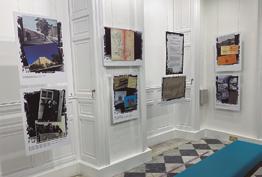
2021' es presentar la institución municipal que fue el Ayuntamiento de Gibraltar a las generaciones más jóvenes, destacando cómo en 1921, por primera vez en la historia local, los gibraltareños tuvieron la oportunidad de elegir a sus representantes en el Consejo. En segundo lugar, la exposición pretende honrar y recordar a los protagonistas: los concejales elegidos o nombrados, el personal fiel y trabajador y muchos otros que apoyaron al Consejo en sus cuarenta y ocho años de existencia.
Se exponen 233 imágenes tituladas, fechadas y numeradas, junto con una serie de murales y una línea de tiempo del Consejo, divididas en once secciones: Precursores, Creación y Locales, Elecciones, Personalidades, Responsabilidades, Suspensión, Vivienda, Ocio, Libertad de la Ciudad, Conceptos y Abolición.
La exposición se ha realizado con el material de los Archivos Nacionales de Gibraltar, junto con el material donado por el público, y ha llevado casi un año de trabajo.
Tras la inauguración de la exposición, el Viceministro Principal, el Dr. Joseph García, dijo: «Esta exposición da vida a un componente importante de nuestro largo y difícil camino hacia el autogobierno». Agradeció al Ministro de Cultura, al Alcalde por facilitar el uso del Ayuntamiento, y al Archivero del Gobierno Anthony Pitaluga, a la GNA, a los voluntarios y a los colaboradores por hacer realidad la exposición.
El equipo de Oxygene se enorgullece de haber participado en el trabajo de diseño e impresión de la exposición y desea agradecer a la GNA por haber elegido a Oxygene Communications Ltd para ayudar a dar vida a la exposición.
La exposición está abierta al público hasta el viernes 17 de diciembre de 2021 y está abierta de lunes a viernes de 10 a 19 horas.

21 20
OTWO 29 / DECEMBER 2021 OTWO 29 / DECEMBER 2021


COP26: ¿Sigue vivo el 1.5?
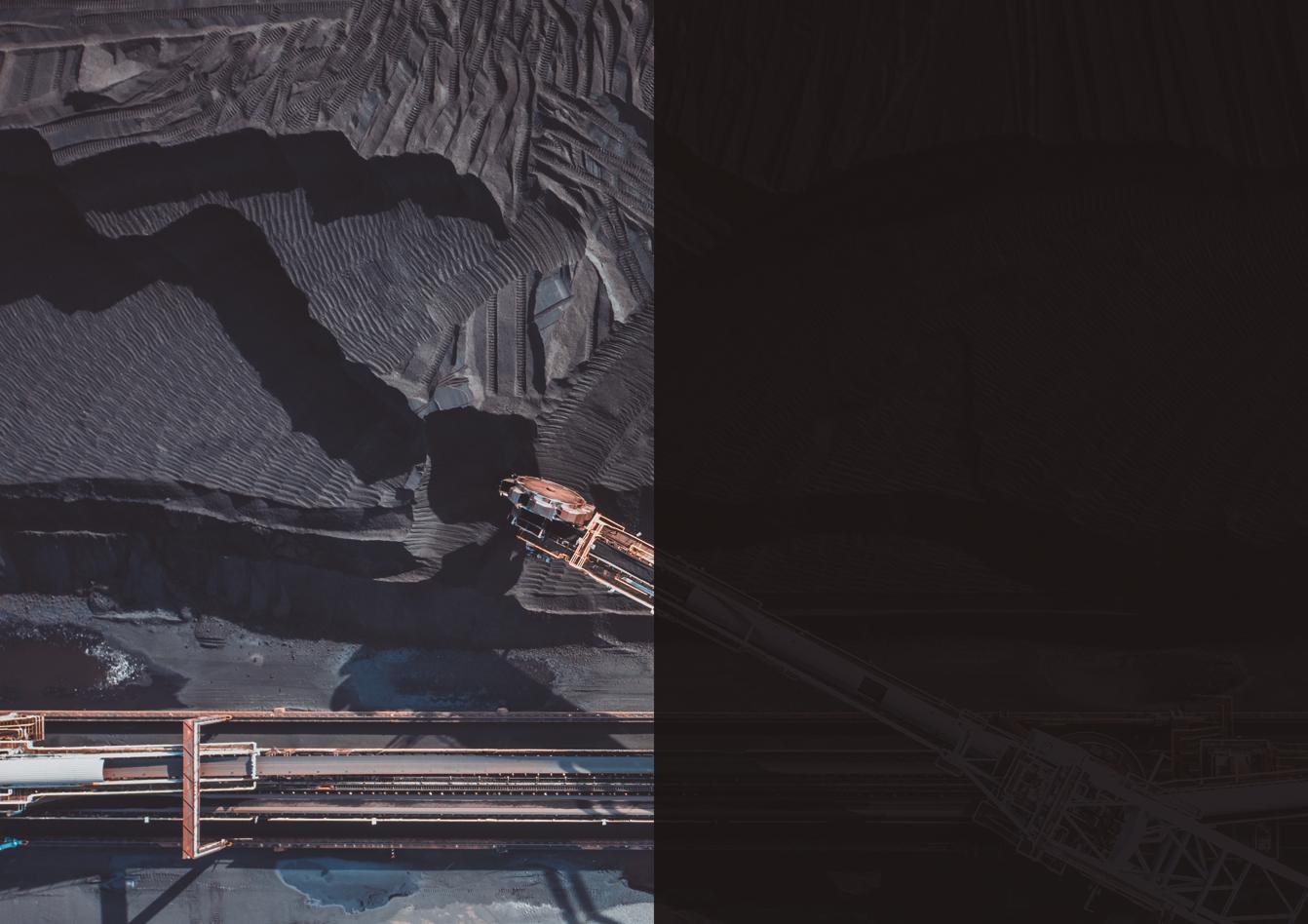
Following two weeks of negotiations under the banner of ‘keeping 1.5 alive,’ COP26 ended with a mixture of outright disappointment and muted optimism.
In the lead up to the conference, expectations also varied. After a year of extreme weather events and dire warnings from the IPCC, many world leaders promised great things from the summit. Others, however, anticipated less ambitious outcomes and pledges.
So, what was agreed at the summit, and are we any closer to avoiding a climate catastrophe? Here is a summary of some of the main pledges and outcomes of COP26.
Glasgow Climate Pact
The Glasgow Pact was a surprise addition to COP26, with 197 countries signing up to the lengthy agreement comprising of a range of commitments such as cutting emissions, finance for developing countries and reducing coal use. Significantly, the pact also ‘requests’ that countries ‘revisit and strengthen’ their 2030 climate pledges by the end of 2022.
Coal
An agreement to reduce coal use came down to the wire, with the summit running over by a day as countries differed over the terminology used in the final draft. In the end, more than 40 countries have pledged to ‘“accelerate efforts towards the phasedown of unabated coal power,” rather than the initial stronger commitment to ‘accelerate the phasing-out of coal”.
Tras dos semanas de negociaciones bajo el lema de "mantener vivo el 1.5", la COP26 terminó con una mezcla de decepción absoluta y optimismo apagado. En los preparativos de la conferencia, las expectativas también variaron. Tras un año de fenómenos meteorológicos extremos y advertencias funestas del IPCC, muchos líderes mundiales prometieron grandes cosas para la cumbre. Otros, sin embargo, preveían resultados y compromisos menos ambiciosos. Entonces, ¿qué se acordó en la cumbre y estamos más cerca de evitar una catástrofe climática? He aquí un resumen de algunas de las principales promesas y resultados de la COP26.
Pacto Climático de Glasgow
El Pacto de Glasgow fue una adición sorpresa a la COP26, con 197 países que firmaron el largo acuerdo que comprende una serie de compromisos como la reducción de emisiones, la financiación para los países en desarrollo y la reducción del uso del carbón. Cabe destacar que el pacto también pide a los países que «revisen y refuercen» sus compromisos climáticos para 2030 antes de finales de 2022.
Carbón
El acuerdo para reducir el uso del carbón estuvo a punto de alcanzarse, ya que la cumbre se retrasó un día porque los países discreparon sobre la terminología utilizada en el borrador final. Al final, más de 40 países se comprometieron a «acelerar los esfuerzos para la eliminación progresiva de la energía del carbón», en
OTWO 29 / DECEMBER 2021 25 24 OTWO 29 / DECEMBER 2021
Author: Sarah Birch

China and India intervened at the eleventh hour, applying significant pressure to the negotiations by resisting the term ‘phase out’ much to the frustration of more determined countries and activists.
However, this is the first time in 30 years of UN summits that coal and fossil fuels have been explicitly referenced in a climate agreement.
Coal is responsible for 40% of global CO2 emissions each year.
Methane
An initiative to cut 30% of methane emissions by 2030 was signed by more than 100 countries.
The US and EU put forward the Global Methane Pact, with other large emitters such as Brazil, Indonesia, Nigeria, Pakistan and Mexico signing up.
Unfortunately, China, Russia, India and Iran, all of which emit large amounts of methane, did not sign. It is hoped that they will join further down the line.
Methane is a potent greenhouse gas and is currently responsible for a third of human-generated warming. Methane emissions primarily come from burning fossil fuels and livestock agriculture. Cutting methane emissions could prevent 0.1-0.2 degrees of global warming by 2050.
Fossil Fuels and Emissions
Aside from the agreements on coal and methane, more than 30 countries and public finance institutions, including the UK, US, Spain, Canada, Germany, the Netherlands, the European Investment Bank and the East African Development Bank, pledged to stop financing overseas fossil fuel development and redirect those funds to green energy by the end of 2022.
World leaders also agreed to “phase-out inefficient fuel subsidies.” Although, no dates for this commitment have been decided.
Transport
Twenty-two countries signed up to the Clydebank Declaration, an initiative to create the world’s first zero-emissions shipping routes.
The plan is to establish at least six green maritime routes by 2025, with the hopes of creating many more by 2030.
Thirty-four countries pledged to halt the sale of petrol and diesel vehicles by at least 2040, with leading countries expected to stop selling non-electric
lugar del compromiso inicial más fuerte de «acelerar la eliminación progresiva del carbón».
China e India intervinieron en el último momento, ejerciendo una importante presión en las negociaciones al resistirse al término "eliminación progresiva", para frustración de los países y activistas más decididos.
Sin embargo, es la primera vez en 30 años de cumbres de la ONU que el carbón y los combustibles fósiles se mencionan explícitamente en un acuerdo climático.
El carbón es responsable del 40% de las emisiones mundiales de CO2 cada año.
Metano
Más de 100 países firmaron una iniciativa para reducir el 30% de las emisiones de metano para 2030.
Estados Unidos y la UE presentaron el Pacto Mundial sobre el Metano, al que se adhirieron otros grandes emisores como Brasil, Indonesia, Nigeria, Pakistán y México.
Lamentablemente, China, Rusia, India e Irán, todos ellos emisores de grandes cantidades de metano, no firmaron. Se espera que se unan más adelante.
El metano es un potente gas de efecto invernadero y actualmente es responsable de un tercio del calentamiento generado por el hombre. Las emisiones de metano proceden principalmente de la quema de combustibles fósiles y de la ganadería. La reducción de las emisiones de metano podría evitar entre 0,1 y 0,2 grados de calentamiento global para 2050.
Combustibles fósiles y emisiones
Además de los acuerdos sobre el carbón y el metano, más de 30 países e instituciones financieras públicas, como el Reino Unido, Estados Unidos, España, Canadá, Alemania, los Países Bajos, el Banco Europeo de Inversiones y el Banco de Desarrollo de África Oriental, se comprometieron a dejar de financiar el desarrollo de los combustibles fósiles en el extranjero y a reorientar esos fondos hacia la energía verde para finales de 2022.
Los líderes mundiales también acordaron «eliminar gradualmente las subvenciones a los combustibles ineficientes». Aunque no se han decidido fechas para este compromiso.
Transporte
Veintidós países firmaron la Declaración de Cly-
OTWO 29 / DECEMBER 2021 27 26 OTWO 29 / DECEMBER 2021
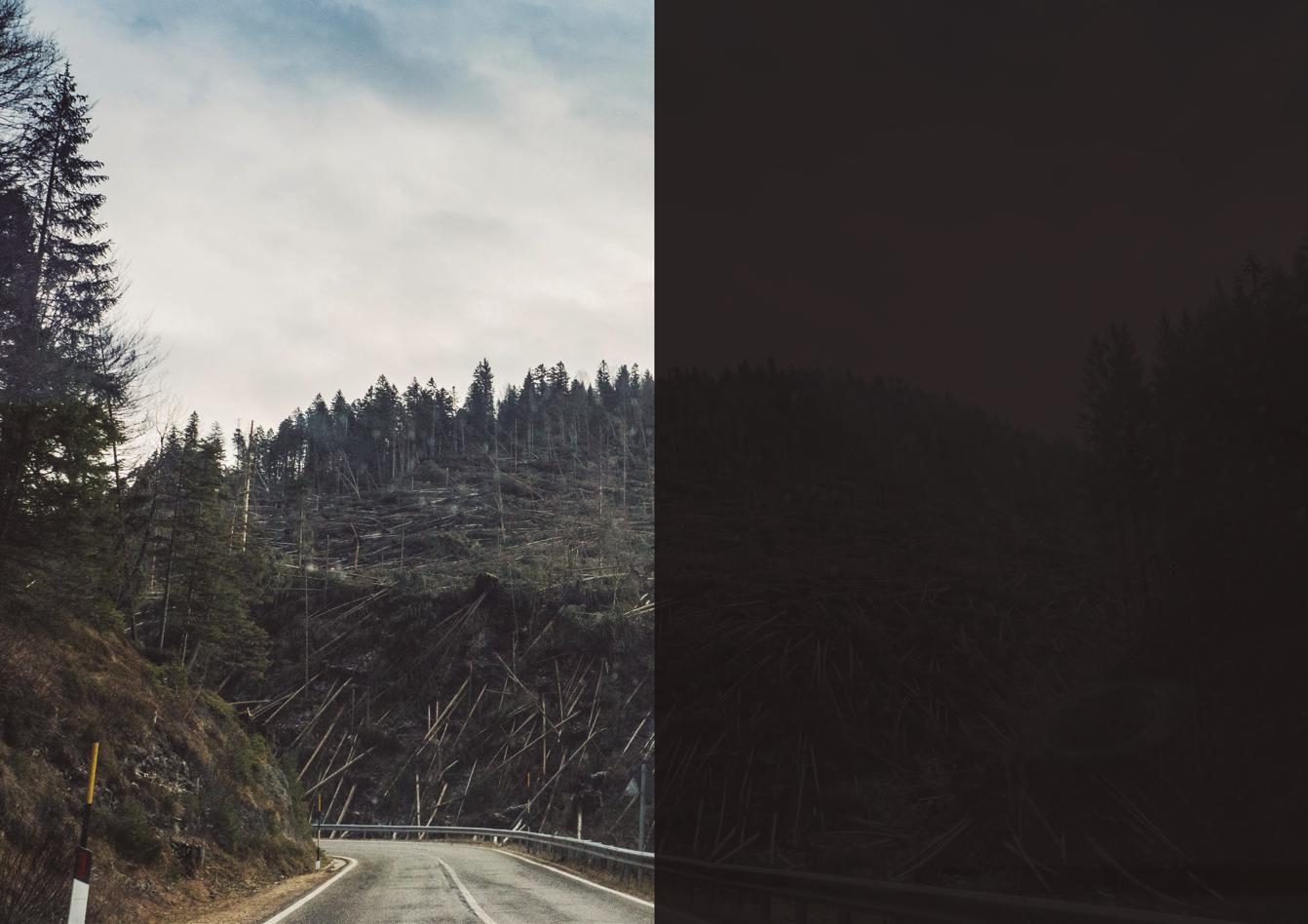
vehicles by 2035. Some cities, car manufacturers and financial institutions also signed the agreement.
However, three of the world’s largest car manufacturers, China, the US and Germany, did not commit to the agreement. Toyota and Volkswagen, the two largest car manufacturing companies in the world, also abstained.
Deforestation
One of the most prominent announcements of COP26 was a pledge to halt and reverse deforestation and land degradation by 2030.
More than 100 countries signed up including, Brazil, Russia, Canada, Colombia, Indonesia, and the Democratic Republic of the Congo, representing 85% of the world’s forests.
A second new deal, the Forest, agriculture and commodity trade (FACT) statement, was signed by 28 countries representing 75% of global trade in key commodities. It aims to support sustainable trade between commodity-producing and consuming countries.
Critics pointed out that previous similar pledges have failed to stop deforestation. But with $20bn in public and private funding allocated to this new deal, this agreement is better financed. What is unclear is how this pledge will be policed.
Green Technologies
More than 40 countries have agreed to accelerate the availability and affordability of clean technology worldwide by 2030 and create 20 million jobs.
The UK, US, China, India, the EU and Australia are amongst the nations who have pledged to align and coordinate investment and step-up production to ensure clean technology alternatives are cheaper and more accessible than their fossil fuel counterparts.
If fully implemented, the first five goals, or the “Glasgow breakthroughs”, could collectively cover more than 50% of global emissions.
The initial five goals include plans to tackle the large CO2 emitting sectors of Power, Road Transport, Steel and Agriculture and to ramp up the availability and affordability of Hydrogen technologies.
Finance & Developing Countries
In 2009, at the UN Climate Summit in Copenha-
debank, una iniciativa para crear las primeras rutas marítimas del mundo con cero emisiones.
El plan es establecer al menos seis rutas marítimas verdes para 2025, con la esperanza de crear muchas más para 2030.
Treinta y cuatro países se comprometieron a dejar de vender vehículos de gasolina y diésel al menos en 2040, y se espera que los principales países dejen de vender vehículos no eléctricos en 2035. Algunas ciudades, fabricantes de automóviles e instituciones financieras también firmaron el acuerdo.
Sin embargo, tres de los mayores fabricantes de automóviles del mundo, China, Estados Unidos y Alemania, no se comprometieron con el acuerdo. Toyota y Volkswagen, los dos mayores fabricantes de automóviles del mundo, también se abstuvieron.
Deforestación
Uno de los anuncios más destacados de la COP26 fue el compromiso de detener e invertir la deforestación y la degradación del suelo para 2030.
Más de 100 países firmaron, entre ellos Brasil, Rusia, Canadá, Colombia, Indonesia y la República Democrática del Congo, que representan el 85% de los bosques del mundo.
Un segundo acuerdo nuevo, la declaración sobre bosques, agricultura y comercio de productos básicos (FACT), fue firmado por 28 países que representan el 75% del comercio mundial de productos básicos clave. Su objetivo es apoyar el comercio sostenible entre los países productores y consumidores de materias primas.
Los críticos señalan que compromisos similares anteriores no han logrado detener la deforestación. Pero con 20.000 millones de dólares de fondos públicos y privados asignados a este nuevo acuerdo, éste está mejor financiado. Lo que no está claro es cómo se controlará este compromiso.
Tecnologías verdes
Más de 40 países han acordado acelerar la disponibilidad y asequibilidad de las tecnologías limpias en todo el mundo para 2030 y crear 20 millones de puestos de trabajo.
El Reino Unido, Estados Unidos, China, India, la UE y Australia son algunos de los países que se han comprometido a alinear y coordinar las inversiones y a aumentar la producción para garantizar que las al-
OTWO 29 / DECEMBER 2021 29 28 OTWO 29 / DECEMBER 2021

gen, an agreement was reached to provide $100bn a year by 2020 to developing nations to help them reduce emissions and adapt to the impacts of climate change. Rich nations failed to keep that promise, and poorer countries have called for action to increase funding through grants, loans and private investment to support transitioning towards renewable energies, green technologies, adaptation, and additional funding for loss and damage caused by climate change.
Transitioning away from a fossil fuel economy is a challenge for all nations, but it is even more so for developing countries with limited funds to finance new technologies and safeguard against extreme climatic conditions.
Poorer nations are already suffering the effects of climate change and in future, bear the heaviest burden from rising temperatures, extreme weather events and rising sea levels as the climate crisis continues. Historically, many of these developing nations are also some of the world’s lowest emitters of CO2.
Money, as usual, was a big bone of contention throughout the lead-up and during COP26 in all areas of discussions. Financing for developing nations was a particular cause for dispute, as richer nations pushed back and resisted taking responsibility for their role in causing the climate crisis.
Several countries pledged to up contributions to meet the $100bn a year target by 2023 and exceed it by 2025. The UK promised $11.6bn between 2020 and 2025, the US pledged $11.4bn a year by 2024, and Spain will increase its pledge by 50% a year from 2025 to $1.55bn. Canada, Australia, Japan and Norway also committed to raising their contributions over the next few years.
It is hard to calculate the total these commitments add up to, but estimates predict that contributions will reach $96bn a year by the end of 2022, and $100bn will be exceeded by 2025.
Funding for loss and damage was unfortunately not agreed upon, with further discussions delayed until next year. Loss and damage refer to impacts of climate change that are non-reversible and unavoidable, such as severe floods and droughts that are already affecting much of the developing world.
Many critics and developing nations have argued
ternativas de tecnología limpia sean más baratas y accesibles que sus homólogas de combustibles fósiles.
Si se aplican en su totalidad, los cinco primeros objetivos, o los "avances de Glasgow", podrían cubrir colectivamente más del 50% de las emisiones mundiales.
Los cinco objetivos iniciales incluyen planes para abordar los grandes sectores emisores de CO2 de la energía, el transporte por carretera, la siderurgia y la agricultura y para aumentar la disponibilidad y asequibilidad de las tecnologías del hidrógeno.
Finanzas y países en desarrollo
En 2009, en la Cumbre del Clima de la ONU celebrada en Copenhague, se acordó proporcionar 100.000 millones de dólares anuales para 2020 a las naciones en desarrollo para ayudarles a reducir las emisiones y adaptarse a los impactos del cambio climático. Las naciones ricas no cumplieron esa promesa, y los países más pobres han pedido que se aumenten los fondos a través de subvenciones, préstamos e inversiones privadas para apoyar la transición hacia las energías renovables, las tecnologías verdes, la adaptación y la financiación adicional para las pérdidas y daños causados por el cambio climático.
La transición para abandonar la economía de los combustibles fósiles es un reto para todas las naciones, pero lo es aún más para los países en desarrollo, que cuentan con fondos limitados para financiar nuevas tecnologías y protegerse de las condiciones climáticas extremas. Las naciones más pobres ya están sufriendo los efectos del cambio climático y, en el futuro, soportarán la mayor carga por el aumento de las temperaturas, los fenómenos meteorológicos extremos y la subida del nivel del mar a medida que la crisis climática continúe. Históricamente, muchas de estas naciones en desarrollo son también algunas de las que menos CO2 emiten en el mundo. El dinero, como es habitual, fue un gran motivo de desacuerdo durante los preparativos y la COP26 en todos los ámbitos de debate. La financiación de los países en desarrollo fue un motivo especial de disputa, ya que las naciones más ricas se opusieron y se resistieron a asumir la responsabilidad de su papel como causantes de la crisis climática.
Varios países se comprometieron a aumentar sus contribuciones para alcanzar el objetivo de 100.000 millones de dólares anuales en 2023 y superarlo en
OTWO 29 / DECEMBER 2021 31 30 OTWO 29 / DECEMBER 2021

that $100bn a year is the absolute minimum required to help poorer countries adapt. Ultimately, trillions are needed to help countries adapt, rebuild and save lives.
US-China agreement
In a surprising and unexpected move, the US and China signed a joint declaration that both nations will work together to tackle climate change over this coming critical decade.
The world’s two largest CO2 emitters made several joint pledges including reducing methane emissions, transitioning to clean energy, and decarbonisation and protecting forests.
With China’s previous unwillingness to discuss coal emissions, the joint declaration was seen as a good step forward. China’s involvement seemed to demonstrate some recognition for a need to act against climate change.
Other notable announcements Rules for climate transparency and reporting has been a sticking point since the Paris Accords in 2015, but an agreement was finally struck at COP26.
Previously, only countries considered wealthy back in 1992 by the UNFCCC had to report their emissions and progress. However, the list was not modified to include countries such as India, China and Iran that have grown significantly since the early nineties and, as a result, now emit large amounts of CO2. The new framework means that all countries now have to report their emissions, their progress towards climate pledges, and their climate finance contributions, at least every two years.
Forty-five countries, including the UK, Brazil and Germany, pledged urgent action on making farming more sustainable on top of the agreed commitments to cut methane emissions. This agreement includes investing in low carbon agricultural practices and protecting nature.
Finally, members of the Glasgow Financial Alliance for Net-Zero (GFANZ), which includes 450 financial organisations including banks, insurers and asset managers, committed $130tn towards the net-zero transition.
However, critics quickly pointed out that some of that eye-watering sum is not necessarily available
2025. El Reino Unido prometió 11.600 millones de dólares entre 2020 y 2025, EE.UU. prometió 11.400 millones de dólares anuales para 2024, y España aumentará su compromiso en un 50% anual a partir de 2025, hasta 1.550 millones de dólares. Canadá, Australia, Japón y Noruega también se comprometieron a aumentar sus contribuciones en los próximos años.
Es difícil calcular el total que suman estos compromisos, pero las estimaciones prevén que las contribuciones alcanzarán los 96.000 millones de dólares anuales a finales de 2022, y que se superarán los 100.000 millones en 2025.
Lamentablemente, no se llegó a un acuerdo sobre la financiación de las pérdidas y los daños, y se aplazaron los debates hasta el año que viene. Las pérdidas y daños se refieren a los impactos del cambio climático que no son reversibles e inevitables, como las graves inundaciones y sequías que ya están afectando a gran parte del mundo en desarrollo.
Muchos críticos y países en vías de desarrollo han argumentado que 100.000 millones de dólares al año es el mínimo absoluto necesario para ayudar a los países más pobres a adaptarse. En última instancia, se necesitan billones para ayudar a los países a adaptarse, reconstruir y salvar vidas.
Acuerdo entre Estados Unidos y China
En un movimiento sorprendente e inesperado, Estados Unidos y China firmaron una declaración conjunta por la que ambas naciones trabajarán juntas para hacer frente al cambio climático durante esta próxima y crítica década.
Los dos mayores emisores de CO2 del mundo se comprometieron a reducir las emisiones de metano, a pasar a la energía limpia, a la descarbonización y a la protección de los bosques.
Con la anterior falta de voluntad de China para discutir las emisiones de carbón, la declaración conjunta fue vista como un buen paso adelante.
La participación de China pareció demostrar cierto reconocimiento de la necesidad de actuar contra el cambio climático.
Otros anuncios notables
Las normas de transparencia e información sobre el clima han sido un punto de fricción desde los Acuerdos de París de 2015, pero finalmente se llegó a un acuerdo en la COP26.
OTWO 29 / DECEMBER 2021 33 32 OTWO 29 / DECEMBER 2021

to allocate, as it includes home mortgages, pension funds and existing fossil fuel infrastructure funds. Some environmental organisations went as far as to call the announcement a PR stunt. Others, however, say this announcement demonstrates that there are funds available and ready to be used.
Is 1.5C still alive?
In short, not as things currently stand. Global warming projections before COP26 estimated the planet would breach 1.5C in the next two decades and reach 2.7C of warming by the end of the century. If fully implemented, the agreements signed in Glasgow would only limit warming to about 2.4C, well above 1.5C and exceed the upper limit of 2C set by the Paris Climate Accords. In this vital decade, each delay in making meaningful and radical changes will cost us the opportunity to stop catastrophic warming.
One of the biggest let-downs of the summit was the last-minute change from phasing-out coal to phasing-down unabated coal, with many left with the feeling that a significant opportunity was missed to irradicate the world’s most polluting fossil fuel. However, the fact that coal was explicitly referenced and targeted at all is a step in the right direction.
The failure to reach an agreement to establish loss and damage support for developing nations was also a particularly hard blow, especially as many developing countries are already suffering the indiscriminate effects of severe flooding, storms and droughts caused by climate change.
On the other hand, the pledges made to end deforestation by 2030 are encouraging. Restoring and protecting nature is a vital part of safeguarding many parts of the world from the impacts of climate change and will help limit warming. The main question is whether countries will act on their pledges and whether the promised finance is used effectively?
The Glasgow Climate Pact was also significant as it ensures countries re-evaluate and strengthen their emissions pledges ahead of COP27. Without this agreement, it could have been several years until countries revisited and increased their commitments to slash emissions.
Overall, the expectations for COP26 were high, but weak pledges on fossil fuels and emissions
Anteriormente, solo los países considerados ricos en 1992 por la CMNUCC debían informar de sus emisiones y progresos. Sin embargo, la lista no se modificó para incluir a países como India, China e Irán, que han crecido significativamente desde principios de los años noventa y, como resultado, ahora emiten grandes cantidades de CO2. El nuevo marco significa que ahora todos los países tienen que informar de sus emisiones, sus progresos en el cumplimiento de los compromisos climáticos y sus contribuciones a la financiación del clima, al menos cada dos años.
Cuarenta y cinco países, entre ellos el Reino Unido, Brasil y Alemania, se comprometieron a tomar medidas urgentes para hacer más sostenible la agricultura, además de los compromisos acordados para reducir las emisiones de metano. Este acuerdo incluye la inversión en prácticas agrícolas bajas en carbono y la protección de la naturaleza. Por último, los miembros de la Alianza Financiera de Glasgow para la Reducción a Cero (GFANZ), que incluye 450 organizaciones financieras, entre ellas bancos, aseguradoras y gestores de activos, se comprometieron a destinar 130 millones de dólares a la transición a la Red Cero.
Sin embargo, los críticos no tardaron en señalar que una parte de esa astronómica suma no está necesariamente disponible para ser asignada, ya que incluye hipotecas de viviendas, fondos de pensiones y fondos de infraestructuras de combustibles fósiles existentes. Algunas organizaciones ecologistas llegaron a calificar el anuncio de maniobra de relaciones públicas. Otras, sin embargo, dicen que este anuncio demuestra que hay fondos disponibles y listos para ser utilizados.
¿Sigue vivo el 1.5C?
En resumen, no tal y como están las cosas actualmente. Las proyecciones de calentamiento global antes de la COP26 estimaban que el planeta superaría los 1.5C en las próximas dos décadas y alcanzaría los 2.7C de calentamiento a finales de siglo. Si se aplican en su totalidad, los acuerdos firmados en Glasgow sólo limitarían el calentamiento a unos 2.4C, muy por encima de 1.5C y superando el límite superior de 2C establecido por los Acuerdos Climáticos de París. En esta década vital, cada retraso en la realización de cambios significativos y radicales nos
OTWO 29 / DECEMBER 2021 35 34 OTWO 29 / DECEMBER 2021

mean that we are not much closer to achieving the goals in the Paris Climate Accords.
In his closing message, United Nations Secretary-General António Guterres said: “Our fragile planet is hanging by a thread. We are still knocking on the door of climate catastrophe. It is time to go into emergency mode — or our chance of reaching net-zero will itself be zero.”
Hopes are now cautiously pinned on COP27 in Egypt and that perhaps, countries will return next year with more robust and radical plans.

costará la oportunidad de detener el calentamiento catastrófico.
Una de las mayores decepciones de la cumbre fue el cambio de última hora de la eliminación progresiva del carbón a la reducción progresiva del carbón no consumido, y muchos se quedaron con la sensación de que se había perdido una oportunidad importante de irradiar el combustible fósil más contaminante del mundo. Sin embargo, el hecho de que el carbón se haya mencionado explícitamente y haya sido objeto de atención es un paso en la dirección correcta.
El hecho de que no se llegara a un acuerdo para establecer ayudas por pérdidas y daños para las naciones en desarrollo fue también un golpe especialmente duro, sobre todo porque muchos países en desarrollo ya están sufriendo los efectos indiscriminados de las graves inundaciones, tormentas y sequías provocadas por el cambio climático.
Por otro lado, las promesas hechas para acabar con la deforestación para 2030 son alentadoras.
Restaurar y proteger la naturaleza es una parte vital para salvaguardar muchas partes del mundo de los impactos del cambio climático y ayudará a limitar el calentamiento. La cuestión principal es saber si los países cumplirán sus compromisos y si la financiación prometida se utilizará de forma eficaz.
El Pacto Climático de Glasgow también fue importante, ya que garantiza que los países reevalúen y refuercen sus compromisos de emisiones antes de la COP27. Sin este acuerdo, podrían haber pasado varios años hasta que los países revisaran y aumentaran sus compromisos de reducción de emisiones.
En general, las expectativas para la COP26 eran altas, pero las débiles promesas sobre los combustibles fósiles y las emisiones significan que no estamos mucho más cerca de alcanzar los objetivos de los Acuerdos Climáticos de París.
En su mensaje de clausura, el Secretario General de las Naciones Unidas, António Guterres, dijo: "Nuestro frágil planeta pende de un hilo. Seguimos llamando a la puerta de la catástrofe climática. Es hora de pasar al modo de emergencia, o nuestra posibilidad de llegar a cero será en sí misma cero".
Las esperanzas están ahora puestas con cautela en la COP27 de Egipto y en que, tal vez, los países vuelvan el año que viene con planes más sólidos y radicales.
OTWO 29 / DECEMBER 2021 37 OTWO 29 / DECEMBER 2021





GROW YOUR OWN AND CONSIDER COMPOSTING
Cultiva tú mismo y considera hacer un compost
Growing your own food can benefit your health and the environment and you don’t need a big garden to do it. When you grow your own it encourages you to eat more fresh produce and avoid food and packaging waste. It reduces the amount of food being produced on an industrial level and can help eliminate the pollution involved with transporting food.
In a window box, with pots on a patio, or in a small garden you can grow herbs and salads which are often overly packaged and tend to go to waste. We’ve grown cucumbers and tomatoes on a sunny balcony, planted rocket and lettuce mixes, saved money and the whole family has really enjoyed it.
Grow a few flowers too such as lavender or calendula for the bees and other vital pollinators!
Consider composting too if you can. This will reduce the food waste that enters landfill and allows you to fertilise your own plants and produce in a perfect zerowaste cycle.
Cultivar tu propia comida puede ser beneficioso para tu salud y para el medio ambiente y no tienes que tener un gran jardín para hacerlo. Cuando cultivas tu propia comida, te animas a comer productos más frescos y evitas generar desperdicios de comida o envases. Cultivar tu propia comida reduce la cantidad de comida que se produce a nivel industrial y puede ayudar a eliminar la contaminación derivada del trasporte de alimentos.
En las macetas de las ventanas, en el patio o en un pequeño jardín puedes cultivar hierbasy ensaladas que suelen venir en envases y que tienden a desperdiciarse. Nosotros hemos cultivado pepinos y tomates en un balcón al que le da el sol, hemos plantado mezclas de rúcula y lechuga, hemos ahorrado dinero y toda la familia ha disfrutado mucho.
También plantamos unas cuantas flores como la lavanda o la caléndula para las abejas y otros polinizadores vitales.
También considera la opción de hacer un compost si puedes. Esto reducirá los desperdicios de comida que llegan al vertedero y te permite abonar tus propias plantas y producir en un ciclo zero waste perfecto.

38
39 OTWO 29 / DECEMBER 2021 OTWO 29 / DECEMBER 2021


“Gibraltar’s rich heritage is one of its greatest assets and it is imperative that it is preserved and managed in a sustainable way to continue to benefit future generations”

The Gibraltar Heritage Trust
The Gibraltar Heritage Trust is an independent statutory body entrusted with the preservation of Gibraltar’s heritage. It aims to work in partnership with all like-minded bodies, both locally and internationally. The Trust is responsible to the people of Gibraltar for the preservation and enhancements of all aspects of Gibraltar’s heritage, which includes promotion culturally, educationally and in terms of tourism both for our local population and internationally. It works closely with the Government of Gibraltar and the private sector in fulfilling its aims. Operating on a not for profit basis all funding for Trust projects are raised through our annual membership drive, our commercial activities or through specific project targeted fundraising. All funds generated are applied to achieving the aims and objectives of the Trust.

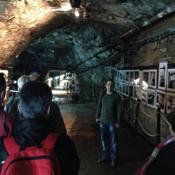


“The events that the Trust organises allow me and my partner to explore places that we simply would not have seen without the help and knowledge of the Trust”

The Trust has a number of statutory and strategic functions to:
1.- Safeguard and enhance the quality and condition of Gibraltar’s historic environment.
2.- Promote wider understanding, enjoyment and appreciation of Gibraltar’s historic environment.
3.- Enhance Gibraltar’s Sense of Place.
4.- Encourage relevant bodies to make Gibraltar’s historic areas better places to live, visit and to invest in.
5.- Work with others to amplify the impact of the wider initiatives to improve the city and make Gibraltar a better place to live, visit and invest in.
6.- Work towards the implementation and enforcement of new heritage legislation, policies and guidelines.
7.- Be open, responsive, transparent, effective and efficient in our work.
By investing in the Trust you are investing in Gibraltar’s past, its present and its future.
With your annual membership, you support Gibraltar and the work that the Trust does to protect and enhance it, however, your membership also entitles you to:
• Access to the Trust’s monthly programme of events, including trips and organised excursions.

• Access, by appointment, to the Trust’s reference library of books related to Gibraltar and its past. (The Trust is accepting donations of books on Gibraltar to add to this resource).
• Free entry to the Gibraltar Museum.
• Free entry to the Upper Rock Nature Reserve, St Michael’s Cave, Great Siege Tunnels, Military Heritage Centre, Tower of Homage, Ape’s Den, Windsor Suspension Bridge and WWII Tunnels.
• Annual report, our regular e-newsletter direct to your inbox, updates and information on what’s happening on the Gibraltar heritage scene.
• Discounts and deals from local businesses added throughout the year.
• Discounts on all Gibraltar Heritage Trust Publications in our shop.

Gibraltar Heritage Trust
The Main Guard
13 John Mackintosh Square PO Box 683, Gibraltar t. (+350) 200 42844 admin@gibraltarheritagetrust.org.gi www.gibraltarheritagetrust.org.gi
JOIN US NOW VIA OUR WEBSITE OR POP INTO OUR SHOP
The water source that creates the Everglades is predominately from rain which is unlike the classic river flooding seen to create other famous wetlands such as the Okavango delta or the Pantanal in Brazil.
La fuente de agua que crea los Everglades procede principalmente de la lluvia, a diferencia de las clásicas inundaciones fluviales que crean otros humedales famosos, como el delta del Okavango o el Pantanal en Brasil.
Strangling the Florida Everglades
Florida’s wetlands are being decimated by the introduction of an invasive reptile species from across the other side of the world, now bounty hunters, biologists and locals unite to tackle the threat.
El estrangulamiento de los Everglades de Florida
Los humedales de Florida están siendo diezmados por la introducción de una especie de reptil invasor procedente del otro lado del mundo, ahora cazadores de recompensas, biólogos y lugareños se unen para hacer frente a la amenaza.
Author: Campbell Young.
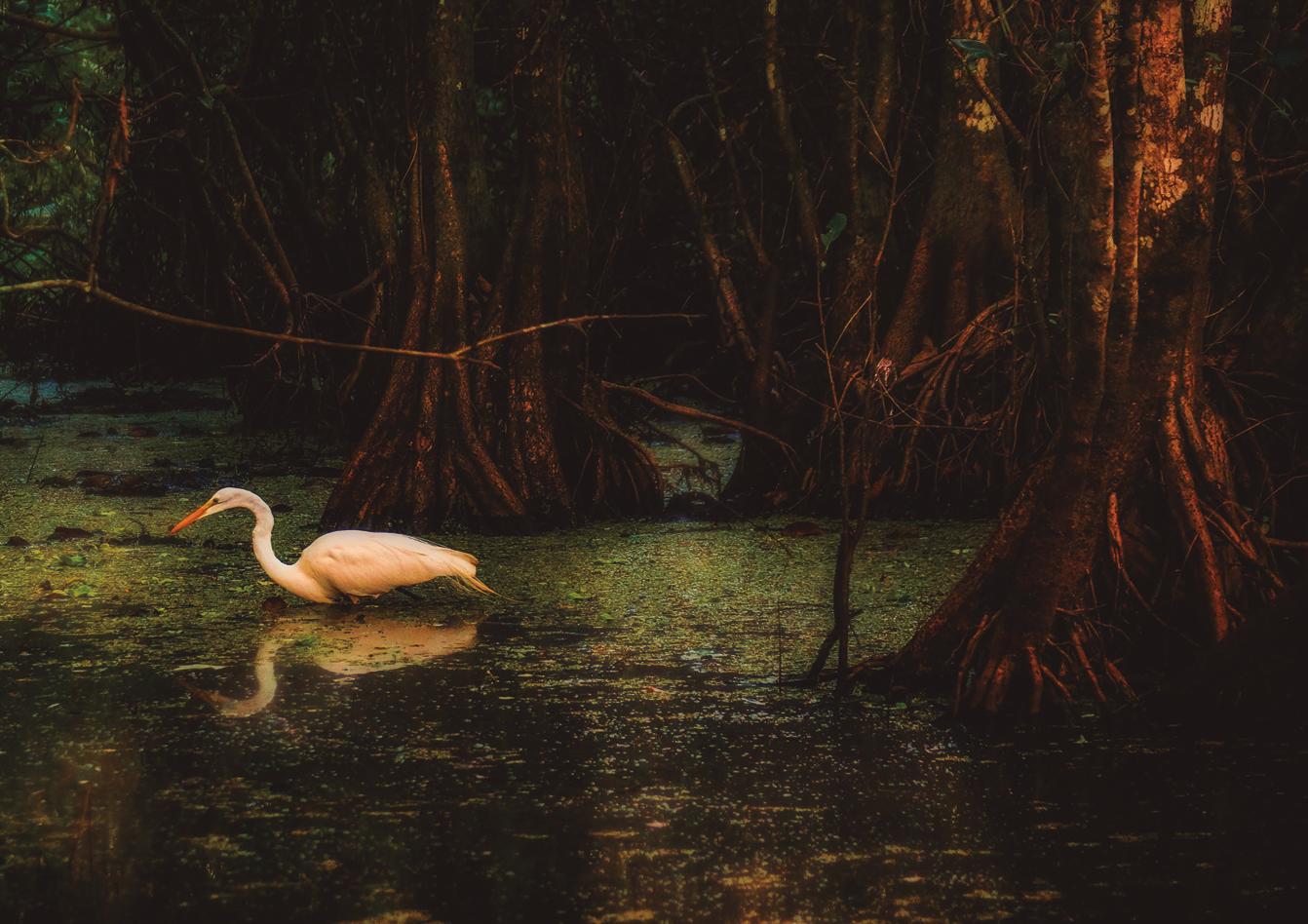
Florida’s prized Everglades are a meandering connection of swamps, ponds and subtropical wetlands which stretch 1.5 million acres across the southern state. These wetlands are undoubtedly acclaimed not only in the USA but worldwide for being one of the earth’s most iconic habitats. Made famous by its monstrously sized alligators and quirky fan boats, the Everglades are recognized alongside revered wetlands such as the Okavango delta in Botswana and the Pantanal of Brazil.
Wading through the wetland’s waters are numerous species of Amphibians, Birds, Mammals, and Reptiles which all call this refuge home. Florida panthers illusively stalk between the weaving saw grass as archaic alligators lay sovereignty over the water’s banks and an excess of 360 bird species nest, taking wing to the skies above.
If you live in Florida then your dependence on food, water and shelter are integrally linked to the reliance on the healthy functioning of the Everglades. One-third of Florida’s drinking water is directly derived from the waters of the wetlands which thankfully filters out pollutants and excess nutrients.
Los preciados Everglades de Florida son una conexión serpenteante de pantanos, estanques y humedales subtropicales que se extienden por 1,5 millones de acres en el sur del estado. Sin duda, estos humedales son aclamados no sólo en EE.UU. sino en todo el mundo por ser uno de los hábitats más emblemáticos de la Tierra. Famosos por sus caimanes de tamaño monstruoso y sus extravagantes botes de abanico, los Everglades son reconocidos junto a humedales venerados como el delta del Okavango en Botsuana y el Pantanal de Brasil.
Por las aguas del humedal se pasean numerosas especies de anfibios, aves, mamíferos y reptiles que llaman a este refugio su hogar. Las panteras de Florida acechan ilusoriamente entre la hierba de sierra tejida mientras los caimanes arcaicos ejercen su soberanía sobre las orillas del agua y un exceso de 360 especies de aves anidan, alzando el vuelo.
Si vives en Florida, tu dependencia de la comida, el agua y el refugio está íntimamente ligada a la dependencia del funcionamiento saludable de los Everglades. Un tercio del agua potable de Florida procede directamente de las aguas de los humeda-
OTWO 29 / DECEMBER 2021 43 42 OTWO 29 / DECEMBER 2021
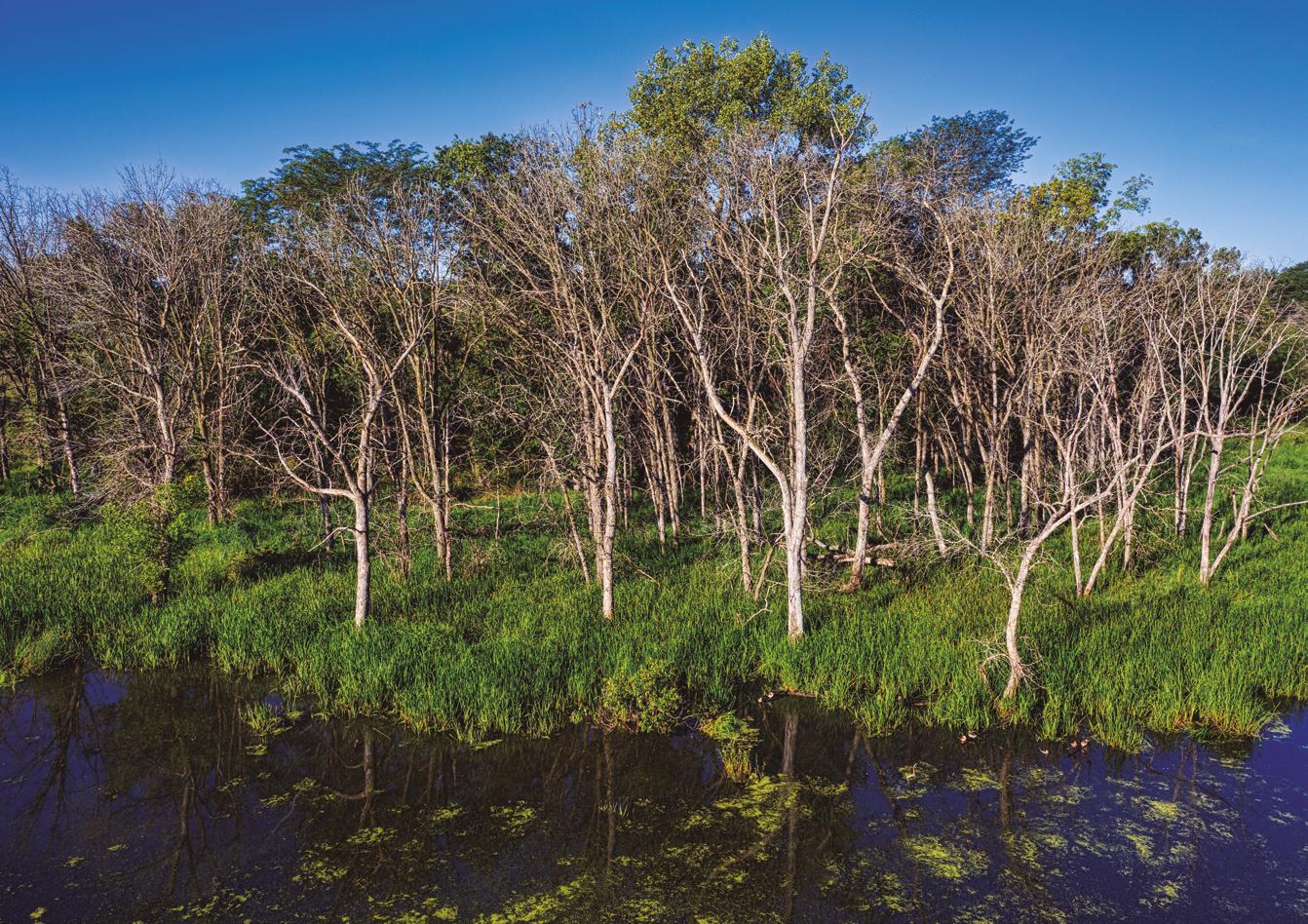
Moreover, the wetlands provide irrigation for the majority of the state’s agriculture as well as reducing flooding in Florida’s thriving urban cities such as Miami.
Despite our assured awareness of the indispensable role that the wetlands play, Florida’s Everglades are under attack. Encroaching threats from the call of urbanisation, poor water management and agricultural expansion have tragically shrunk the Everglades to half their original size. The direct unsustainable drainage for agriculture alone has severely exacerbated fire risk and dust storms in the habitat. Unfortunately, the remaining Everglades have recently faced an exceptionally unique threat, introduced by us from across the other side of the world.
In 1979 locals first sited this introduced reptile in the outer everglades, now the species population has exploded conjuring harmful consequences for the habitat. The answer to how this species escaped to conquer this ecosystem lies in the pet trade. Transported from the Southeast Asian jungles of Myanmar to the urban sprawl of Miami, these snakes found themselves in a thriving hub for exotic pet trade. With its lax biosecurity measures and previously established private ownership laws, Florida’s pet trade for these species was lucrative and flexible.
In line with Florida’s flashy style, it was predictable that Floridians would pay for the slickest most compelling animals. However, when a small snake turns out to grow over 20 feet and weigh an unnerving 200 pounds this urgently becomes a lot of time, money, and sacrifice of peace of mind. This is exactly what happened with the Burmese python.
Many pet owners quickly realized that these snakes became too hard and expensive to care for, naively releasing their former pet to the surrounding vulnerable Everglades. Now we are faced with a thriving unknown population that could be over 100,000 in number. With their appetite for local wildlife, high reproductive ability, and the possibility of spreading to additional states, how do we deal with this present threat?
Burmese pythons are generalist apex predators meaning they will eat pretty much anything that they can, but primarily they feed upon small mammals and birds. Since their introduction, the snakes have
les, que afortunadamente filtran los contaminantes y el exceso de nutrientes. Además, los humedales proporcionan riego a la mayor parte de la agricultura del estado, además de reducir las inundaciones en las prósperas ciudades urbanas de Florida, como Miami.
A pesar de que somos conscientes del papel indispensable que desempeñan los humedales, los Everglades de Florida están siendo atacados. Las amenazas de invasión por la llamada urbanización, la mala gestión del agua y la expansión agrícola han reducido trágicamente los Everglades a la mitad de su tamaño original. El drenaje directo e insostenible sólo para la agricultura ha exacerbado gravemente el riesgo de incendios y las tormentas de polvo en el hábitat. Por desgracia, los Everglades restantes se han enfrentado recientemente a una amenaza excepcionalmente única, introducida por nosotros desde el otro lado del mundo.
En 1979, los lugareños localizaron por primera vez este reptil introducido en los Everglades exteriores, ahora la población de la especie se ha disparado conjurando consecuencias perjudiciales para el hábitat. La respuesta a cómo esta especie escapó para conquistar este ecosistema está en el comercio de mascotas. Transportadas desde las selvas del sudeste asiático de Myanmar a la expansión urbana de Miami, estas serpientes se encontraron en un próspero centro de comercio de mascotas exóticas. Con sus laxas medidas de bioseguridad y las leyes de propiedad privada previamente establecidas, el comercio de mascotas de estas especies en Florida era lucrativo y flexible.
En consonancia con el estilo llamativo de Florida, era previsible que los floridanos pagaran por los animales más llamativos. Sin embargo, cuando una pequeña serpiente resulta crecer más de 6 metros y pesar unas desconcertantes 200 libras, esto se convierte urgentemente en una gran cantidad de tiempo, dinero y sacrificio de tranquilidad. Esto es exactamente lo que ocurrió con la pitón birmana.
Muchos propietarios de mascotas se dieron cuenta rápidamente de que estas serpientes eran demasiado difíciles y caras de cuidar, y liberaron ingenuamente a su antigua mascota en los vulnerables Everglades circundantes. Ahora nos enfrentamos a una floreciente población desconocida que podría superar los 100.000 ejemplares. Con su apetito por
OTWO 29 / DECEMBER 2021 45 44 OTWO 29 / DECEMBER 2021
Native to Southeast Asia the Burmese python is the second largest snake species in the world after the green anaconda.
Originaria del sudeste asiático la pitón birmana es la segunda especie de serpiente más grande del mundo después de la anaconda verde.
PHOTOGRAPH BY: Heiko Kiera
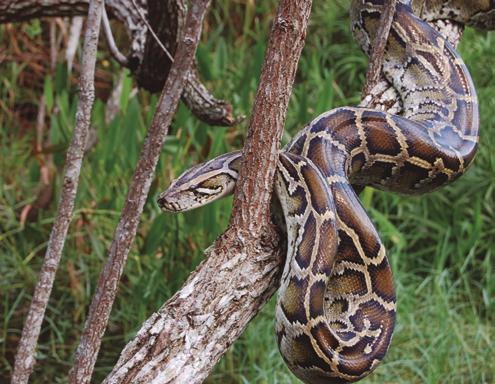
Conservancy Biologist Ian Easterling performs a necropsy inside the Conservancy of Southwest Florida’s Edith G. and Edward J. Andrew Ecology lab.
El biólogo de Conservación Ian Easterling realiza una necropsia dentro del laboratorio de Ecología Edith G. y Edward J. Andrew de Conservación del Suroeste de Florida.
PHOTOGRAPH BY: Conservancy of Southwest Florida

decisively outcompeted the native wildlife which is bountiful in these exact species. From 2003-2011 the frequency of raccoon observed decreased by 99.3% along with a decrease of 98.9% for opossum and 87.5% for bobcat. For at least 16 million years Florida has not had a snake large enough to tackle medium-sized mammals leaving these species naive and totally unadapted to deal with the constrictors. These entirely unaware species commonly forage along the water’s edge, the prime microhabitat for ambushing pythons.
To fully understand the diversity of the snake’s diet, caught pythons often undergo a necropsy in the lab. Alligator claws, undigested bird feathers, bobcat claws and hoof cores from white-tailed deer are just a taste of what the snakes have been devouring. As more species are decimated in the Everglades other top predators such as alligators and the Florida panther may find it progressively more strenuous to secure a meal.
Pythons impact on the Everglades over a short time span is closely attributed to their high reproductive potential. During the mating season from December to March female pythons can produce a clutch of up to 100 eggs. Additionally, the snakes have a lengthy life span of 20-25 years under favourable conditions. This is also coupled with the python’s lack of natural predators to check the population. Occasionally an alligator will feed on a python, but in return, larger pythons are seen to strike back eating alligators. When we imagine the potential of 100 new snakes that can live 20 odd years with little to no predation, we start to appreciate how rapidly this problem escalated and the severe complications which could further unfold for the fragile ecosystem.
Scientists are further worried about if the snakes will have the capability to spread to other regions or even states. Pythons have been found on the outer reaches of the Everglades far from their established home on the southern tip of the peninsula. Despite this, studies have shown that many pythons can’t survive the cold periods in northern parts of Florida lending doubt to their ability to spread. Either way, the problem of the pythons in the Everglades remains leaving locals, scientific experts and conservationists asking, what do we do?
The simple objective for everyone is to remove
la fauna local, su alta capacidad reproductiva y la posibilidad de extenderse a otros estados, ¿cómo podemos hacer frente a esta amenaza actual?
Las pitones birmanas son depredadores generalistas, lo que significa que comen prácticamente todo lo que pueden, pero principalmente se alimentan de pequeños mamíferos y aves. Desde su introducción, las serpientes han superado de forma decisiva a la fauna autóctona, en la que abundan precisamente estas especies. Entre 2003 y 2011, la frecuencia de mapaches observada se redujo en un 99,3%, junto con una disminución del 98,9% para la zarigüeya y del 87,5% para el gato montés. Durante al menos 16 millones de años, Florida no ha tenido una serpiente lo suficientemente grande como para hacer frente a los mamíferos de tamaño medio, dejando a estas especies ingenuas y totalmente desadaptadas para hacer frente a los constrictores. Estas especies, totalmente desprevenidas, suelen alimentarse a lo largo de la orilla del agua, el principal microhábitat para emboscar a las pitones.
Para comprender plenamente la diversidad de la dieta de las serpientes, las pitones capturadas suelen someterse a una necropsia en el laboratorio. Garras de caimán, plumas de aves no digeridas, garras de gato montés y núcleos de pezuñas de ciervos de cola blanca son sólo una muestra de lo que las serpientes han devorado. A medida que se diezman más especies en los Everglades, otros depredadores importantes, como los caimanes y la pantera de Florida, pueden encontrar cada vez más difícil asegurarse una comida.
El impacto de las pitones en los Everglades en un corto periodo de tiempo se atribuye estrechamente a su alto potencial reproductivo. Durante la temporada de apareamiento, de diciembre a marzo, las pitones hembras pueden producir una nidada de hasta 100 huevos. Además, las serpientes tienen una larga vida de 20 a 25 años en condiciones favorables. A esto se suma la falta de depredadores naturales de la pitón para controlar la población. Ocasionalmente, un caimán se alimenta de una pitón, pero a cambio se ven pitones más grandes que contraatacan comiendo caimanes. Cuando imaginamos el potencial de 100 nuevas serpientes que pueden vivir 20 años o más sin apenas depredación, empezamos a apreciar la rapidez con la que ha crecido este problema y
46 OTWO 29 / DECEMBER 2021 OTWO 29 / DECEMBER 2021 47
them but the way in which that is done and what to do with them once caught lends for varying suggestions amongst the Florida community. In 2017 the South Florida Water Management District (SFWMD) funded the python elimination programme hiring its very own python bounty hunters to jump into the swamps and tackle the beasts all year round. Incentives were added on top of the hourly wage, 50 dollars for bagging a snake along with 25 dollars extra for each foot of the snake over 4 feet and a 200-dollar bonus for discovering an active nest.
The Fish & Wildlife Foundation of Florida took the idea of getting locals involved in hunting a step further creating the yearly Florida python challenge. Every year hunters from all over America, trained and novice, enter a 10-day frenzy to capture as many pythons as possible looking to grab the overall $10,000 prize for the most caught. Due to covid all training of catching them is given online which mainly consists of fearlessly jumping on their head as quickly as you can without getting bitten. Luckily for the participants, Burmese pythons are non-venomous so a bite will be unpleasant but not fatal.
After the 2021 python challenge just passed this August the 600 participants managed to successfully remove 223 snakes from the ecosystem. These hunts don’t only cull the non-native python population, they raise awareness to the whole state of the current ecological crisis unfolding. Understandably, people are still torn on what to do with the captured pythons. From the python challenge all the snakes are killed but some question if these animals should be shipped away to zoos and native homes rather than carelessly euthanized.
By involving local communities as well as encouraging participants from across the country, the python challenge is doing more than just removing snakes, it’s uniting people to work together to care about our wild spaces. Admittedly, despite its victories, the challenge still only removed 223 snakes out of a potential 100,000 population. How do we remove more?
Scientific organizations such as the Conservancy of Southwest Florida have been funded to see if technology can bolster the captures. Male pythons are kidnapped, surgically implanted with radio transmitters, and released back into the Everglades
las graves complicaciones que podrían surgir para el frágil ecosistema.
A los científicos les preocupa además si las serpientes tendrán la capacidad de extenderse a otras regiones o incluso a otros estados. Se han encontrado pitones en las afueras de los Everglades, lejos de su hogar establecido en el extremo sur de la península. A pesar de ello, los estudios han demostrado que muchas pitones no pueden sobrevivir a los periodos de frío en las zonas del norte de Florida, lo que pone en duda su capacidad de propagación. En cualquier caso, el problema de las pitones en los Everglades sigue dejando a los lugareños, a los expertos científicos y a los conservacionistas preguntándose, ¿qué hacemos?
El simple objetivo de todos es eliminarlos, pero la forma en que se hace y lo que se hace con ellos una vez capturados da lugar a diferentes sugerencias entre la comunidad de Florida. En 2017, el Distrito de Gestión del Agua del Sur de Florida (SFWMD) financió el programa de eliminación de pitones contratando a sus propios cazarrecompensas de pitones para que se lanzaran a los pantanos y se enfrentaran a las bestias durante todo el año. Se añadieron incentivos además del salario por hora, 50 dólares por embolsar una serpiente junto con 25 dólares extra por cada pie de la serpiente de más de 4 pies y una bonificación de 200 dólares por descubrir un nido activo.
La Fundación de Pesca y Vida Silvestre de Florida llevó la idea de involucrar a la población local en la caza un paso más allá, creando el desafío anual de la pitón de Florida. Todos los años, cazadores de toda América, entrenados y novatos, entran en un frenesí de 10 días para capturar el mayor número de pitones posible, buscando hacerse con el premio global de 10.000 dólares por el mayor número de capturas. Debido a la covida, todo el entrenamiento para atraparlas se imparte en línea y consiste principalmente en saltar sin miedo sobre su cabeza lo más rápido posible sin ser mordido. Por suerte para los participantes, las pitones birmanas no son venenosas, por lo que una mordedura será desagradable pero no mortal.
Tras el desafío de la pitón 2021, que acaba de pasar este mes de agosto, los 600 participantes consiguieron eliminar con éxito 223 serpientes del ecosistema. Estas cacerías no sólo eliminan la población de pitones no autóctonas, sino que conciencian a todo

PHOTOGRAPH
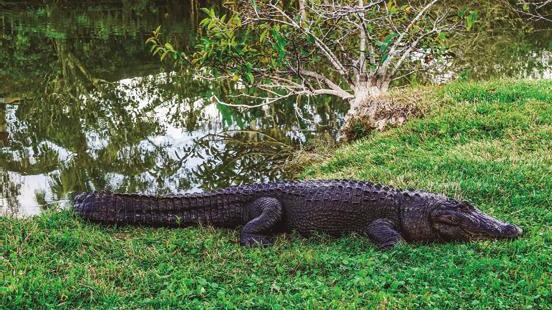
48 OTWO 29 / DECEMBER 2021 OTWO 29 / DECEMBER 2021 49
A hefty alligator and a Burmese python encounter a battle for survival in the Florida Everglades. Un caimán corpulento y una pitón birmana se enfrentan en una batalla por la supervivencia en los Everglades de Florida.
BY: Lori Oberhofer.
Burmese pythons are non-venomous although their bite is still extremely sharp and painful. They hunt their prey by biting near the head and constricting, suffocating, and crushing them before ultimately swallowing.
Las pitones birmanas no son venenosas, aunque su mordedura es extremadamente afilada y dolorosa. Cazan a sus presas mordiéndolas cerca de la cabeza y constriñéndolas, asfixiándolas y aplastándolas antes de tragarlas.
PHOTOGRAPH BY:
Charles Ommanney.


as our very own “sentinel snakes”. As the breeding season approaches these males seek out breeding females which is a rare time when these primarily solitary reptiles group together. Unbeknownst to the others, the betraying sentinel leads the team to the concealed pythons allowing multiple to be caught along with the pregnant female. Each pregnant female caught is a big win as it stops another potential 50-100 snakes from being released to terrorise the Everglades. The sentinels are then released again leading the team to their next victim.
From the snakes that are captured the majority are killed with only a handful of people using the meat for food as the rest go to waste as another reminder of our error. However, local Miami designer Elle Barbeito has taken a new path when interacting with Florida’s non-native companions. She takes the snakes caught by her father, a contracted python hunter for SFWMD, and transformed them into a collection of contemporary individualistic fashion pieces, enhancing the area of sustainable creativity in the face of a wasteful ecological problem. As long as pythons remain invasive in Florida, Elle’s practice only promotes a healthier ecosystem, one that is closer to its former natural functionality.
Finding ethical and pragmatic solutions to the conundrum of Florida’s Burmese pythons becomes ever more clouded when we realise the situation these species face within their native home of Southeast Asia. Despite thriving in Florida, the Burmese python is listed as vulnerable by the International Union for Conservation of Nature, leaving them one step away from total endangerment. The population has reduced by 30% over the past decade at the hands of excessive habitat loss, increased poaching and the growing pet trade, the very problem that triggered Florida’s predicament.
Conservationist biologists are now questioned directly with what belongs where and how to protect the same species on different fronts. Do we need to work together internationally to return pythons to Southeast Asia rather than eating, skinning, and culling them in a place where they are unintentionally thriving? Can we conserve a species in one habitat but kill it freely in another?
This scenario is just one revealing the complexity of invasive species biology and how the context of
el estado de la actual crisis ecológica que se está produciendo. Es comprensible que la gente siga dudando sobre qué hacer con las pitones capturadas. Desde el desafío de las pitones se matan todas las serpientes, pero algunos se preguntan si estos animales deberían ser enviados a zoológicos y hogares nativos en lugar de ser eutanasiados sin cuidado. Al implicar a las comunidades locales y animar a los participantes de todo el país, el desafío de las pitones está haciendo algo más que eliminar serpientes, está uniendo a la gente para que trabajen juntos en el cuidado de nuestros espacios salvajes. Hay que admitir que, a pesar de sus victorias, el desafío sólo ha eliminado 223 serpientes de una población potencial de 100.000. ¿Cómo podemos eliminar más? Organizaciones científicas como Conservancy of Southwest Florida han recibido fondos para ver si la tecnología puede reforzar las capturas. Se secuestran pitones macho, se les implantan quirúrgicamente transmisores de radio y se les suelta en los Everglades como nuestras propias "serpientes centinela". A medida que se acerca la temporada de cría, estos machos buscan a las hembras reproductoras, que es un momento raro en el que estos reptiles, principalmente solitarios, se agrupan. Sin que los demás lo sepan, la centinela traidora conduce al equipo hasta las pitones ocultas, lo que permite capturar varias junto con la hembra preñada. Cada hembra preñada que se captura es una gran victoria, ya que impide que otras 50-100 serpientes potenciales sean liberadas para aterrorizar a los Everglades. Los centinelas son liberados de nuevo, lo que lleva al equipo a su siguiente víctima. De las serpientes que se capturan, la mayoría se mata y sólo un puñado de personas utiliza la carne para alimentarse, ya que el resto se desperdicia como otro recordatorio de nuestro error. Sin embargo, la diseñadora local de Miami Elle Barbeito ha tomado un nuevo camino a la hora de interactuar con las compañeras no nativas de Florida. Toma las serpientes capturadas por su padre, un cazador de pitones contratado por el SFWMD, y las transforma en una colección de piezas de moda contemporánea e individualista, potenciando el ámbito de la creatividad sostenible frente a un problema ecológico de despilfarro. Mientras las pitones sigan siendo invasoras en Florida, la práctica de Elle no hace sino
50 OTWO 29 / DECEMBER 2021 OTWO 29 / DECEMBER 2021 51
PHOTOGRAPH BY: Rob Holland from Decatur, GA, USA
location triggers such different responses in terms of conservation. Certain animals adapt so swiftly to new environmental scenarios leaving us with a duty to stop these catastrophes occurring in every place we inhabit or rethink the whole idea of invasion in a post-wild world. As we alter and interfere with every one of our planet’s ecosystems, soon every species, plant, animal, or fungi, may be seen as belonging everywhere and nowhere.
Biases in this field are rife. Even the establishment of what makes something native is questioned, how long does it have to be there to become authorized to stay? Our initial collective judgment of a species also plays a part. If a species appears harmless, we generally accept their addition to the environment not questioning their origin, for example the ring-necked parakeets of London. But if the species appears threatening, we act out. This is the paradox we face.
Ultimately, we have created a situation where the Burmese python exists as the endangered and the menace, a victim and a villain in a hurriedly shifting world we are struggling to understand.

promover un ecosistema más sano, más cercano a su antigua funcionalidad natural.
Encontrar soluciones éticas y pragmáticas al enigma de las pitones birmanas de Florida se enturbia aún más cuando nos damos cuenta de la situación a la que se enfrentan estas especies dentro de su hogar nativo del sudeste asiático. A pesar de prosperar en Florida, la pitón birmana está incluida en la lista de especies vulnerables de la Unión Internacional para la Conservación de la Naturaleza, lo que la deja a un paso del peligro total. La población se ha reducido un 30% en la última década a causa de la excesiva pérdida de hábitat, el aumento de la caza furtiva y el creciente comercio de mascotas, el mismo problema que desencadenó la situación de Florida.
Los biólogos conservacionistas se cuestionan ahora directamente con qué pertenece dónde y cómo proteger la misma especie en diferentes frentes. ¿Debemos colaborar a nivel internacional para devolver las pitones al sureste asiático en lugar de comerlas, despellejarlas y sacrificarlas en un lugar en el que prosperan involuntariamente? ¿Podemos
conservar una especie en un hábitat, pero matarla libremente en otro?
Este escenario es sólo uno de los que revelan la complejidad de la biología de las especies invasoras y cómo el contexto de la ubicación desencadena respuestas tan diferentes en términos de conservación. Ciertos animales se adaptan tan rápidamente a los nuevos escenarios medioambientales que nos obligan a impedir que estas catástrofes se produzcan en todos los lugares que habitamos o a replantearnos toda la idea de la invasión en un mundo postsalvaje. A medida que alteramos e interferimos en cada uno de los ecosistemas de nuestro planeta, pronto cada especie, ya sea planta, animal u hongo, podrá ser vista como perteneciente a cualquier lugar y a ninguna parte.
Los prejuicios en este campo son abundantes. Incluso se cuestiona el establecimiento de lo que hace que algo sea autóctono, ¿cuánto tiempo tiene que estar allí para ser autorizado a quedarse? Nuestro juicio colectivo inicial sobre una especie también influye. Si una especie parece inofensiva, generalmente aceptamos su incorporación al medio ambiente sin cuestionar su origen, por ejemplo, los periquitos de cuello anillado de Londres. Pero si la especie parece amenazante, actuamos. Esta es la paradoja a la que nos enfrentamos.
En última instancia, hemos creado una situación en la que la pitón birmana existe como amenaza y en peligro de extinción, como víctima y como villano en un mundo que cambia apresuradamente y que nos cuesta entender.
OTWO 29 / DECEMBER 2021 53 52 OTWO 29 / DECEMBER 2021
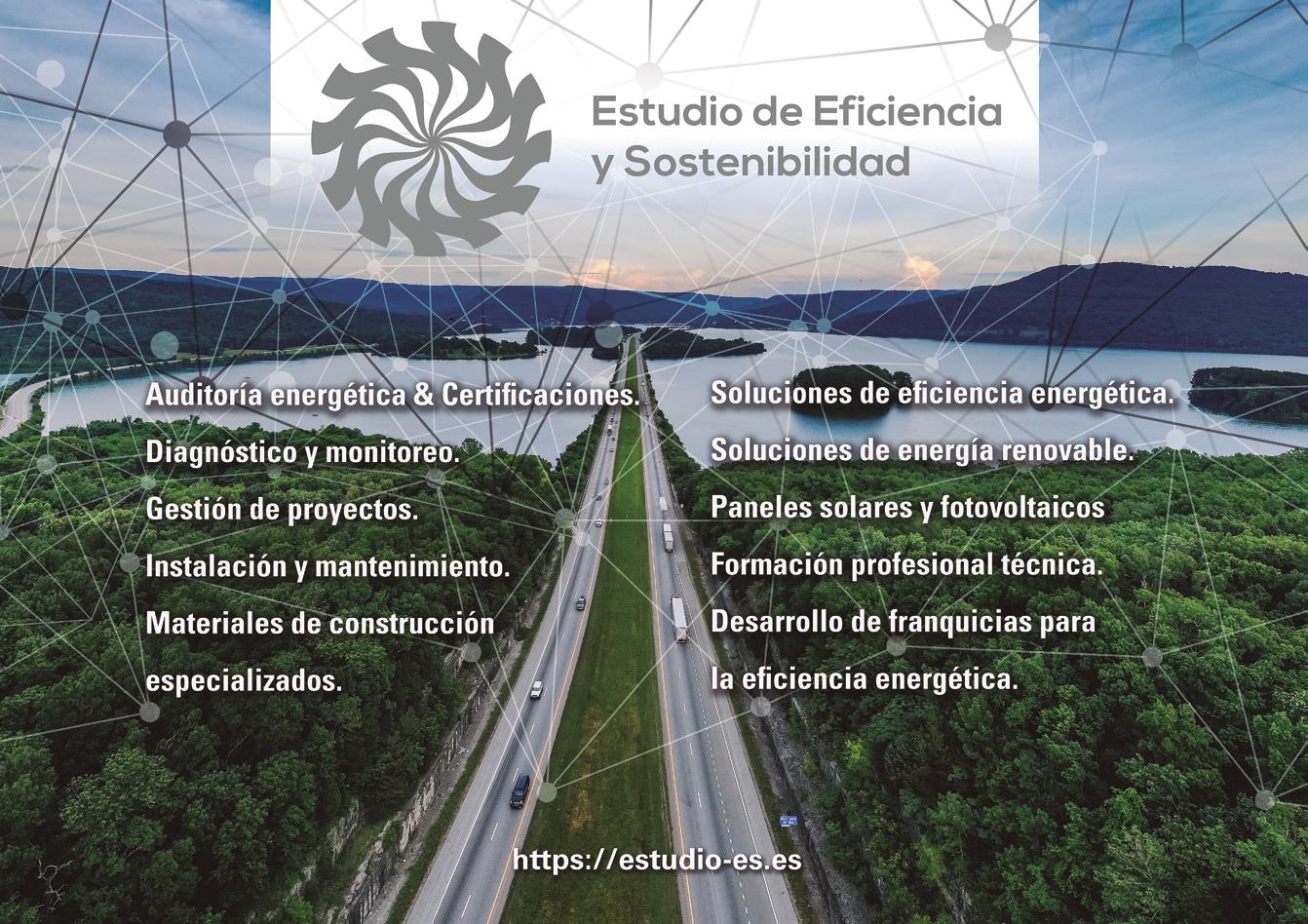
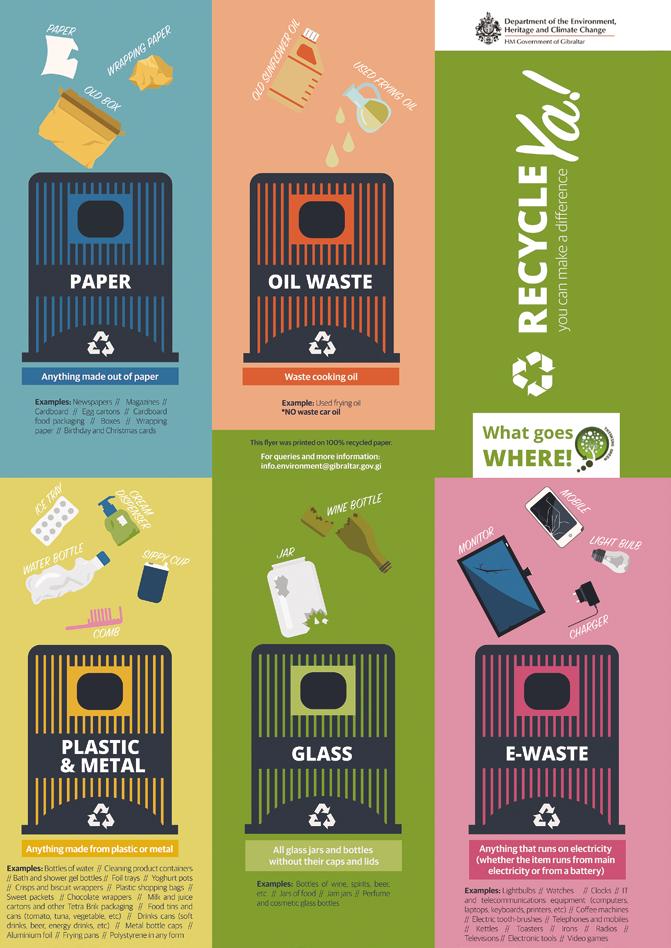

The mouth of the Guadalhorce
A natural laboratory.
La desembocadura del Guadalhorce. Un laboratorio natural.
Text & Photographs:Ignacio M. Yélamo Mayorga. Environmentalist. Project Manager of the Environment Department, Enercapitalgroup S.L.
The dance of the reeds awakens in the early, clear light of a winter morning, propelled by the calm December air. The thistle butterfly can already be observed searching for the brightest blooms along the coast at that hour. Only the occasional screech of a seagull, the chorus of frogs, or the encompassing whistling of passing birds make sounds here. The kingfisher, with its bright gala hues, is one of the most visible visitors to this alluvial delta, which marks the end of a 154,000-meter voyage. A fluvial journey that begins in the Puerto de los Alazores (Sierra de San Jorge) and ends in a scenario that has become one of the most important natural environments of the Costa del Sol where, a few kilometers from the city, one enters a place that seems to transport us to another dimension in which time and space are revealed to the speed of the world. We are talking about the mouth of the Guadalhorce River. To begin, the mouth of the Guadalhorce River,
En la temprana y clara luz de la mañana invernal despierta el baile de los juncos, movidos por la brisa suave de diciembre. A esa hora ya puede verse a la mariposa de los cardos en busca de las flores más brillantes de toda la costa. Aquí no hay ruidos, únicamente el graznido puntual de alguna gaviota, la orquesta de las ranas o el silbido envolvente de las aves de paso. El martín pescador, con sus alegres colores de gala, es uno de los espectadores principales de este delta aluvial en el que finaliza un viaje de 154.000 metros. Un viaje fluvial que comienza en el Puerto de los Alazores (Sierra de San Jorge) y desemboca en un escenario que se ha convertido en uno de los más importantes entornos naturales de la costa del sol donde, a pocos kilómetros de la ciudad, uno se adentra en un Paraje que parece transportarnos a otra dimensión en la que el tiempo y el espacio se revelan ante la velocidad del mundo. Hablamos de la Desembocadura del Guadalhorce.
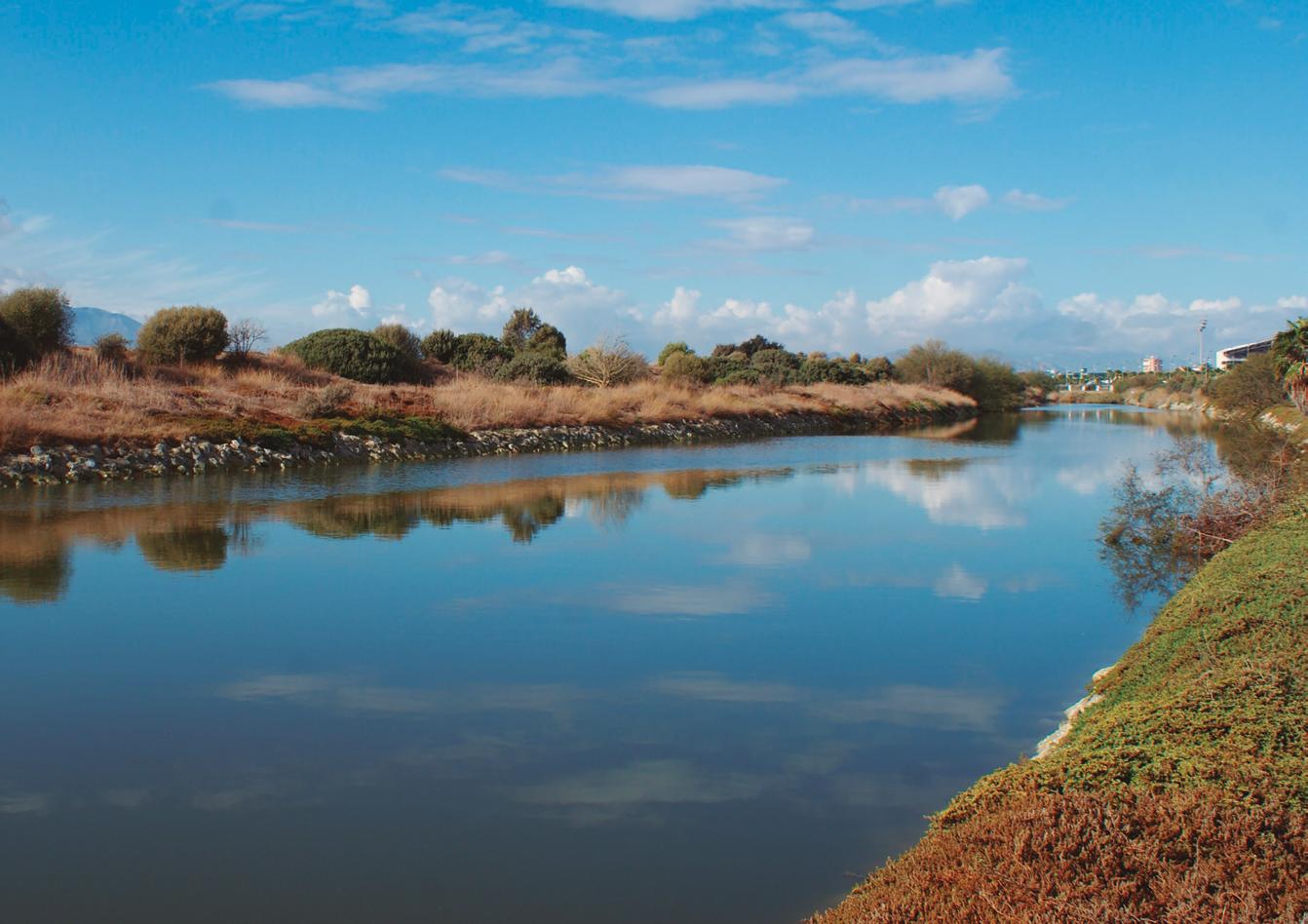

59 58
OTWO 29 / DECEMBER 2021 OTWO 29 / DECEMBER 2021
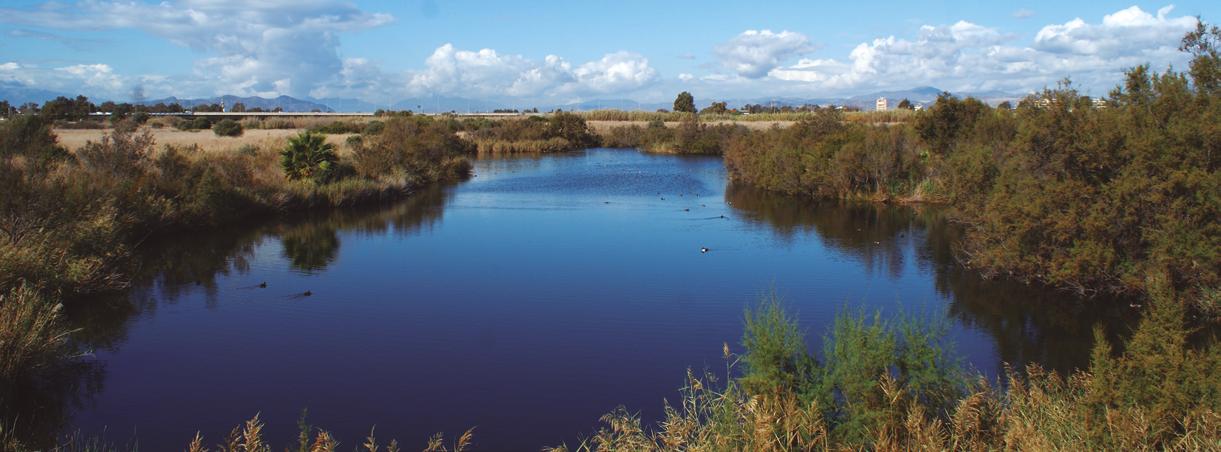
located in the municipality of Malaga (Malaga, Andalusia), was designated as a Natural Site in the Network of Protected Natural Spaces of Andalusia in 1989. Originally, the area was a vast marsh where the confluence of the sea and the river gave rise to immense marshlands, in which alluvial deposits formed a delta over time. The marshland was drained and the land was used for cultivation once the Guadalhorce reservoir was built. As fate would have it, manmade activity was the catalyst for the river’s mouth’s return in terms of environmental values. During the 1970s, aggregate extraction was carried out in the area through intense excavations. Excavations that, since the water table of the alluvial aquifer rose, formed lagoons, colonized over the years by flora and fauna, returning in a way, as if it were a natural cycle, to the pristine landscape of the place. This mouth, branched in two arms that seem to embrace the lagoons of its interior, battered by the passage of man, is an example of adaptation and resilience, of how nature is capable of rising from its muddy ashes. Humble and grateful, it is not ashamed of the origin of its precious lagoons, —what
A modo introductorio, la desembocadura del río Guadalhorce, ubicada en el término municipal de Málaga (Málaga, Andalucía), fue incluida en 1989 en la Red de Espacios Naturales Protegidos de Andalucía, con la categoría de Paraje Natural. Originariamente, el lugar fue una enorme marisma donde la confluencia entre el mar y el río originó extensos terrenos pantanosos, en los cuales, a lo largo de los años, los depósitos de materiales aluviales fueron formando un delta. Tras la construcción del embalse del Guadalhorce, la marisma se desecó, pasando a utilizarse los suelos como terrenos agrícolas. Quiso el destino que fuera una actividad de origen antrópico la causa del resurgimiento, en términos de valores ambientales, de la desembocadura. Y es que, durante los años 70, se realizaron extracciones de áridos en la zona a través de intensas excavaciones. Excavaciones que, dado que afloró el nivel freático del acuífero aluvial, pasaron a formar lagunas, colonizándose a lo largo de los años por la flora y la fauna, retornando en cierta forma, como si de un ciclo natural se tratara, al paisaje prístino del lugar. Esta desembocadura, ramificada en dos brazos
is done is done— it seems to be said. Today, this location has been configured, in addition to being a source of biodiversity and a place for recreation and enjoyment of the population, as a space where it is not uncommon to see environmentalists, biologists, geologists and other scholars of the natural environment analyzing nature using this place. Many works have based their studies in the Desembocadura del Guadalhorce Natural Park, from the analysis of its own characteristics, to the mere application of environmental analysis techniques (water characterization, calculation of biodiversity, interpretation of ecological interactions, etc.). It is therefore an authentic natural laboratory thanks, among other things, to its accessibility and proximity to the urban center.
Examples of this type of activities are those carried out in past courses by students of the subject of Environmental Bioindicators: Flora and Fauna, of the degree in Environmental Sciences of the University of Malaga (UMA), where they studied, among others, the relationship between the characteristics of a lagoon and the type of waterfowl it houses.
que parecieran abrazar las lagunas de su interior, maltratada por el paso del hombre, es ejemplo de adaptación y resiliencia, de cómo la naturaleza es capaz de resurgir de sus cenizas de barro. Humilde y agradecida, no se avergüenza del origen de sus preciadas lagunas, —lo hecho, hecho está— parece escuchársele decir. A día de hoy, esta ubicación se ha configurado, además de como fuente de biodiversidad y lugar de esparcimiento y disfrute de la población, como un espacio donde no es extraño ver a ambientólogos, biólogos, geólogos y demás estudiosos del medio natural analizar la naturaleza sirviéndose de este lugar. Y es que multitud de trabajos han basado sus estudios en el Paraje Natural de la Desembocadura del Guadalhorce, desde el análisis de sus características propias, hasta la mera aplicación de técnicas de análisis ambiental (caracterización de aguas, cálculo de la biodiversidad, interpretación de interacciones ecológicas, etc.). Se trata por tanto un auténtico laboratorio natural gracias, entre otros, a su accesibilidad y proximidad al núcleo urbano. Ejemplo de este tipo de actividades son las llevadas a cabo en cursos pasados por alumnos de
60 OTWO 29 / DECEMBER 2021 OTWO 29 / DECEMBER 2021 61

Another example is the analysis of the water quality of the lagoons, in which salinity, pH, microbial contamination... are measured, carried out in subjects related to the Department of Ecology and Geology of the UMA.
It should be mentioned that ornithologists and bird lovers in general consider the mouth of the Guadalhorce to be a particularly important enclave. More than 200 different bird species have been seen here, including the osprey, booted eagle, kingfisher, pink flamingo, white-headed duck, and kentish plover. It is a critical stopover station on one of the most important migratory routes between Europe and Africa, providing rest and food to a wide range of migrating birds. Visits to the Desembocadura del Guadalhorce Natural Park are increasing as a result of conservation efforts, even among Malaga residents who were previously ignorant of its significance. In this sense, it should be noted that in recent years, improvement actions have been carried out such as the adaptation of the paths, the installation of bird observatories or the creation of signage and interpretive panels that help to understand and bring nature closer to society. This is undoubtedly the best way to raise environmental awareness; as Jacques Cousteau said, “we only love what we know”. Nowadays, these environmental actions, such as those carried out in the Guadalhorce Mouth, are more necessary than ever if we want to preserve places like this Natural Park, which, despite past pressures, its controversial origins and times of oblivion, is considered a refuge of biodiversity and beauty.
la asignatura de Bioindicadores ambientales: Flora y Fauna, del grado en Ciencias Ambientales de la Universidad de Málaga (UMA), donde se estudió, entre otros, la relación entre las características de una laguna y el tipo de ave acuática que alberga. Otro ejemplo son los análisis de la calidad de las aguas de las lagunas, en las que se miden salinidad, pH, contaminación microbiana…, llevados a cabo en asignaturas relacionadas con el departamento de ecología y geología de la UMA.
Cabe destacar que la desembocara del Guadalhorce es un enclave especialmente importante para los ornitólogos y los amantes de las aves en general. En ella han sido avistadas más de 200 especies de aves distintas, donde es común encontrar ejemplares como el águila pescadora, el águila calzada, el martín pescador, el flamenco rosa, la malvasía cabeciblanca o el chorlitejo patinegro. Se trata de un punto clave localizado en una de las principales rutas migratorias entre Europa y África, que proporciona descanso y alimentación a multitud de aves migratorias. Gracias a los trabajos de conservación, las visitas al Paraje Natural de la Desembocadura del Guadalhorce son cada vez más frecuentes, incluso por los propios malagueños que desconocían su importancia. En este sentido, cabe destacar que en los últimos años se han llevado a cabo actuaciones de mejora como son la adecuación de los caminos, la instalación de observatorios de avifauna o la creación de señaléticas y paneles interpretativos que ayudan a entender y acercar la naturaleza a la sociedad. Esta es sin duda la mejor forma de concienciación ambiental; y es que, como decía Jacques Cousteau, «solo amamos aquello que conocemos». Hoy en día, estas actuaciones en materia ambiental, como las llevadas a cabo en la Desembocadura del Guadalhorce, son más necesarias que nunca si queremos conservar lugares como este Paraje Natural, el cual, a pesar de presiones pasadas, de sus controvertidos orígenes y de tiempos de olvidos, es considerado refugio de biodiversidad y belleza.
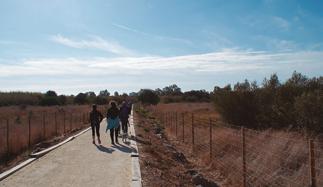

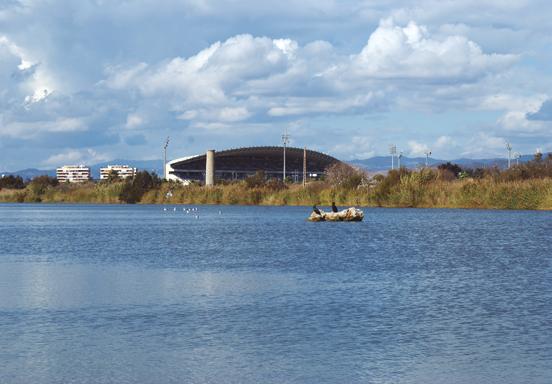
62 OTWO 29 / DECEMBER 2021 63
As Jacques Cousteau said: “we only love what we know”.
Como decía Jacques Cousteau: «solo amamos aquello que conocemos».
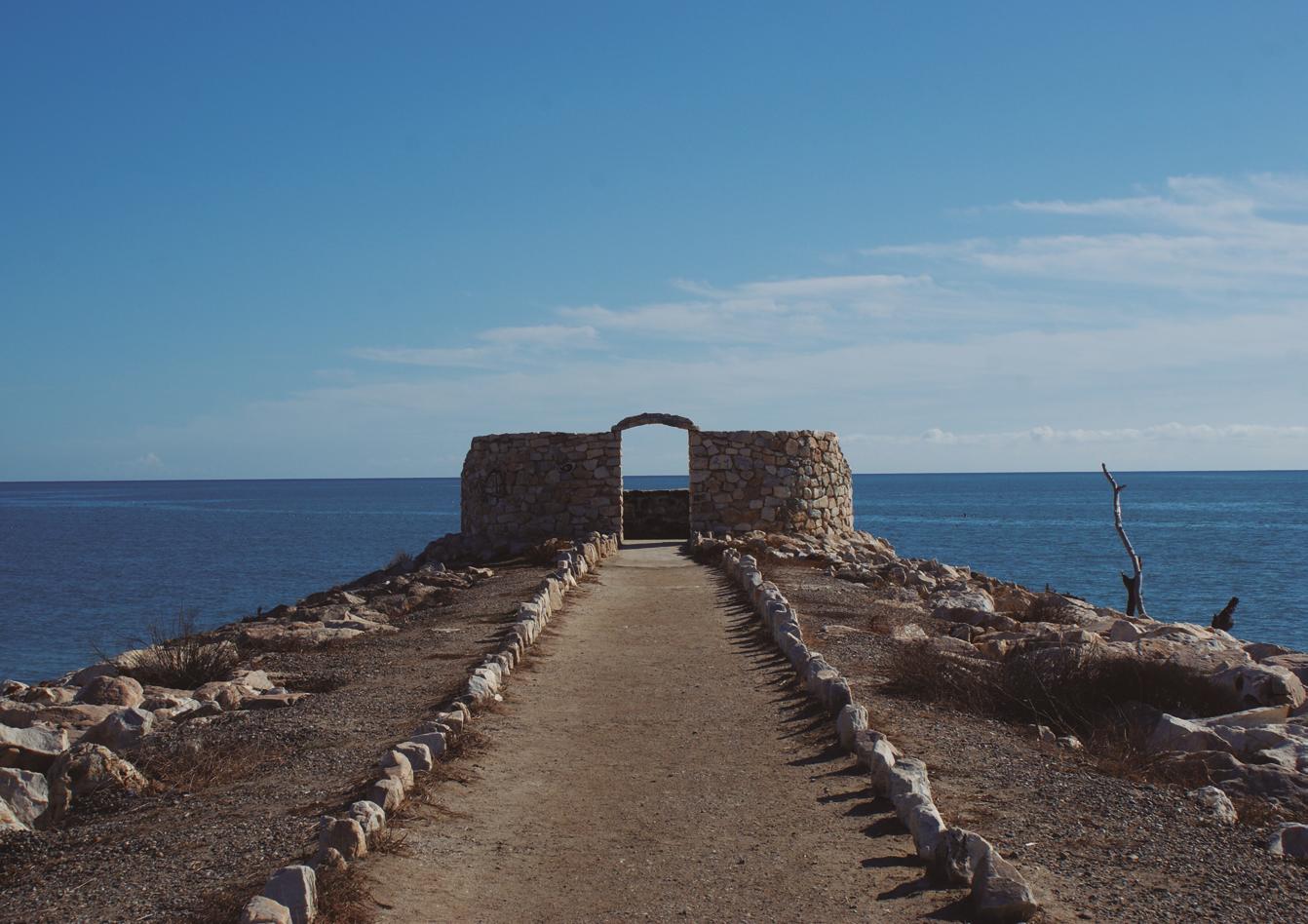
OTWO 29 / DECEMBER 2021 65 64 OTWO 29 / DECEMBER 2021


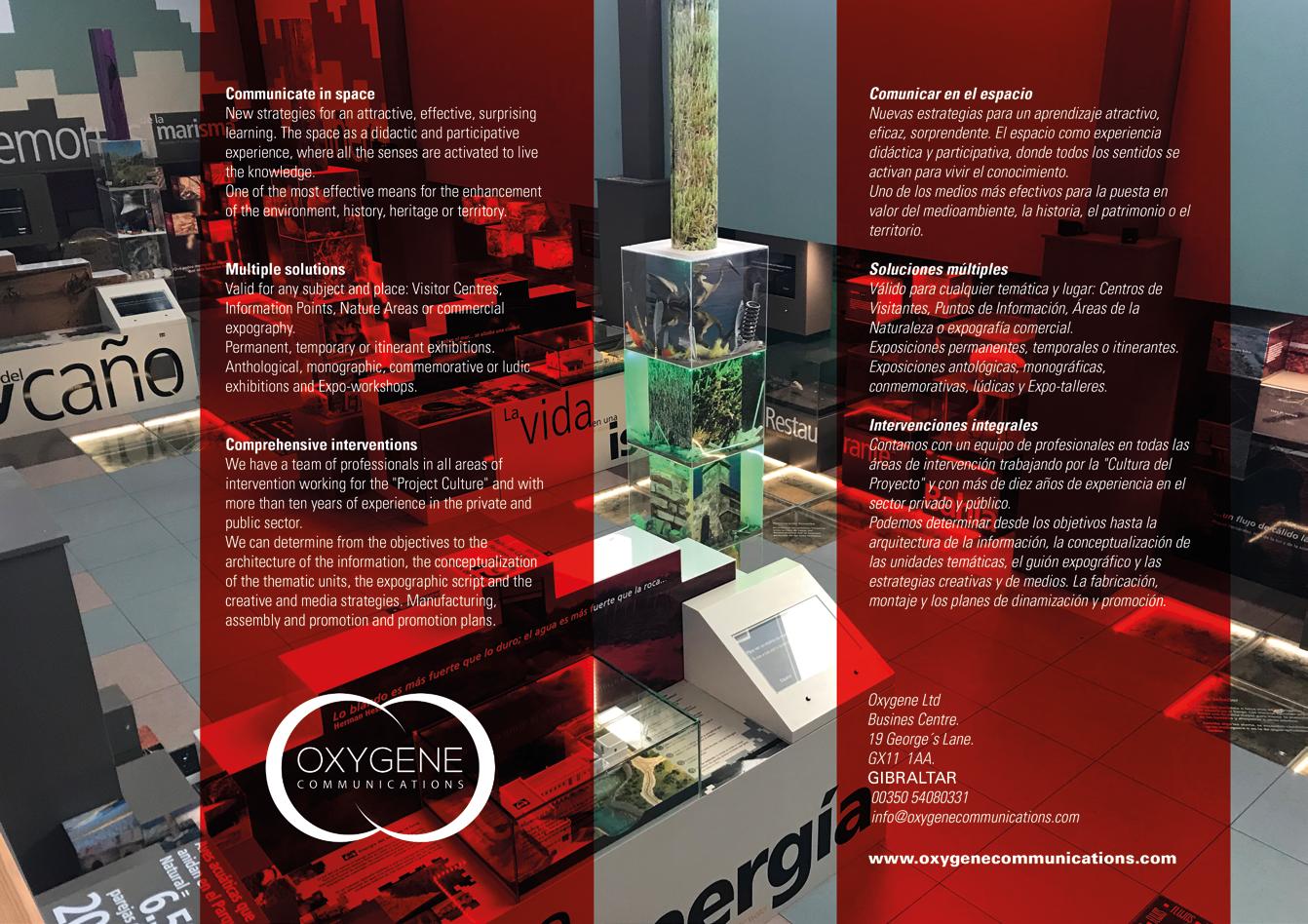
SANTIAGO DE COMPOSTELA
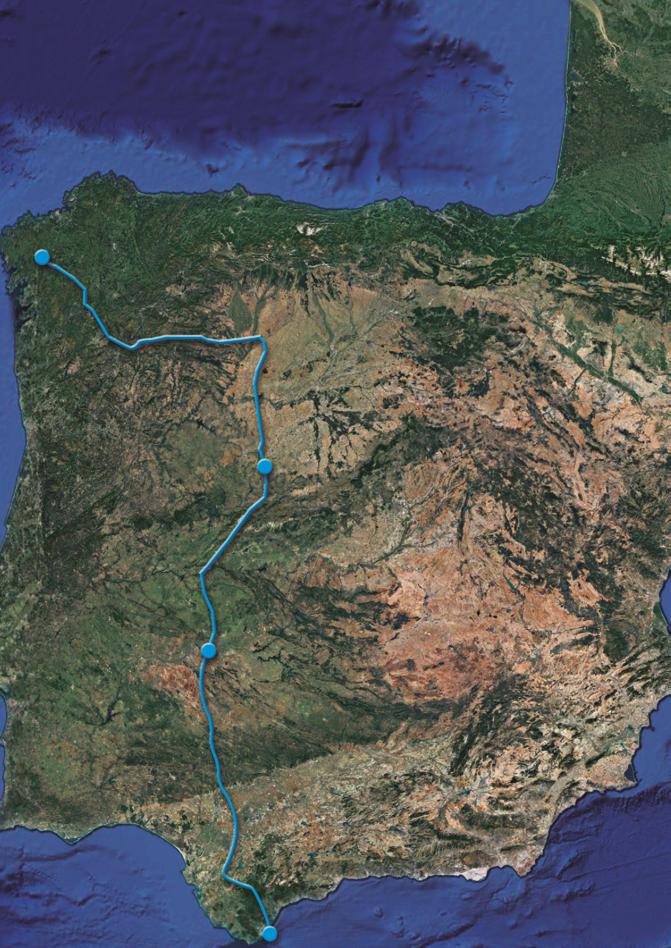
SALAMANCA
MÉRIDA
STRETCH 3
Compostela
de
Santiago
We left Salamanca at about ten in the morning of the 9th of August. Now on our third stretch, the journey would take us to Santiago de Compostela, the capital of northwest Spain’s Galicia region. Fifteen minutes out of the World Heritage city on the A-66, we stopped for petrol. The morning was cool and fresh. There were no clouds, a soft semi-translucent mist veiled the distant hills. Silvery beams of light reflected here and there, produced by minute water particles, which merged to create fleeting luminous points that vanished just as soon as they had appeared. Contrary to the intense heat of Merida, the Salamanca air was unusually cool for this time of the year. On average, the warmest months are July and August with temperatures comfortably exceeding thirty degrees Celsius. Nevertheless, we had been lucky enough to enjoy pleasant temperatures that had not risen above twenty-five degrees. Still on the A-66, sixty-five kilometres north of Salamanca, we drove past Zamora, the capital of Zamora province in the Castile and León region. Northeast of Zamora, at the Zamora-Benavente Highway junction, we left the A-66 which runs northeast towards the Villafáfila Lagoons Reserve, a landscape that has a special beauty, especially at sunrise and sunset. Still in Zamora province, at about noon we stopped at a roadside café in Otero de Bodas, a little village 836 metres above sea level. Coffee was very good, light years ahead of the exorbitantly expensive, pitiful rubbish served in city centres today.
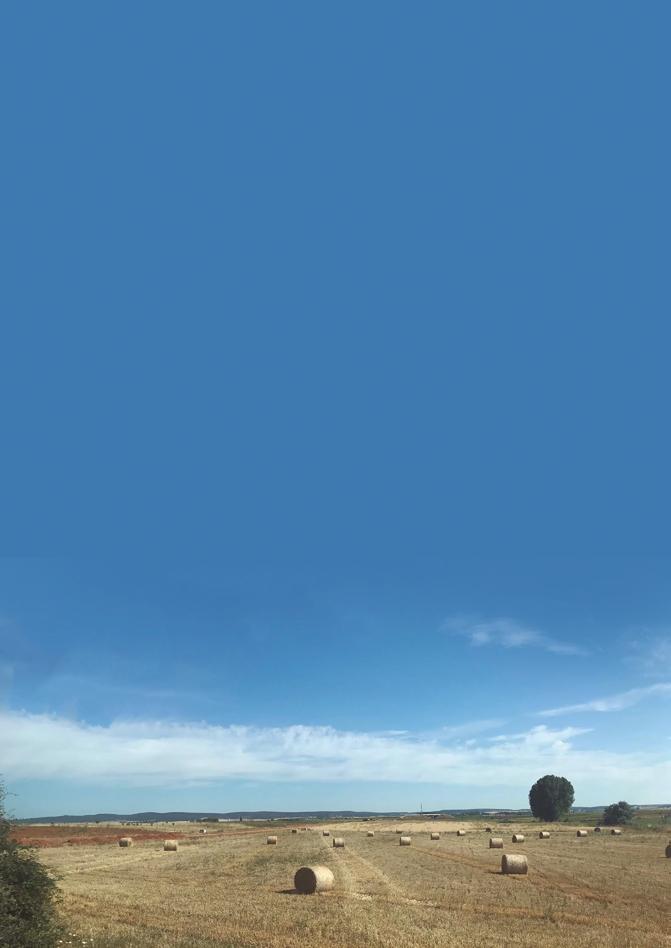
Salimos de Salamanca hacia las diez de la mañana del 9 de agosto. Ahora, en nuestro tercer tramo, el viaje nos llevaría a Santiago de Compostela, la capital de la región gallega del noroeste de España. A quince minutos de la ciudad Patrimonio de la Humanidad, por la A-66, nos detuvimos para repostar. La mañana era fresca y agradable. No había nubes, una suave niebla semitranslúcida velaba las colinas lejanas. Rayos de luz plateados se reflejaban aquí y allá, producidos por diminutas partículas de agua, que se fundían para crear fugaces puntos luminosos que se desvanecían tan pronto como habían aparecido. A diferencia del intenso calor de Mérida, el aire de Salamanca era inusualmente fresco para esta época del año. Por término medio, los meses más cálidos son julio y agosto, con temperaturas que superan cómodamente los treinta grados centígrados. Sin embargo, habíamos tenido la suerte de disfrutar de temperaturas agradables que no habían superado los veinticinco grados.
Todavía en la A-66, a sesenta y cinco kilómetros al norte de Salamanca, pasamos por Zamora, la capital de la provincia de Zamora en la región de Castilla y León. Al noreste de Zamora, en el cruce de la Autovía Zamora-Benavente, abandonamos la A-66 que discurre hacia el noreste en dirección a la Reserva de las Lagunas de Villafáfila, un paisaje que tiene una belleza especial, sobre todo al amanecer y al atardecer. Todavía en la provincia de Zamora, hacia el mediodía nos detuvimos en un café de carretera
71 OTWO 29 / DECEMBER 2021 70
GIBRALTAR
Looking at our map we decided to have lunch at Verín, a Galician town in the southeast of the province of Ourense about an hour away. Nearing two in the afternoon we entered Verín and straight into a restaurant on the high street to begin uncovering the flavours of Galicia. Lunch was very pleasant—traditional Galician soup (sopa Gallega), and a fresh green salad, followed by fresh salmon and hake. When one samples delightful Galician food, the clean taste of the ocean and an influence clearly Portuguese comes through.
After lunch we completed the final stretch from Verín, just under 200 kilometres away from Santiago de Compostela. One hundred kilometres north of Verin, the road runs past Ourense, capital of the province of Ourense, located in the autonomous community of Galicia. Also known as a cidade das Burgas (in Galician), Ourense is acclaimed because of its hot springs, such as the Burga de Abajo, a neoclassical fountain with thermals.
We completed the final distance to Santiago de Compostela, arriving at the capital of the autonomous community of Galicia, UNESCO World Heritage Site, and end point of Saint James’s Way at half past four that afternoon. The trip from Salamanca had taken about six and half hours all told.
Santiago de Compostela originates in the sanctum of Saint James the Great, now the Cathedral, which denotes the end of the Way of Saint James (Camino de Santiago). Considered one of the world’s most important Christian pilgrimages, Santiago’s Way has been followed by Catholic pilgrims since the 9th century. The premise of Santiago’s Way revolves around the discovery of the remains of the apostle James in Spain in 814 CE. According to legend St. James’s body who had died 800 years earlier, was taken from Jerusalem to Galicia by two disciples in a boat led by angels. The body was then secretly buried, in a field near the Galician village of Compostela where it lay undisturbed. A few centuries later Pelagius a shepherd hermit, discovered the apostle’s remains after he witnessed strange lights in the night sky.
Wisely seizing the opportunity, King Alfonso II of Asturias, was first to complete the pilgrimage to the site where the hermit had discovered the bones. On arrival he declared the site sacred and raised a small chapel on the burial spot. Later Alfonso whose reign
en Otero de Bodas, un pueblecito a 836 metros sobre el nivel del mar. El café estaba muy bueno, a años luz de la basura exorbitantemente cara y lamentable que se sirve hoy en día en los centros urbanos.
Mirando nuestro mapa, decidimos almorzar en Verín, una localidad gallega del sureste de la provincia de Ourense, a una hora de distancia. Cerca de las dos de la tarde entramos en Verín y fuimos directos a un restaurante de la calle principal para empezar a descubrir los sabores de Galicia. El almuerzo fue muy agradable: una sopa gallega tradicional (sopa Gallega), y una ensalada verde fresca, seguida de salmón fresco y merluza. Cuando uno prueba la deliciosa comida gallega, se percibe el sabor limpio del océano y una influencia claramente portuguesa.
Tras la comida, completamos el tramo final de Verín, a poco menos de 200 kilómetros de Santiago de Compostela. Cien kilómetros al norte de Verín, la carretera pasa por Ourense, capital de la provincia de Ourense, situada en la comunidad autónoma de Galicia. Conocida también como «cidade das Burgas »(en gallego), Ourense es aclamada por sus aguas termales, como la Burga de Abajo, una fuente neoclásica con aguas termales.
Completamos el último tramo hasta Santiago de Compostela, llegando a la capital de la comunidad autónoma de Galicia, Patrimonio de la Humanidad de la UNESCO y punto final del Camino de Santiago, a las cuatro y media de la tarde. El viaje desde Salamanca había durado unas seis horas y media en total.
Santiago de Compostela tiene su origen en el santuario de Santiago el Mayor, hoy la Catedral, que denota el final del Camino de Santiago. Considerado uno de los peregrinajes cristianos más importantes del mundo, el Camino de Santiago ha sido seguido por peregrinos católicos desde el siglo IX. La premisa del Camino de Santiago gira en torno al descubrimiento de los restos del apóstol Santiago en España en el año 814. Según la leyenda, el cuerpo de Santiago, que había muerto 800 años antes, fue llevado de Jerusalén a Galicia por dos discípulos en una barca guiada por ángeles. El cuerpo fue entonces enterrado en secreto, en un campo cerca de la aldea gallega de Compostela, donde yacía sin ser molestado. Unos siglos más tarde, Pelagio, un pastor ermitaño, descubrió los restos del apóstol tras presenciar unas extrañas luces en el cielo nocturno.
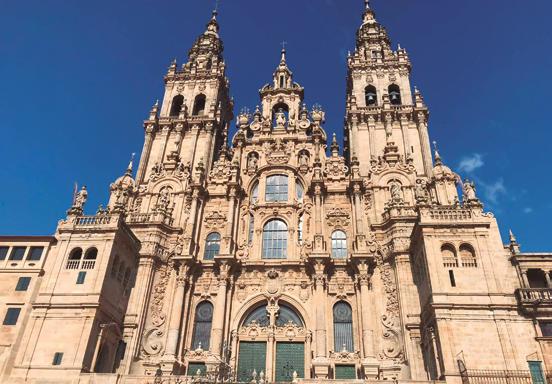
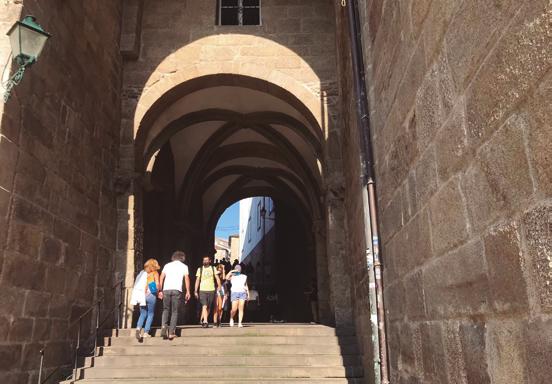
72 OTWO 29 / DECEMBER 2021 OTWO 29 / DECEMBER 2021 73

covered a span of 51 years from about 760 CE, would commission a larger temple that would attract pilgrims from all over the world in large numbers. The Santiago pilgrimage quickly established itself around the Christian world and attained the level of prestige that well known centres of religious pilgrimage such as Jerusalem and Rome enjoyed.
The Camino de Santiago legend entices pilgrims to this day. The allure of getting close to the remains of Saint James one of Jesus’ closest disciples draws in the crowds, which benefits the economy and employment of the surrounding region. Well preserved historic surroundings bring a sense of authentic genuineness, distinctiveness, and beauty which can provide competitive business advantages. This inspires the peoples’ imagination to keep the legends alive, enticing visitors which in turn stimulates business investment.
A popular starting point for pilgrims intending to follow Santiago’s way is León, a city on the Bernesga River, the capital of the Province of León. Walking an average of 25 kilometres a day, it takes about two weeks to cover the distance— 350 kilometres to Santiago de Compostela. The culmination of the walk is the Cathedral (Catedral Basilica de Santiago de Compostela), an integral component of the Santiago de Compostela World Heritage Site complex. The cathedral is located among the oldest monuments in Santiago de Compostela, grouped around James’s tomb.
The original structure of the Catedral Basilica de Santiago de Compostela is Romanesque, an architectural style popular in medieval Europe, characterized by semi-circular arches. Gothic or pointed components, were added later from as early as the late 12th to well into the 18th centuries. Finally, during the 17th and 18th centuries Baroque elements were incorporated. Baroque is a decorative, almost theatrical architectural style which appeared in Italy in the early 17th century and slowly spread across Europe.
The oldest part of the Cathedral is more than a thousand years old. The foundation stones were laid in the year 1075. By this time the legend of the discovery of the apostle’s body in Galicia was well known in most of Christendom. The validity and importance Christians attributed the story attracted the best builders of the Romanesque period to Santiago to take part in the construction. Among the many im-
Aprovechando la oportunidad, el rey Alfonso II de Asturias fue el primero en peregrinar hasta el lugar donde el ermitaño había descubierto los huesos. Al llegar, declaró el lugar sagrado y levantó una pequeña capilla en el lugar del enterramiento. Más tarde, Alfonso, cuyo reinado abarcó un lapso de 51 años desde el año 760 de la era cristiana, encargaría un templo más grande que atraería a peregrinos de todo el mundo en gran número. La peregrinación a Santiago se estableció rápidamente en el mundo cristiano y alcanzó el nivel de prestigio del que gozaban centros de peregrinación religiosa tan conocidos como Jerusalén y Roma.
La leyenda del Camino de Santiago atrae a los peregrinos hasta el día de hoy. El atractivo de acercarse a los restos de Santiago, uno de los discípulos más cercanos de Jesús, atrae a las multitudes, lo que beneficia a la economía y al empleo de la región circundante. Un entorno histórico bien conservado aporta una sensación de autenticidad, carácter distintivo y belleza que puede proporcionar ventajas comerciales competitivas. Esto inspira la imaginación de la gente para mantener vivas las leyendas, atrayendo a los visitantes, lo que a su vez estimula la inversión empresarial.
Un punto de partida popular para los peregrinos que pretenden seguir el camino de Santiago es León, una ciudad a orillas del río Bernesga, capital de la provincia de León. Caminando una media de 25 kilómetros al día, se tarda unas dos semanas en cubrir la distancia -350 kilómetros- hasta Santiago de Compostela. La culminación de la caminata es la Catedral (Catedral Basílica de Santiago de Compostela), componente integral del conjunto del Patrimonio Mundial de Santiago de Compostela. La catedral se encuentra entre los monumentos más antiguos de Santiago de Compostela, agrupados en torno a la tumba de Santiago.
La estructura original de la Catedral Basílica de Santiago de Compostela es románica, un estilo arquitectónico popular en la Europa medieval, caracterizado por arcos de medio punto. Posteriormente se añadieron componentes góticos o apuntados desde finales del siglo XII hasta bien entrado el XVIII. Finalmente, durante los siglos XVII y XVIII se incorporaron elementos barrocos. El barroco es un estilo arquitectónico decorativo, casi teatral, que apareció en Italia
OTWO 29 / DECEMBER 2021 75 74 OTWO 29 / DECEMBER 2021
portant builders and designers who took part, Maestro Mateo, who designed the final sections of the naves, especially the “Pórtico de la Gloria,” stands out. The Cathedral was completed and dedicated in the year 1211. Even before final completion the temple enjoyed a sacred privilege— anyone visiting the Cathedral during a Holy Year would receive forgiveness for their sins.
The Cathedral is the centre point of the city. One of the streets that leads to it is Rua da Raiña which is pedestrianised, and famous for its magnificent cafes, bars and restaurants where excellent Galician food is served. The restaurant windows exhibit explosions of fresh colour with enticing displays of meats, seafood, fish, tapas and the traditional pinchos Gallegos. The finest fare Galician cuisine has to offer is served in small portions or pinchos— layered food piled on bread slices secured with toothpicks.
After visiting the Cathedral site including the small chapel where James’s tomb is located, and with an empty stomach, we walked back into Rua da Raiña. Spoilt for choice, we entered a Taberna do Obispo, a long bar counter with a glass showcase of equal length, full of an impressive variety of food in the form of pinchos and tapas. A beer and a chistorra (sausage) pincho or two worked to activate the correct juices, and a short walk took us to Restaurante Xacobe where we had dinner. Here we sampled exquisite garlic prawns, supreme Galician octopus with paprika and extra virgin olive oil, together with delicious Zamburiñas, grilled scallops served with garlic, parsley, olive oil and a touch of chilli. We finished with Santiago Cake or Compostela Cake, a traditional Galician dessert, specifically from the Santiago de Compostela area, consisting mainly of almonds, sugar, and eggs. Galician food is good, prepared using fresh, healthy, organic ingredients from the local area to the delight of visitors who enjoy a plethora of exciting options to choose from.
Together with the cathedral and the apostle’s chapel-tomb, Santiago offers some other interesting sites and buildings worth visiting. One of these is the quirky Casa do Cabildo. Built in 1758, it features an elegant baroque façade. Curiously, the building is only four meters thick, it’s function purely decorative, intended to serve as stage curtain to the cathedral square.
a principios del siglo XVII y se extendió lentamente por toda Europa.
La parte más antigua de la catedral tiene más de mil años. Las piedras fundacionales se colocaron en el año 1075. En esta época, la leyenda del descubrimiento del cuerpo del apóstol en Galicia era bien conocida en la mayor parte de la cristiandad. La validez e importancia que los cristianos atribuían a la historia atrajo a los mejores constructores del románico a Santiago para participar en la construcción. Entre los muchos constructores y diseñadores importantes que participaron, destaca el Maestro Mateo, que diseñó los tramos finales de las naves, especialmente el “Pórtico de la Gloria”. La Catedral se terminó y se dedicó en el año 1211. Incluso antes de su finalización, el templo gozaba de un privilegio sagrado: quien visitara la Catedral durante un Año Santo recibiría el perdón de sus pecados. La Catedral es el punto central de la ciudad. Una de las calles que conducen a ella es la Rua da Raiña, que es peatonal, y famosa por sus magníficos cafés, bares y restaurantes donde se sirve una excelente comida gallega. Los escaparates de los restaurantes exhiben explosiones de colores frescos con tentadoras muestras de carnes, mariscos, pescados, tapas y los tradicionales pinchos gallegos. Los mejores platos de la cocina gallega se sirven en pequeñas porciones o pinchos, que se apilan en rebanadas de pan sujetas con palillos.
Tras visitar el recinto de la Catedral, incluida la pequeña capilla donde se encuentra la tumba de Santiago, y con el estómago vacío, volvimos a entrar en la Rua da Raiña. Sin poder elegir, entramos en una Taberna do Obispo, un largo mostrador de bar con una vitrina de igual longitud, lleno de una impresionante variedad de comida en forma de pinchos y tapas. Una cerveza y uno o dos pinchos de chistorra sirvieron para activar los jugos correctos, y un breve paseo nos llevó al Restaurante Xacobe, donde cenamos. Aquí probamos unas exquisitas gambas al ajillo, un supremo pulpo a la gallega con pimentón y aceite de oliva virgen extra, junto con unas deliciosas zamburiñas, vieiras a la plancha servidas con ajo, perejil, aceite de oliva y un toque de guindilla. Terminamos con la tarta de Santiago o tarta compostelana, un postre tradicional gallego, concretamente de la zona de Santiago de Compostela, compuesto
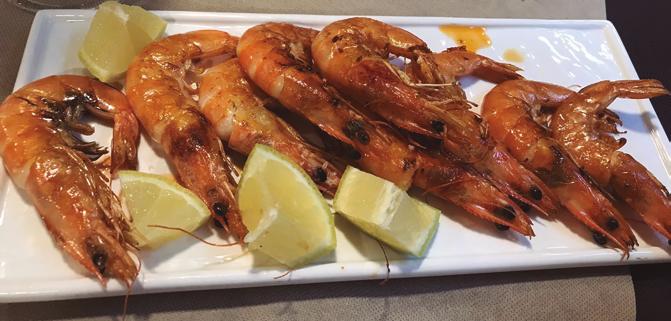



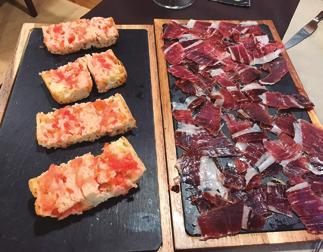
76 OTWO 29 / DECEMBER 2021 OTWO 29 / DECEMBER 2021 77


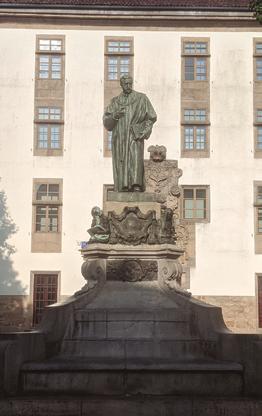
The hostel of the Catholic Monarchs (Hostal de los Reyes Catolicos) is another of the important buildings in Santiago well worth mentioning. Founded in 1499, the hostel was used as lodgings for pilgrims who had completed the long walk along Saint James’s Way and finally reached their destination. The architecture is Gothic, with a lovely Plateresque façade (Silversimth style), decorated with grilles that date from the 16th century. Today the building is a Parador hotel.
After the long morning’s drive, the afternoon site visits, and the evening dinner, we headed back to hotel Los Abetos, located close to the entrance route to the French Way to Santiago, a reference point for pilgrims. This grand hotel consists of 149 rooms, 10,000 square metres of botanical garden, exclusive villas, function rooms, chapel and one of the best restaurants in Santiago. We had allocated two nights in Santiago. Using our hotel as a base, the next morning we headed towards Cape Fisterre on the rocky Costa da Morte—Death Coast.
principalmente por almendras, azúcar y huevos. La comida gallega es buena, preparada con ingredientes frescos, sanos y ecológicos de la zona para deleite de los visitantes que disfrutan de una gran cantidad de opciones interesantes para elegir.
Además de la catedral y la capilla-tumba del apóstol, Santiago ofrece otros lugares y edificios interesantes que merece la pena visitar. Uno de ellos es la peculiar Casa do Cabildo. Construida en 1758, presenta una elegante fachada barroca. Curiosamente, el edificio sólo tiene cuatro metros de grosor, su función es puramente decorativa, destinada a servir de telón a la plaza de la catedral.
El Hostal de los Reyes Católicos es otro de los edificios importantes de Santiago que merece la pena mencionar. Fundado en 1499, el albergue servía de alojamiento a los peregrinos que habían completado la larga caminata por el Camino de Santiago y llegaban por fin a su destino. La arquitectura es gótica, con una preciosa fachada plateresca (estilo silversimio), decorada con rejas que datan del siglo XVI. Hoy el edificio es un Parador de Turismo.
Tras el largo viaje de la mañana, las visitas de la tarde y la cena, nos dirigimos al hotel Los Abetos, situado cerca de la ruta de entrada al Camino Francés de Santiago, punto de referencia para los peregrinos. Este gran hotel consta de 149 habitaciones, 10.000 metros cuadrados de jardín botánico, villas exclusivas, salones de actos, capilla y uno de los mejores restaurantes de Santiago. Teníamos asignadas dos noches en Santiago. Utilizando nuestro hotel como base, a la mañana siguiente nos dirigimos hacia el Cabo Fisterre, en la rocosa Costa da Morte.
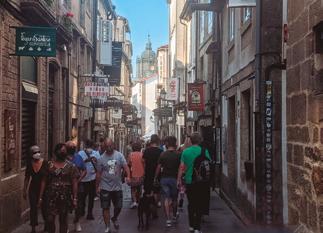
78 OTWO 29 / DECEMBER 2021 OTWO 29 / DECEMBER 2021 79
We´re raising £10,000
to restore and renovate historical sights around Gibraltar
Whilst there is a rich history of defence on the Rock of Gibraltar there is no one organisation that takes responsibility for the upkeep of the various guns and other military positions.
It is my mission to do my best to restore, renovate and refurbish as many of these sights as possible to ensure our heritage and history is not lost to neglect.
This has been a completely voluntary project which has recieved minimum adhoc funding. Any donations will go towards the purchasing of the necessary materials and equipment to continue this project.
COLLABORATE IN THIS LINK:
https://www.justgiving.com/crowdfunding/rachael-jackson-904?utm_term=AGy2zwmZ9--
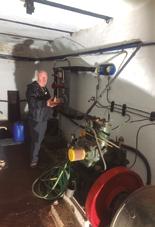

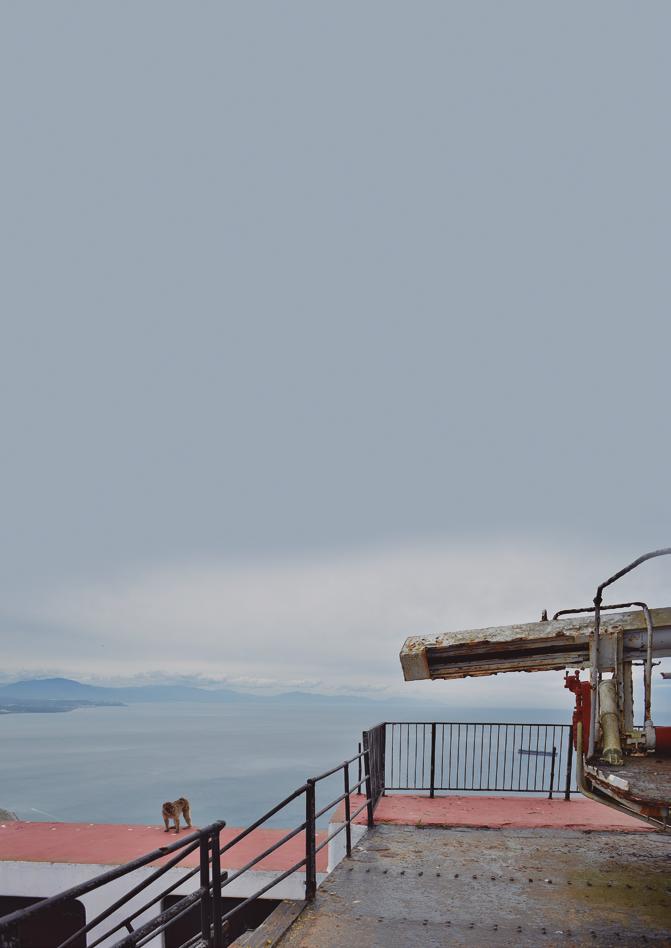

VOLUME 2 / VOLUMEN 2
The pending debt with the Moriscos
La deuda pendiente con los moriscos
Juanlu González
Article and images


Our group’s arrival in Testour was anything but triumphant. We arrived in the midst of a storm and a torrential downpour, but despite the inclement weather, we couldn’t pass up the chance to explore Tunisia’s most Andalusian city. There wasn’t a single person on the streets. However, as soon as we stepped into the town square, word circulated immediately that some visitors from Andalusia had come. We were soon surrounded by a large group of Andalusian Moorish descendants, eager to meet their distant cousins and have their pictures taken with them. They were all eager to tell us about their origins and recite their Andalusian family names. The icy cold of the morning suddenly turned into human warmth. We were at home, once again.
La entrada de nuestra comitiva en Testour fue cualquier cosa menos triunfal. Llegamos en medio de una tormenta y de un auténtico diluvio pero, aún en esas duras condiciones meteorológicas, no podíamos desaprovechar la oportunidad de visitar la ciudad más andaluza de Túnez. No había un alma en las calles. Sin embargo, al poco de pisar la plaza del pueblo, rápidamente se corrió la voz de que habían llegado algunos viajeros procedentes de Andalucía. Pronto nos vimos rodeados de un nutrido grupo de descendientes de moriscos andalusíes, deseosos de encontrarse con sus primos lejanos y fotografiarse con ellos. Todos tenían ganas de hablarnos de su procedencia y recitarnos sus apellidos familiares de raigambre andaluza. El frío gélido de la mañana,

83 82
OTWO 29 / DECEMBER 2021 OTWO 29 / DECEMBER 2021
L'expulsió dels moriscos (1894), Gabriel Puig Roda, Museu de Belles Arts de Castelló.
We could see the Andalusian district from the Testour square, which was made up of numerous streets of old whitewashed houses with Andalusian tiles on the roofs, which is what it is known everywhere except in Spain, where it is called Arabic tile... Our fellow citizens immediately escorted us to the Great Mosque, a Muslim temple with allusions to the other monotheistic religions “of the book.” We were told that it was constructed side by side by Jews and Muslims who had been banished from the Peninsula, as demonstrated by various Stars of David strategically placed throughout the structure.
However, the most striking of the entire architectural ensemble was the minaret clock, whose hands rotate in the opposite direction to how clocks usually do. Its particular counterclockwise movement is more than a simple whim; it is at once a protest, an omen and a wish. They hope in this way to deceive time so that one day not too far away, that expatriate people in Tunisian lands will recover the happy moments when they lived in the earthly paradise, in Al Andalus. And no, that dream is not a mere extravagance that has survived unscathed the voracious appetite of Cronos that devours, engulfs and erases everything. An old, worn-out old man who accompanied us on the visit, and who was already running out of his last days of life, personally confessed to me that the greatest joy he could have before leaving, would be to visit the Alhambra in Granada. They have it engraved in their hearts.
We were at that moment in the town’s Casa de la Cultura, a place where, between thunder and thunder, overlapping the loud tinkling of raindrops falling on the patio floor, a lilting melody whose notes were absolutely familiar to us was making its way through. It came from about twenty children and adolescents who were giving classical music lessons. Classical, yes, but not Mozart or Vivaldi, but Andalusian classical music, the kind that can be heard throughout North Africa and the Middle East but is almost never heard in Andalusia. The Maluf was playing, which is the name given to the Andalusian music of Tunisia, closely related to its counterparts in Algeria and Morocco. Every year, Testour celebrates a renowned international festival to preserve and project Andalusian music in the world of which we have no news here. Along with it, in autumn, they organize a great
de pronto, se tornó en calor humano. Estábamos en casa, una vez más.
Desde la plaza de Testour se atisbaba el barrio andaluz, formado por varias calles de casitas viejas, encaladas y techadas con teja andaluza, que es como se denomina en todos sitios, salvo en España, donde se la llama teja árabe… Inmediatamente, nuestros compatriotas nos acompañaron a la Gran Mezquita; un templo musulmán lleno de guiños a las otras religiones monoteístas «del libro». Nos dijeron que la habían construido, codo con codo, judíos y musulmanes expulsados de la Península y de eso daban cuenta varias estrellas de David estratégicamente situadas en lugares prominentes del edificio.
Pero lo más llamativo de todo el conjunto arquitectónico era el reloj del alminar, cuyas manecillas giran en sentido inverso a como lo hacen habitualmente los relojes. Su particular movimiento antihorario es más que un simple capricho; es a la vez protesta, augurio y deseo. Esperan así engañar al tiempo para que un día no muy lejano, aquel pueblo expatriado en tierras tunecinas recupere los momentos felices cuando moraban en el paraíso terrenal, en Al Andalus. Y no, ese sueño no es una mera extravagancia que ha sobrevivido incólume al voraz apetito de Cronos que todo lo devora, engulle y borra. Un viejito ajado que nos acompañaba en la visita y que agotaba ya sus últimos días de vida, me confesó personalmente que la mayor alegría que podría tener antes de partir, sería visitar la Alhambra de Granada. Lo llevan grabado a fuego.
Estábamos en esos instantes en la Casa de la Cultura del pueblo, un lugar donde, entre trueno y trueno, sobreponiéndose al fuerte tintineo de las gotas de lluvia cayendo en la solería del patio, se abría paso una cadenciosa melodía cuyas notas nos eran absolutamente familiares. Provenía de una veintena de niños, niñas y adolescentes que daban clases de música clásica. Clásica sí, pero no la de Mozart o Vivaldi, sino la música culta andaluza, esa que se oye en todo el norte de África y en Medio Oriente pero casi nunca suena en Andalucía.
Sonaba el Maluf, que es el nombre que recibe la música andalusí de Túnez, muy emparentada con las homólogas de Argelia y Marruecos. Todos los años, Testour celebra un reconocido festival in-


85 84 OTWO 29 / DECEMBER 2021 OTWO 29 / DECEMBER 2021



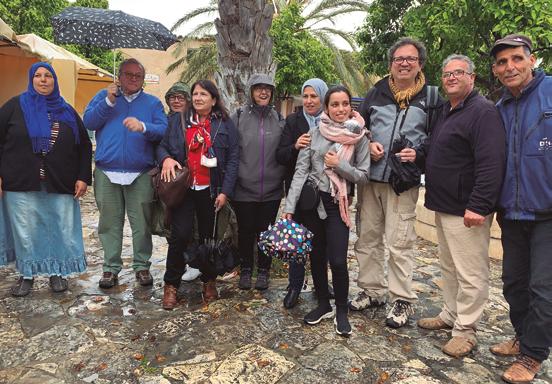
national fair around their star agricultural product: the pomegranate. And it is that our countrymen do not lack detail....
The people that live in this area are descendants of Moors who were expelled from the Iberian Peninsula. Surprisingly, people continued to speak Spanish long into the 18th century. They have many of their native phrases and traditions interwoven in Tunisian speech and culture, as well as their identity as a people, even today.
In addition to Tunisia, there are many other countries that welcomed Moors and benefited greatly from their culture, technology, experience, trade networks and knowledge. Obviously, because of its geographical location, it is Morocco that has the largest Moorish population, with more than five million people boasting this ancestry, especially in the northern regions. The Alawite kingdom is followed, in order from largest to smallest, by Tunisia, Algeria, Libya, Mauritania, Mali and Turkey (Anatolia), among others, in a diaspora that could be considered one of the largest - and least known - in the world. Therefore, to affirm that a good part of the essence of Andalusia is found in Africa and Asia, in the memory of the descendants of the Moors, is nothing more than the endorsement of historical facts, however unknown they may be or may have wanted them to be.
Human travel through the Strait was common in both directions for hundreds of thousands of years. Of course, it wasn’t the impassable frontier or the ordinary trench that we are familiar with today. Indeed, over extended periods of time, both sides belonged to the same kingdoms or had strong neighborly connections, all while being part of the same culture or a mix of cultures. For thousands of years, the native substratum of the western Mediterranean had interacted in a similar fashion with Phoenicians, Carthaginians, Romans, Visigoths, Arabs... and something similar happened throughout the Muslim period.
Stories like that of the marriage between the North African Ali Ben Rachid, founder of Chaouen, and Lalla Zahra, a covered Hispanic from a noble Catholic family converted to Islam, were not uncommon among ordinary people either. There was some emigration to the south of the Strait when Andalusian
ternacional para conservar y proyectar la música andalusí en el mundo del que aquí no tenemos noticias. Junto a él, en otoño, organizan una gran feria de carácter nacional alrededor de su producto agrícola estrella: la granada. Y es que a nuestros paisanos no les falta detalle… Los habitantes de esa comarca son descendientes de moriscos desterrados de la Península Ibérica. Curiosamente, hablaron español hasta bien entrado el siglo XVIII. Aún hoy mantienen muchas de sus palabras y tradiciones originarias insertadas en el dialecto y la cultura tunecina y, lo que es más importante, su identidad como pueblo. Además de Túnez, hay muchos otros países que acogieron a moriscos y se beneficiaron enormemente de su cultura, tecnología, experiencia, redes comerciales y conocimientos. Obviamente, por su situación geográfica, es Marruecos quien posee la mayor parte de población morisca, con más de cinco millones de personas que presumen de esa ascendencia, especialmente en las regiones del norte. Tras el reino alauita, en orden de mayor a menor, le siguen Túnez, Argelia, Libia, Mauritania, Malí y Turquía (Anatolia), entre otros; en una diáspora que podría considerarse como una de las más grandes —y desconocidas— de todo el mundo. Por eso, afirmar que buena parte de la esencia de Andalucía se encuentra en África y Asia, en la memoria de los descendientes de los moriscos, no es sino el refrendo de unos hechos históricos, por muy desconocidos que sean o hayan querido que lo sean.
Durante cientos, miles de años, el trasiego humano por el Estrecho era algo común en ambas direcciones. Desde luego, no era la frontera insalvable o la fosa común que conocemos hoy. De hecho, a lo largo de grandes periodos de tiempo, ambas orillas pertenecían a los mismos reinos o mantenían relaciones de buena vecindad, dentro de una misma cultura o mezcla de ellas. El sustrato nativo del mediterráneo occidental se había mezclado de manera similar por miles de años con fenicios, cartagineses, romanos, visigodos, árabes… y en la época musulmana ocurrió algo similar. Historias como la del matrimonio entre el norteafricano Ali Ben Rachid, fundador de Chaouen, y Lalla Zahra, hispana vejeriega de familia noble católica convertida al Islam, no eran extraños tampoco entre
87 86 OTWO 29 / DECEMBER 2021 OTWO 29 / DECEMBER 2021
border towns could fall into the hands of the invading armies from the north of the Peninsula. That is why the port of Algeciras always had a strategic value as a way to ensure an easy escape to safe lands where no Andalusian would be punished for their language or religion. We saw this, for example, in the case of the Sufi holy man from Jaén, Ibn Ashir, who preferred to continue to process his religion in Fez rather than expose himself to the inquisitorial persecution of the intransigent invaders from the north. Both stories are told in other chapters of Narrowing.
But these emigrants were not Moriscos. The Moriscos spoke Spanish and were baptized in the Catholic faith. In spite of the Capitulations of Santa Fe of 1492, where religious tolerance was promised to the Andalusians, respect for their customs, clothing, laws and properties... in exchange for a kind of fusion with the Garnatine kingdom where a 50% co-government between Muslims and Christians was established, the Catholic kings betrayed their promise in 1499. Since then, with Cardinal Cisneros at the head, a brutal persecution of the Muslims took place, with tragic episodes such as the burning of books in the libraries of Granada, the forced conversion to Christianity, the transformation of mosques into churches and the closing of public baths.
From this moment on, the Andalusian Muslims were progressively converted into Moors. With Charles I, a new period of peaceful and tolerant coexistence returned, but Philip II worsened the repression, prohibiting speaking Arabic and Andalusian music, among other cultural restrictions contained in a Pragmatic of 1567, which eventually provoked the Moorish rebellion of the Alpujarras from 1568 to 1571. After three years of war, the Moors were deported to other regions of Castile or turned into slaves. Finally, Philip III ordered their expulsion in 1609. However, many thousands of them managed to circumvent the order and remain hidden in their land, secretly professing their religion and customs - as recent academic research has shown - in some cases very much in the media, until well into the 20th century. Another important number of Moriscos managed to return to the Peninsula after the expulsion, we cannot forget that they spoke Spanish perfectly and that they did not differ ethnically from the rest of the population, so they could perfectly pass
gente corriente. Sí que se produjo cierta emigración al sur del Estrecho cuando poblaciones fronterizas andalusíes podían caer a manos de los ejércitos invasores del norte de la Península. Por eso el puerto de Algeciras tuvo siempre un valor estratégico como forma de asegurar una huida fácil a tierras seguras donde no se iba a castigar a ningún andaluz por su lengua o religión. Lo vimos, por ejemplo en el caso del santón sufí jimenato, Ibn Ashir, que prefirió seguir procesando su religión en Fez antes que exponerse a la persecución inquisitorial de los intransigentes invasores del norte. Ambas historias las contamos en otros capítulos de Estrechando.
Pero esos emigrantes no eran moriscos. Los moriscos hablaban castellano y estaban bautizados en la fe católica. A pesar de las Capitulaciones de Santa Fe de 1492, donde se prometió tolerancia religiosa a los andalusíes, el respeto a sus costumbres, vestimentas, leyes y propiedades… a cambio de una especie de fusión con el reino garnatí donde se establecía un cogobierno entre musulmanes y cristianos al 50%, los reyes católicos traicionaron su promesa en 1499. Desde entonces, con el cardenal Cisneros a la cabeza, se produjo una brutal persecución a los musulmanes, con trágicos episodios como la quema de libros de las bibliotecas de Granada, la conversión forzosa al cristianismo, la transformación de mezquitas en iglesias y el cierre de los baños públicos.
A partir de este momento, los musulmanes andaluces se fueron convirtiendo progresivamente en moriscos. Con Carlos I volvió un nuevo periodo de convivencia pacífica y tolerante, pero Felipe II agravó la represión, prohibiendo hablar en árabe y la música andalusí, entre otras restricciones culturales recogidas en una Pragmática de 1567 que, a la postre provocó la rebelión morisca de las Alpujarras desde 1568 a 1571. Tras tres años de guerra, los moriscos fueron deportados a otras regiones de Castilla o convertidos en esclavos. Finalmente, Felipe III ordenó su expulsión en 1609. Sin embargo, muchos miles de ellos consiguieron burlar la orden y permanecer ocultos en su tierra, profesando en secreto su religión y sus costumbres —como demuestran recientes investigaciones académicas— en algunos casos muy mediáticos, hasta bien entrado el siglo XX. Otra importante cantidad de moriscos lo-


89 OTWO 29 / DECEMBER 2021 OTWO 29 / DECEMBER 2021 88
as what they were, Spanish citizens. And, of course, a large contingent crossed the Mediterranean and populated the southern shore of the Mare Nostrum throughout the Maghreb to the East, always dreaming of returning home someday.
Therefore, on the one hand, we have Moorish descendants in Andalusia and in the rest of today’s Spain, and even in overseas territories that belonged to the Spanish empire that probably do not know their origin or have been almost completely diluted. And, on the other hand, we have Moorish descendants all over North Africa, perfectly aware of their roots, with their treasured culture and history, and intermarrying among themselves to preserve the lineages. They keep the keys to their houses in Al Andalus, along with the title deeds and their family trees. Two worlds that run parallel but will necessarily have to shake hands at some point.
Although the project sleeps the sleep of the just in a drawer of Moncloa, the gesture of granting double nationality to the Diaspora Moors, as it was done at the time with the Sephardic Jews, could be a decent start. They appear to have forgotten that the greatest approach to confront the future is to reconcile with the past.
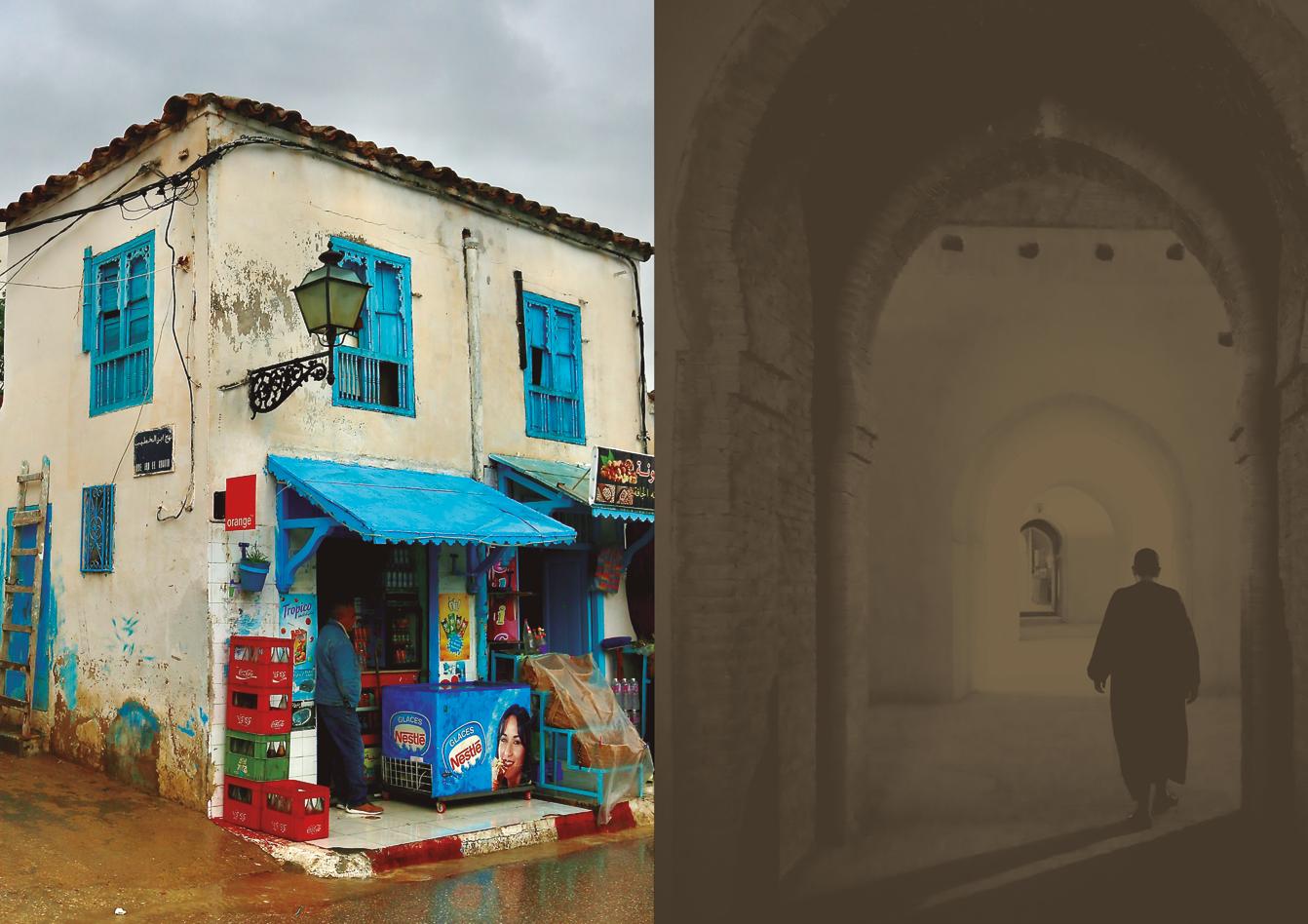
gró volver a la Península tras la expulsión, no podemos olvidar que hablaban castellano perfectamente y que no se diferenciaban étnicamente del resto de la población, por lo que podían pasar perfectamente como lo que eran, ciudadanos españoles. Y, por supuesto, un gran contingente cruzó el Mediterráneo y poblaron la orilla sur del Mare Nostrum por todo el Magreb hasta el oriente, soñando siempre con volver a casa algún día. Así que, por un lado, tenemos descendientes de moriscos en Andalucía y en el resto de la actual España, e incuso en territorios de ultramar que pertenecieron al imperio español que, probablemente, desconozcan su origen o se haya diluido casi por completo. Y, por otro, tenemos descendientes de moriscos en todo el norte de África, perfectamente conscientes de sus raíces, con su cultura y su historia atesorada y casándose entre ellos para preservar los linajes. Conservan las llaves de sus casas en Al Andalus, junto los títulos de propiedad y sus árboles genealógicos. Dos mundos que discurren paralelos pero que, necesariamente, tendrán que darse la mano en algún momento.
Quizá, el gesto de conceder la doble nacionalidad a los moriscos de la diáspora, como ya se hizo en su momento con los judíos sefardíes, sería un buen comienzo, aunque el proyecto duerme el sueño de los justos en un cajón de Moncloa. Parecen olvidar que la reconciliación con el pasado es la mejor manera de afrontar el futuro.
90 OTWO 29 / DECEMBER 2021
91 OTWO 29 / DECEMBER 2021

ALOE VERA PLANT
Planta Aloe Vera

Aloe vera is scientifically proven by a study in Iran to benefit those suffering from depression and other mood disorders, that may lead to type 2 diabetes in later life.
Aloe Vera is a stemless, or very short-stemmed plant growing to 60–100 centimetres tall spreading by offsets. The leaves are thick and fleshy. Its colour varies from green to grey green with some varieties showing white flecks on their upper and lower stem surfaces. The margin of the leaf is serrated and has small white teeth. Humans have grown the Aloe Vera plant for thousands of years for decoration and medicinal purposes.
The flowers are produced in summer on a spike up to 90 cm tall. Each flower being pendulous with a yellow tubular corolla flower of 2–3 cm long.
Aloe Vera leaves, which is also called the Wonder Plant, contain chemicals of the plants origin under study for possible bioactivity. It supposedly has therapeutic benefits, according to its biggest fans. The gel of some varieties can either be applied directly to the skin or used in the form of pills to promote health and well-being, such as acylated mannans, which helps for the regulation of blood, cholesterol levels, removing plaques in blood vessels and many more beneficial things for our body.
There are around 20 different types of Aloe Vera
plants. It's important when looking after an Aloe Vera plant that it isn't overwatered. When watering that plant make sure the soil has drained well and is dry before watering again. You can check this by sticking gently your finger inside the soil. If the soil is damp, it doesn't need water.
If the soil is dry, that's when it is time to water the plant. It is recommended to water Aloe Vera every two to three weeks. An interesting fact that plant lovers know is that overwatering any plant causes more harm to it than the opposite.
As with all succulents, Aloe Vera can gather dust while indoors. So, every once in a while, it may be worth giving Aloe Vera a dust with a light brush.
Un estudio realizado en Irán ha demostrado científicamente que el aloe vera beneficia a las personas que sufren depresión y otros trastornos del estado de ánimo, lo que puede conducir a la diabetes de tipo 2 en el futuro.
El aloe vera, es una planta sin tallo, o con tallo muy corto, que crece hasta los 60-100 centímetros de altura y se extiende mediante vástagos. Las hojas son gruesas y carnosas. Su color varía entre el verde y el verde grisáceo, con algunas variedades que presentan motas blancas en las superficies superior e inferior del tallo. El margen de la hoja es dentado y tiene pequeños dientes blancos. El ser humano ha cultivado la planta de Aloe Vera durante miles de años con fines decorativos y medicinales.
Las flores se producen en verano en una espiga de hasta 90 cm de altura. Cada flor es colgante con una corola tubular amarilla de 2-3 cm de largo.
Las hojas de Aloe Vera, también llamada la planta maravillosa, contienen sustancias químicas de origen vegetal que se están estudiando para su posible bioactividad. Se supone que tiene beneficios terapéuticos, según sus mayores fans. El gel de algunas variedades puede aplicarse directamente sobre la piel o utilizarse en forma de píldoras para promover la salud y el bienestar, como los mananos acilados, que ayudan a la regulación de la sangre, los niveles de colesterol, la eliminación de placas en los vasos sanguíneos y muchas más cosas beneficiosas para nuestro organismo.
Existen alrededor de 20 tipos diferentes de plantas de Aloe Vera. Es importante que cuando se cuide una planta de Aloe Vera no se la riegue en exceso.
Cuando riegue la planta, asegúrese de que la tierra ha drenado bien y está seca antes de volver a regar. Puede comprobarlo introduciendo suavemente el dedo en la tierra. Si la tierra está húmeda, no necesita agua. Si la tierra está seca, es el momento de regar la planta. Se recomienda regar el Aloe Vera cada dos o tres semanas. Un hecho interesante que los amantes de las plantas saben es que regar en exceso cualquier planta le causa más daño que lo contrario.
Como todas las suculentas, el Aloe Vera puede acumular polvo cuando está en el interior. Así que, de vez en cuando, puede valer la pena darle al Aloe Vera un polvo con un cepillo ligero.
92
OTWO 29 / DECEMBER 2021 OTWO 29 / DECEMBER 2021
93
El camino de la naturaleza
Nature’s Way
What happens beneath our skin in response to nature?
¿Qué ocurre bajo nuestra piel en respuesta a la naturaleza?

The notion of forest medicine may seem modern, but in truth, it reaches back centuries across the human experience. If we use the industrial revolution as the anchor of urbanization, humans have only spent 0.01% of our time on Earth in built environments.
That means 99.99% of our species’ history was spent in and amongst the diverse flora and fauna of this planet. Considering how long evolution takes, some scientists argue we haven’t actually adapted to our modern concrete jungles from a biological point of view.
Our study of the month was authored by a team from the Center of Environment, Health and Field Sciences at Chiba University. They produced a thorough review of all the research in Japan related to the physiological impacts of nature on different systems of the body.
How does nature have its way?
• Cardiovascular: Reduces heart rate and both systolic and diastolic blood pressure.
• Hormones: Reduces levels of the stress hormone, cortisol
• Immune: Boosts natural killer cells for up to a month after walking through the forest
• Metabolic: Reduces blood glucose in non-insulin dependent diabetics
• Nervous: Reduces our fight-or-flight response, increases our rest-and-digest (relax) response
• Neurological: Reduces oxyhemoglobin concentrations through the prefrontal cortex, helping to produce calming sensations
Join us next month to learn how a community gardening program can support those living with the human immunodeficiency virus (HIV). In the meantime, follow Science & Nature for weekly research bites and to connect with our author.
Song, Chorong, Harumi Ikei, and Yoshifumi Miyazaki. “Physiological effects of nature therapy: A review of the research in Japan.” International journal of environmental research and public health 13.8 (2016): 781
La noción de medicina forestal puede parecer moderna, pero en realidad se remonta a siglos atrás en la experiencia humana. Si utilizamos la revolución industrial como ancla de la urbanización, los humanos sólo hemos pasado el 0,01% de nuestro tiempo en la Tierra en entornos construidos. Eso significa que el 99,99% de la historia de nuestra especie transcurrió en y entre la diversa flora y fauna de este planeta. Teniendo en cuenta el tiempo que dura la evolución, algunos científicos sostienen que en realidad no nos hemos adaptado a nuestras modernas junglas de hormigón desde un punto de vista biológico.
Nuestro estudio del mes es obra de un equipo del Centro de Medio Ambiente, Salud y Ciencias del Campo de la Universidad de Chiba. Hicieron una revisión exhaustiva de todas las investigaciones realizadas en Japón relacionadas con los impactos fisiológicos de la naturaleza en diferentes sistemas del cuerpo.
¿Cómo se las arregla la naturaleza?
• Cardiovascular: Reduce la frecuencia cardíaca y la presión arterial sistólica y diastólica.
• Hormonas: Reduce los niveles de la hormona del estrés, el cortisol.
• Inmunológico: Aumenta las células asesinas naturales hasta un mes después de caminar por el bosque.
• Metabólico: Reduce la glucosa en sangre en los diabéticos no dependientes de la insulina.
• Nervioso: Reduce nuestra respuesta de lucha o huida y aumenta nuestra respuesta de descanso y digestión (relajación).
• Neurológico: Reduce las concentraciones de oxihemoglobina a través del córtex prefrontal, ayudando a producir sensaciones de calma.
Acompáñenos el mes que viene para saber cómo un programa de jardinería comunitaria puede ayudar a quienes viven con el virus de la inmunodeficiencia humana (VIH). Mientras tanto, siga a Ciencia y Naturaleza para conocer los avances semanales de la investigación y conectarse con nuestro autor. Song, Chorong, Harumi Ikei y Yoshifumi Miyazaki. “Efectos fisiológicos de la terapia de la naturaleza: Una revisión de la investigación en Japón”. Revista internacional de investigación ambiental y salud pública 13.8 (2016): 781.
95 94
OTWO 29 / DECEMBER 2021 OTWO 29 / DECEMBER 2021
Dr. Owen Wiseman

Vegan Christmas Cake

DESCRIPTION
It’s that time of year again where we like to make an effort and want something special for our vegan guests….
This is not solely my recipe, I have taken ideas from other recipes .
May you all have a very Merry Christmas and a prosperous New Year.
INGREDIENTS
1 cup dried fruit , finely chopped.
1 tablespoon unwaxed orange zest .
½ cup walnuts, finely chopped.
1 teaspoon ground ginger.
½ teaspoon ground cinnamon.
1 teaspoon mixed spice.
Generous amount brandy.
¼ cup coconut oil.
1/5 cup) unsweetened almond milk.
4 tablespoons maple syrup or honey.
2 tablespoons lemon juice.
1 teaspoon vanilla extract.
Pinch salt.
1 ¼ cup) ground almonds.
1 ¼ cup almond, or any other sub flour .
2 heaped teaspoons baking powder.
¼ teaspoon baking soda.
Butter cream:

2\3 cup raw cashew nuts( soaked in cold water overnight.
2 tablespoons maple syrup or honey.
4 tablespoons unsweetened almond milk.
1 teaspoon vanilla extract
METHOD:
Place the dried fruit, orange zest, walnuts, ginger, cinnamon and mixed spice in a bowl and add a generous amount of brandy or sherry, until everything is roughly covered.
Keep covered in the fridge for around 24 hours, to allow the flavours to develop.
Before making the cake, preheat oven to 180 degrees Celsius (350 degrees Fahrenheit)
Place the coconut oil in a large bowl and melt over a saucepan of boiling water
Once melted, add the milk to the same bowl along with the maple syrup, lemon juice, vanilla, salt and ground almonds.
Sift in the flour, baking powder and bicarbonate of soda.
Add the dried fruit mixture (along with any residual brandy), adding a tiny splash more milk if it’s looking too dry.
Transfer the mixture into a baking tin lined with greased baking paper
Bake in oven for around 30 minutes until risen and an inserted skewer comes out clean.
Once cooked, leave to cool completely before frosting the cake.
For the buttercream:
Drain soaked cashews and add to a food processor along with all the other ingredients.
Mix until completely smooth.
Taste and adjust flavour if necessary, adding more maple syrup, salt or vanilla if you wish.
Leave the buttercream to cool before using to frost the cake.
To frost and decorate:
Once the cake has cooled completely, place onto a large plate or cake stand.
Use a spatula or knife to cover the top and sides of the cake.
Decorate.



96 97 OTWO 29 / DECEMBER 2021
Decorations courtesy of Light My Sences



PASTEL VEGANO DE NAVIDAD
DESCRIPCIÓN
Es esa época del año en la que nos gusta hacer un esfuerzo y queremos algo especial para nuestros invitados veganos....
Esta receta no es únicamente mía, he tomado ideas de otras recetas.
Que tengáis todos una muy Feliz Navidad y un próspero Año Nuevo.
INGREDIENTES
1 taza de frutos secos , picados finamente.
1 cucharada de ralladura de naranja sin cera.
½ taza de nueces , finamente picadas.
1 cucharadita de jengibre molido.
½ cucharadita de canela molida.
1 cucharadita de especias mixtas.
Generosa cantidad de brandy.
¼ taza de aceite de coco.
1/5 taza de leche de almendras sin azúcar.
4 cucharadas de jarabe de arce o miel.
2 cucharadas de zumo de limón.
1 cucharadita de extracto de vainilla. Pizca de sal.
1 ¼ taza) de almendras molidas.
1 ¼ taza de almendra, o cualquier otra sub-harina.
2 cucharaditas colmadas de levadura en polvo.
¼ de cucharadita de bicarbonato de sodio.
Crema de mantequilla ("Butter cream"):
2\3 taza de anacardos crudos( remojados en agua fría durante la noche.
2 cucharadas de jarabe de arce o miel.
4 cucharadas de leche de almendras sin azúcar.
1 cucharadita de extracto de vainilla.
PREPARACIÓN:
Colocar los frutos secos, la ralladura de naranja, las nueces, el jengibre, la canela y la mezcla de especias en un cuenco y añadir una cantidad generosa de brandy o jerez, hasta que todo quede más o menos cubierto.
Manténgalo tapado en el frigorífico durante unas 24 horas, para que los sabores se desarrollen. Antes de hacer el pastel, precalentar el horno a 180 grados Celsius (350 grados Fahrenheit)
Poner el aceite de coco en un bol grande y derretirlo sobre un cazo con agua hirviendo
Una vez derretido, añadir la leche al mismo bol junto con el sirope de arce, el zumo de limón, la vainilla, la sal y las almendras molidas.
Tamizar la harina, la levadura en polvo y el bicarbonato de sodio.
Añadir la mezcla de frutos secos (junto con los restos de coñac), añadiendo un chorrito más de leche si parece demasiado seco.
Pasar la mezcla a un molde forrado con papel de horno engrasado
Hornear durante unos 30 minutos hasta que haya subido y una brocheta salga limpia.
Una vez cocido, dejar enfriar completamente antes de cubrir el pastel.
Para la crema de mantequilla:
Escurrir los anacardos remojados y añadirlos a un procesador de alimentos junto con todos los demás ingredientes.
Mezclar hasta que esté completamente suave. Pruebe y ajuste el sabor si es necesario, añadiendo más jarabe de arce, sal o vainilla si lo desea.
Deje que la crema de mantequilla se enfríe antes de utilizarla para cubrir el pastel.
Para la cobertura y la decoración:
Una vez que el pastel se haya enfriado por completo, colóquelo en un plato grande o en un soporte para pasteles.
Utiliza una espátula o un cuchillo para cubrir la parte superior y los lados de la tarta.

OTWO 29 / DECEMBER 2021
Guía rápida de: Austria


Language: German.
Currency: Euro (EUR).
Capital: Vienna.
Famous for: Austrian Alps. Birthplace of Classical Music.House of Habsburg.
Some top places: Explore the cafes, markets, museums and palaces of Vienna. Discover the beautiful lakes and valleys of the Salzkammergut region. Visit famous and picturesque Salzburg. Marvel at the magnificent ice caves of Eisriesenwelt. Enjoy skiing and other winter sports in the Austrian Alps. Enjoy beautiful Innsbruck and thrilling outdoor adventures in the Tirol region. Hike the long distance, high altitude Pinzgauer Spaziergang trail..
Activities: Winter sports, river rafting, kayaking, art and culture, hiking, festivals, climbing, gastronomy.
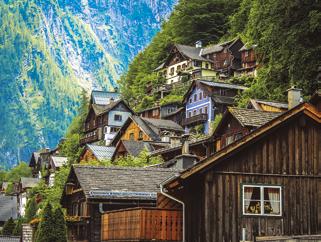
Weather:
High Season (Apr to Oct) Warm weather, busy. Shoulder (Mar – May & late Oct) Cool weather, quiet at times.
Low Season (Nov - Feb) Cold weather, few visitors. Ski resorts busy.
Eco fact: Austria ranks number 1 in Europe for organic farming. Over a of its agricultural land is dedicated to biological farming.
Eco resorts:
Budget: Boutiquehotel Stadthalle from £60 per night (Vienna).
Mid: Genießerhotel Die Forelle from £105 per night (Carinthia).
Luxury: Naturhotel Waldklause from £300 per night (Tirol).
Idioma: Alemán.
Moneda: Euro (EUR).
Capital: Viena.
Famoso por: Los Alpes austríacos. Cuna de la música clásica. Casa de los Habsburgo. Algunos de los mejores lugares: Explore los cafés, mercados, museos y palacios de Viena. Descubra los hermosos lagos y valles de la región de Salzkammergut. Visitar la famosa y pintoresca Salzburgo. Maravíllese con las magníficas cuevas de hielo de Eisriesenwelt. Disfrute del esquí y otros deportes de invierno en los Alpes austriacos. Disfrute de la hermosa Innsbruck y de emocionantes aventuras al aire libre en la región del Tirol. Recorrer el sendero de larga distancia y gran altitud Pinzgauer Spaziergang.Actividades: Deportes de invierno, rafting, kayak, arte y cultura, senderismo, festivales, escalada, gastronomía.
Clima:
Temporada alta (de abril a octubre) Tiempo cálido, con mucha actividad.
Temporada media (marzo-mayo y finales de octubre) Tiempo fresco, a veces tranquilo.
Temporada baja (Nov - Feb) Tiempo frío, pocos visitantes. Estaciones de esquí ocupadas. Hecho ecológico:
Austria ocupa el primer lugar en Europa en cuanto a agricultura biológica. Más de una de sus tierras agrícolas se dedica a la agricultura biológica. Resorts ecológicos:
Económico: Boutiquehotel Stadthalle desde 60 £ por noche (Viena).
Promedio: Genießerhotel Die Forelle desde 105 £ por noche (Carintia).
Lujoso: Naturhotel Waldklause desde 300 £ por noche (Tirol).
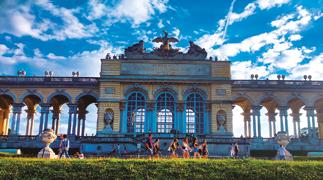
101 100
OTWO 29 / DECEMBER 2021 OTWO 29 / DECEMBER 2021






Back to school sustainable tips & essentials
It’s been a long ol’ summer. But the end is nearly in sight – crispy leaves on the ground and a chill in the air signals the imminent return to school for kids.
And with that, a collective sigh of relief from parents across the country who’ve had to entertain their little tornadoes of terror for Six. Whole. Weeks.

keep reading



Transport
Transporte disponible para grupos. Consultenos si estás interesado. OTWO es un mediador de estos paquetes. Todas las actividades se contratan directamente entre el operador y el cliente.
Precios válidos solo para el mes de diciembre, consulte para otras fechas.
OTWO 25 / AUGUST 2021 OTWO 24 / JULY 2021 Plastic Free • Carbon Footprint • Vegan & Cruelty Free Why Bamboo • Kind to Skin FOR MORE INFORMATION CLICK ON EACH SECTION
RANGE
Handy
Make-Up Cleansing
Straws, Shaker Straws, Baby Nappies. www.bamboopanda.gi Shop via our new website now live! Discounted Products, Monthly Subscription Services and more! The Future is Cheeky
PRODUCT
Toilet Roll, Kitchen Roll, Facial Tissue, Pocket Tissue, Baby Wipes, Anti-Bacterial
Wipes, Anti-Bacterial Surface Wipes,
Wipes,
103 Catálogo de Experiencias INVIERNO 21 WINTER CATALOG 21 OTWO 29 / DECEMBER 2021
by: OTWO Magazine Tel. +00350 22500799 info@otwomag.com
Organized
available for groups.Check with us for your requirements. OTWO is a facilitator on these packages. All activities are contracted directly between the respective centre operator and the client. Prices are for the month of December only, please contact us for other dates.
EBikes Group Tours

EBIKES GROUP TOURS
Gibraltar
Enjoy breath taking views across 3 countries and 2 continents, explore Gibraltar’s fascinating history and be introduced to our most famous inhabitants, the Barbary macaques – the only free roaming monkeys in Europe!
Price: £69 per person.
Highlights
Europa Point and Lighthouse. Upper Rock Nature Reserve.
Pillars of Hercules Monument.
Windsor Suspension Bridge. O’Hara’s Battery (top of Rock 424m). Skywalk.
Ape’s Den.
Great Siege Tunnels.
Moorish Castle. …And many more.
What’s included?
Premium e-bike by Riese&Müller. Cycle helmet.
Safety instructions.
Entrance fee into the Nature Reserve. An official tour guide. Bottled water.
DURATION:
3 hours. Suitable for everyone over 155 cm, over 12 years old and capable of riding a bicycle.
GROUP TOURS
Gibraltar
Disfrute de las impresionantes vistas de 3 países y 2 continentes, explore la fascinante historia de Gibraltar y conozca a nuestros habitantes más famosos, los macacos de Berbería, ¡los únicos monos que se desplazan libremente en Europa!
Precio: £69 por persona.
Puntos destacados
Punta de Europa y el Faro
Reserva Natural Upper Rock (Parte superior del peñon)
Monumento de las Columnas de Hércules
Puente colgante de Windsor
Bateria de O’Hara (parte superior del peñon - 424m).
El Skywalk
Guarida de los monos
Gran túneles de asedio
Castillo Arabé. …y muchos más
¿Qué está incluido?
Alta calidad E-bike de Riese&Müller. Casco de bicicleta
Instrucciónes de seguridad
Entrada a la reserva natural Guía oficial Agua embotellada.
DURACIÓN:
3 horas. Adecuadas para todos los que midan más de 155 cm, tengan más de 12 años de edad y puedan montar en bicicleta.
Organized by: OTWO Magazine
Tel. +00350 22500799
info@otwomag.com
Transport available for groups.Check with us for your requirements.
OTWO is a facilitator on these packages. All activities are contracted directly between the respective centre operator and the client.
Organized by: OTWO Magazine
Tel. +00350 22500799
info@otwomag.com
Transporte disponible para grupos.
Consultenos si estás interesado.
OTWO es un mediador de estos paquetes. Todas las actividades se contratan directamente entre el operador y el cliente.
105 104
Gibraltar
OTWO 29 / DECEMBER 2021 OTWO 29 / DECEMBER 2021
COASTEERING IN GIBRALTAR
What is Coasteering?
The activity of coasteering involves making you way along the coastline usually along steep cliffs and rocky outcrops. We use a variety of techniques that may include other outdoor activities such as walking, scrambling, climbing, jumping, abseiling (rappelling), and swimming.
Where do we meet?
We meet at the IN2ADVENTURES Sandy Bay Activity centre where we can start our activity enjoying our beautiful beach. We like our clients to use public transport if possible, in order to reduce our carbon footprint. Please get in touch if you need some advice.
What kind of equipment do you provide?
We provide all the technical equipment you will need for this activity; this is routinely inspected and is UIAA approved (Union International de Associaciones Alpinistas). You will be given a wet suit, safety helmet and climbing harness. Before we start, we will give all participants a comprehensive safety brief and how to use the equipment correctly.
How fit do I need to be?
An average level of mobility will help you enjoy the day. But this activity is easily tailored to any fitness level.
What is the minimum age that can come coasteering?
We recommend that children should be 9 or over for this activity. Please let us know if any of the participants are weak or non-swimmers.
What should I bring?
Old trainers that will get wet. Change of clothes. Towel. Sun Cream. Water.
If you have long hair, please tie it up but remember that you will need to put a helmet on. Avoid loose or dangly bits.
Can I bring my own kit and equipment?
Yes, but it will be inspected by the instructor to make sure it is serviceable and correct.
The standard route is as follows:
Start at the activity center, receive equipment induction and safety briefs. Walk a few hundred meters to the north end of the beach and climb the steps to the old cable platform where the group will abseil into the shoreline.
Follow the shoreline north towards Black Strap cove by scrambling over rocks swimming between pools and generally making progress. Continue north past the cove to ‘Frieda’ (the jump) this is an optional jump for those brave enough to do it.
After jumping climb up to the Zip line launch point.
Zoom along our amazing 100m line and arrive at the south end of Black Strap Cove.
At this point we make our way back to the Activity Centre, depending on time left and prevailing conditions either by wild swimming or walking or a combination of both.
What if the weather is bad?
We can usually continue regardless of the weather, only a really wild storm will stop us! Don’t worry we will let you know if we can go ahead or not. Your safety is our primary concern.
Do sessions ever get cancelled?
Whilst every attempt is made to ensure that activities go ahead, we will notify the client of cancellation as soon as practicable where we believe on reasonable grounds that cancellation is necessary due to dangerous and/or unsuitable conditions for the activity. We reserve the right to cancel, reschedule or amend any activity/trip due to safety reasons such as adverse weather or operating conditions. If we cancel your activity you will receive a full refund of any payments made.
Our instructors reserve the right to ask clients to leave if they are compromising the safety or enjoyment of the group.
Can I Cancel?
Of course, but an advance non-refundable deposit is required to confirm your booking.
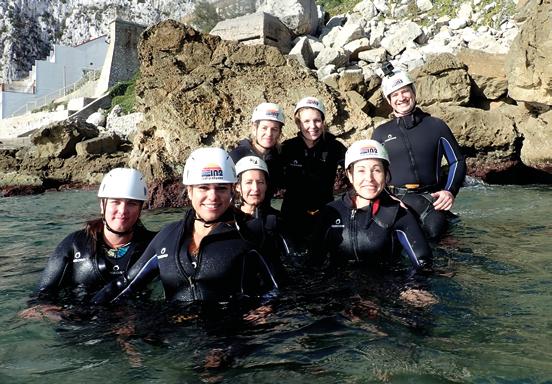

107 106 OTWO 29 / DECEMBER 2021 OTWO 29 / DECEMBER 2021
COASTEERING EN GIBRALTAR
¿Qué es Coastering?
La actividad deportiva de Coastering, conlleva aventurarse en un recorrido costero combinando acantilados escarpados y formaciones rocosas. Utilizamos una variedad de técnicas que pueden incluir diversas actividades al aire libre como travesía, escalada, saltos de altura, rápel, natación y buceo.
¿Dónde nos reunimos?
Nos congregamos en el centro de actividad de IN2ADVENTURES Sandy Bay, donde comenzamos nuestra actividad disfrutando de la hermosa playa. Nos complace que nuestros clientes - de ser posibles- utilicen el transporte público, con el fin de reducir nuestra huella de carbono. Contacte con nosotros si necesita consejo sobre ello.
¿Qué tipo de equipo proporcionan?
Facilitamos todo el equipo técnico que necesitará para practicar el coastering. Un instrumental que se inspecciona de forma rutinaria y que está aprobado por la UIAA (Unión Internacional de Asociaciones Alpinistas). Se le suministrará un traje de neopreno, casco de seguridad y arnés de escalada. Antes de empezar, daremos a todos los participantes instrucciones completas de seguridad y de cómo utilizar el equipo correctamente.
¿Qué forma física debo tener?
Un nivel medio de movilidad le ayudará a disfrutar del día. Pero esta actividad se adapta fácilmente a cualquier condición física.
¿Cuál es la edad mínima para practicar coastering?
Recomendamos que los niños hayan cumplido los nueve años o más para esta actividad. Si alguno de los participantes es más enclenque o no sabe nadar, rogamos que nos lo hagan saber.
¿Qué debo llevar?
Viejas zapatillas de deporte, porque se mojarán. Muda de ropa, toalla, protector solar y agua. Si tiene el pelo largo, por favor recójalo, recordándole que debe llevar casco. No dejar ningún mechón ni prenda que incomode o estorbe.
¿Puedo llevar mi propio equipo?
Sí, pero será inspeccionado por el instructor para asegurarse de que es útil y se encuentra en perfectas condiciones.
ILa ruta estándar es la siguiente: Nos reunimos en el centro de actividades, donde se
imparte la información de seguridad sobre el equipo y se le coloca a cada participante. Se inicia la travesía de unos cientos de metros hacia el extremo norte de la playa y subimos las escaleras hacia la antigua plataforma de cable, donde el grupo realizará rápel hasta la costa.
Avanzamos por la costa hacia el norte, dirigiéndonos a la cala Black Strap, escalando sobre rocas, nadando entre piscinas y progresando por la ruta de aventura. Seguimos hacia el norte pasando la cala hasta ‘Frieda’, donde los más valientes podrán realizar un salto de altura.
Después de saltar, subiremos hasta el punto de lanzamiento de la tirolina. Entonces, enfilaremos los cien metros de tirolina hasta llegar al extremo sur de Black Strap Cove.
En este punto volvemos al Centro de Actividades, dependiendo del tiempo que quede y de las condiciones en las que se encuentre el grupo, bien por la natación salvaje o la caminata o por la combinación de ambas.
¿Y si el tiempo es malo?
Por lo general podemos continuar independientemente del clima, ¡sólo una tormenta realmente salvaje nos detendrá! No se preocupes, le avisaremos si podemos seguir adelante o no. Su seguridad es nuestra principal preocupación.
¿Alguna vez se cancelan las sesiones?
Se hace todo lo posible para garantizar que las actividades salgan adelante, aunque notificaremos al cliente la cancelación tan pronto como sea posible, cuando creamos por motivos razonables la necesidad de suspensión debido a condiciones peligrosas y / o inadecuadas para la actividad. Nos reservamos el derecho de cancelar, reprogramar o modificar cualquier actividad/viaje por razones de seguridad como condiciones climáticas adversas o condiciones de funcionamiento. Si cancelamos su actividad, recibirá un reembolso completo de los pagos realizados.
Nuestros instructores se reservan el derecho de pedir a los clientes que abandonen el grupo, si están comprometiendo la seguridad o el disfrute de los participantes.
¿Puedo cancelar?
Por supuesto, pero se requiere un depósito no reembolsable por adelantado para confirmar su reserva.
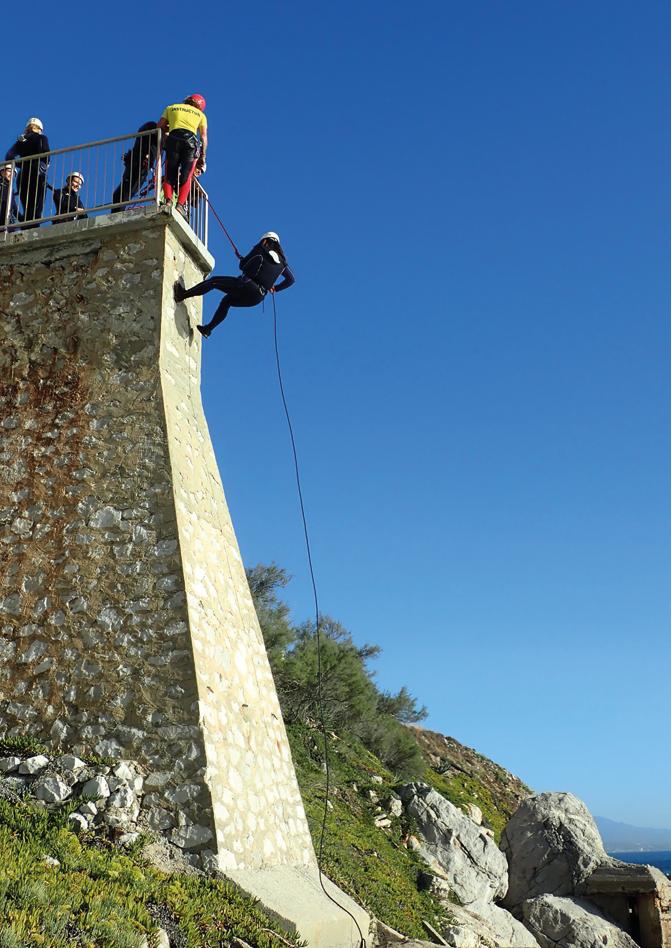
108 OTWO 29 / DECEMBER 2021
ADVENTURE IN THE SIERRA DE GRAZALEMA HIKING "EL PINSAPAR"

Our adventure takes place in one of the most famous natural parks of Andalusia: Sierra de Grazalema Natural Park.
Located in the heart of this park, on the northern slope of the Sierra del Pinar where the necessary climatic conditions for their development are found. They grow between 100 and 1800m high, reach up to 30 meters, and can live up to 400 years. Together with the Llanos de Rabel, they form the largest forest of Pinsapos in the world.
The Trail
Our trail begins in the place known as Las Canteras or Los Areneros, 2 km from Grazalema. We begin to ascend among pine trees until we reach El Puerto de las Cumbres (1,250 m) from where we can see the Serrania de Ronda and El Torreon, the highest peak in the province of Cadiz.
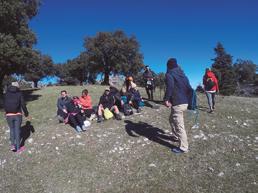
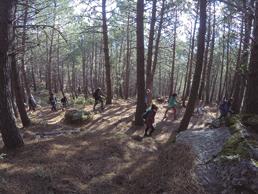
From here, we begin to descend until we reach the forest of Spanish firs. We continue descending until we reach the Puerto del Pinar where the Pinsapar gives way to the Mediterranean forest. Here we will rest and eat something because we will be on the way back and we have to regain strength.
Duration: 4 to 5 hours.
Minimum/Maximum number of participants: 8/15 participants.
Recommended Dates:
Fall, winter and early spring.
Services
Specialized Instructors and equipment: First aid kit.
RC and Accident Insurance.
Photographic report.
Price: Complete adventure……….15€
111 110
OTWO 29 / DECEMBER 2021
AVENTURA EN LA SIERRA DE GRAZALEMA SENDERISMO «EL PINSAPAR»
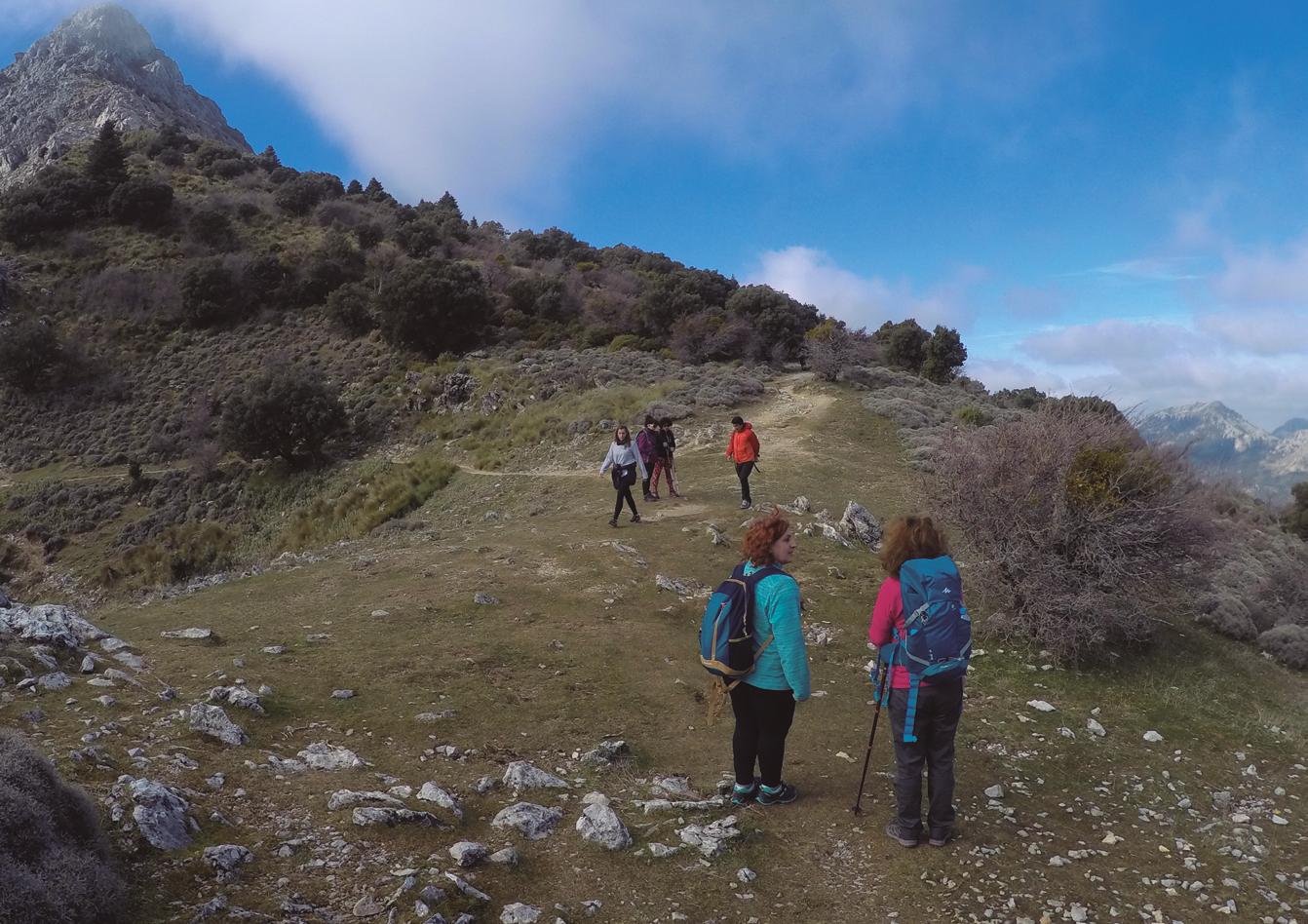
Nuestra aventura se realiza en uno de los parques naturales más conocidos de Andalucía: Parque Natural Sierra de Grazalema.
Situado en el corazón del este Parque, en la ladera norte de la Sierra del Pinar donde se dan la condiciones climatológicas necesarias para su desarrollo. Crecen entre 100 y 1800m de altura y llegan a mediar hasta 30 metros pudiendo vivir hasta 400 años.
Junto con los Llanos de Rabel, forman el mayor bosque de Pinsapos del mundo.
El Sendero
Nuestro sendero comienza en el lugar conocido como Las Canteras o Los Areneros a 2 km de Grazalema. Comenzamos a ascender entre pinos de repoblación hasta llegar a El Puerto de las Cumbres (1.250 m) desde donde podremos divisar la Serranía de Ronda y El Torreón, el pico más alto de la provincia de Cádiz.
Desde aquí comenzamos a descender hasta llegar al bosque de pinsapos. Continuamos descendiendo hasta llegar al Puerto del Pinar donde el Pinsapar deja paso al bosque mediterráneo. Aquí descan-

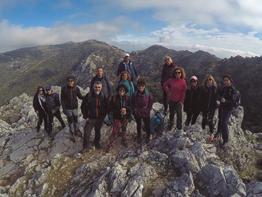
saremos y comeremos algo ya que nos quedará el camino de vuelta y hay que reponer fuerzas.
Duración: 4 a 5 horas.
Mínimo/Máximo de participantes: 8/15 participantes.
Fechas Recomendadas:
Otoño, invierno y principios de la primavera.
Servicios:
Monitores y equipos especializados. Botiquín primeros auxilios.
Seguros RC y Accidentes. Reportaje fotográfico.
Precios: Aventura completa……….15€
113 112
OTWO 29 / DECEMBER 2021 OTWO 29 / DECEMBER 2021


SUSTAINABLE TIPS FOR THE FESTIVE SEASON
Wrap Consciously– used newspapers are an excellent alternative and look fab with twine too!
Make your own presents– your time, thoughtfulness and effort will be appreciated.
Find out the provenance of what you buy– choose ethical, sustainable gifts.
Plan left over food– there are many local soup kitchens and centres that will benefit from good homemade food.
Take your own reusable bags- place them in your bag when heading down to the shops for your Christmas shopping.
Reduce the amount of waste- buy the necessary, there’s no need to over indulge.
Keep it local– reduce the carbon footprint by purchasing in Gibraltar.
Let’s avoid landfill– make sure you recycle all you can over this festive period.
Check out our local artisans stalls–there is much benefit in these hand crafted eco gifts.
Let’s bestow our Bay with a gift with Christmas too!















































































































































